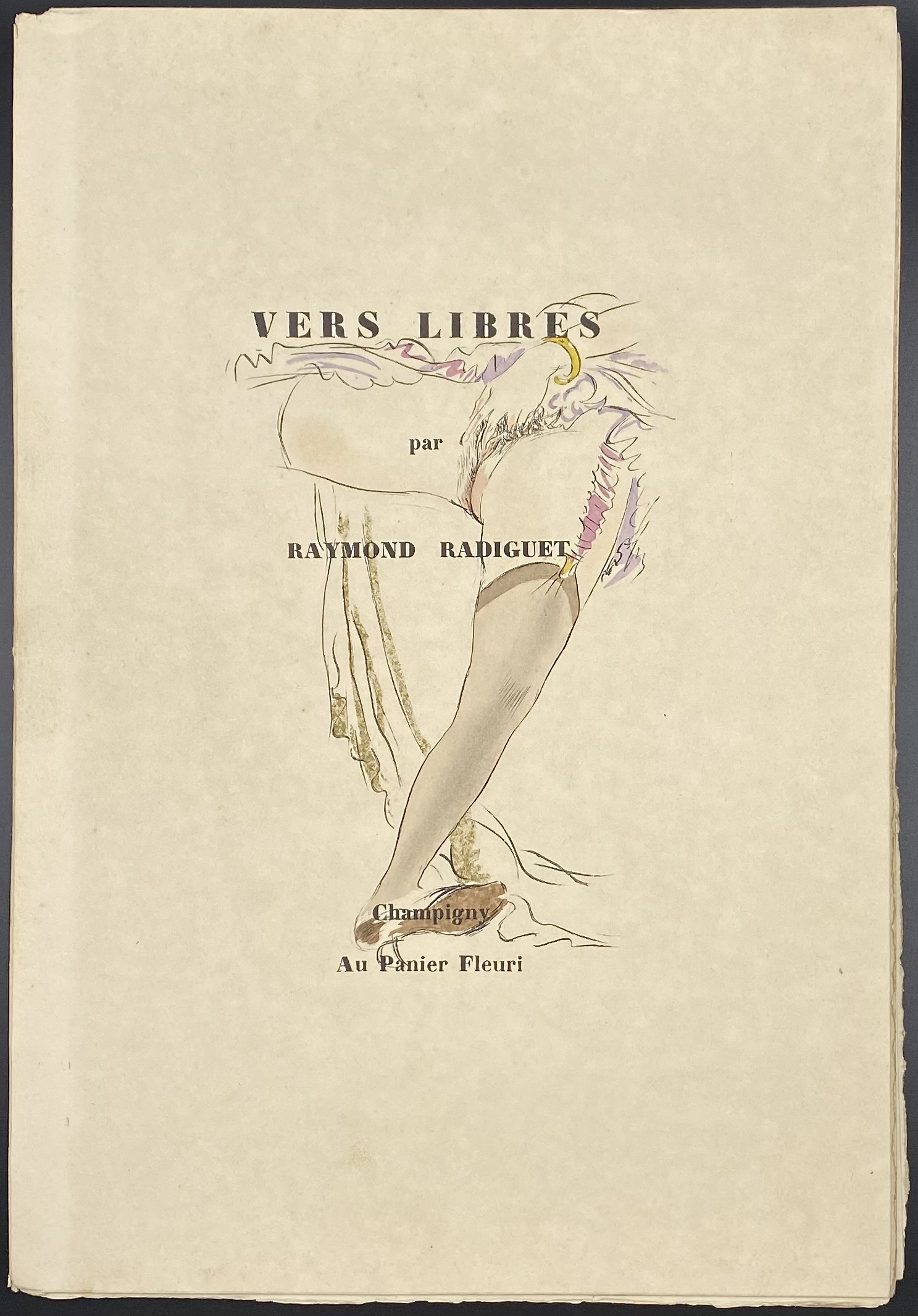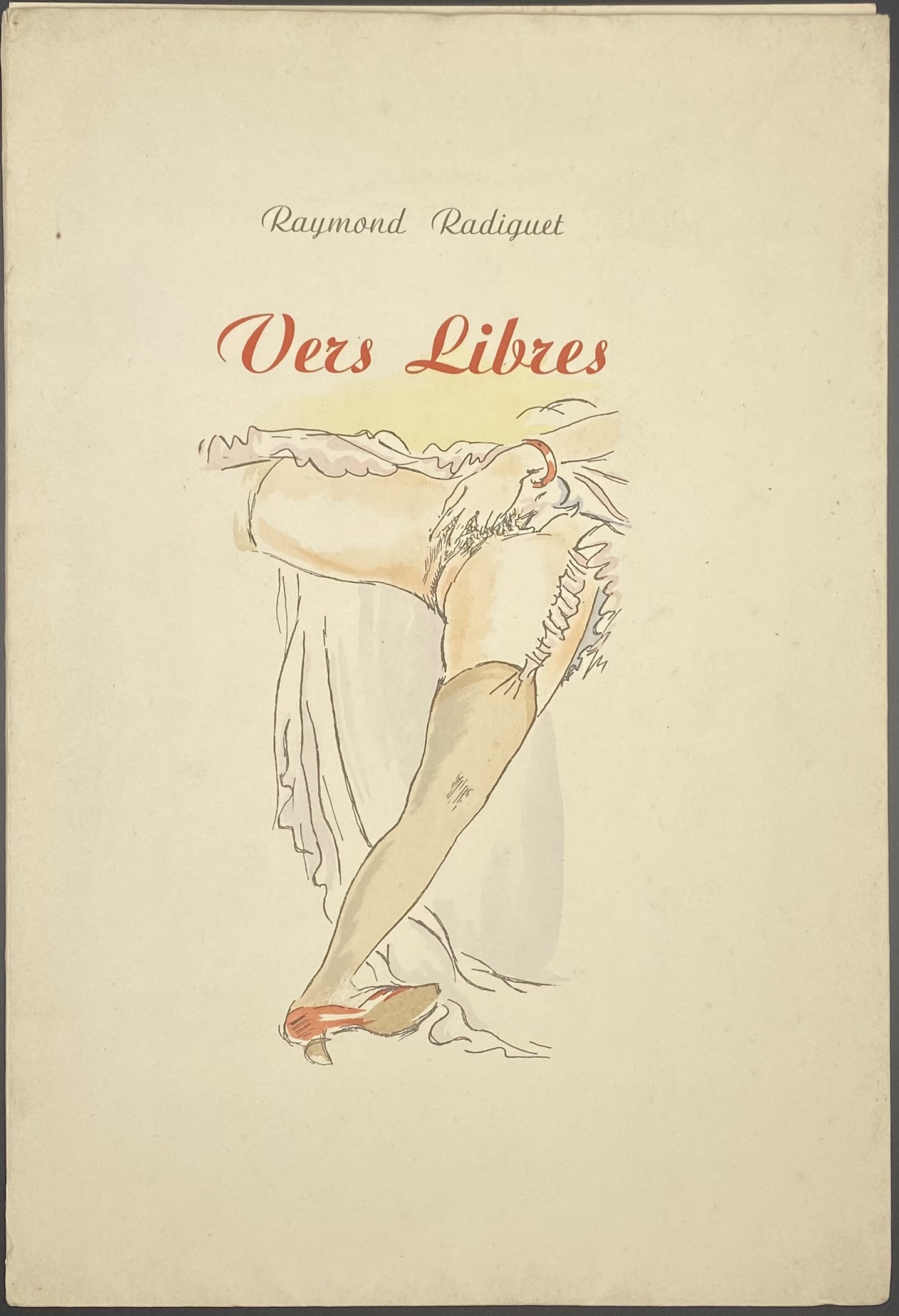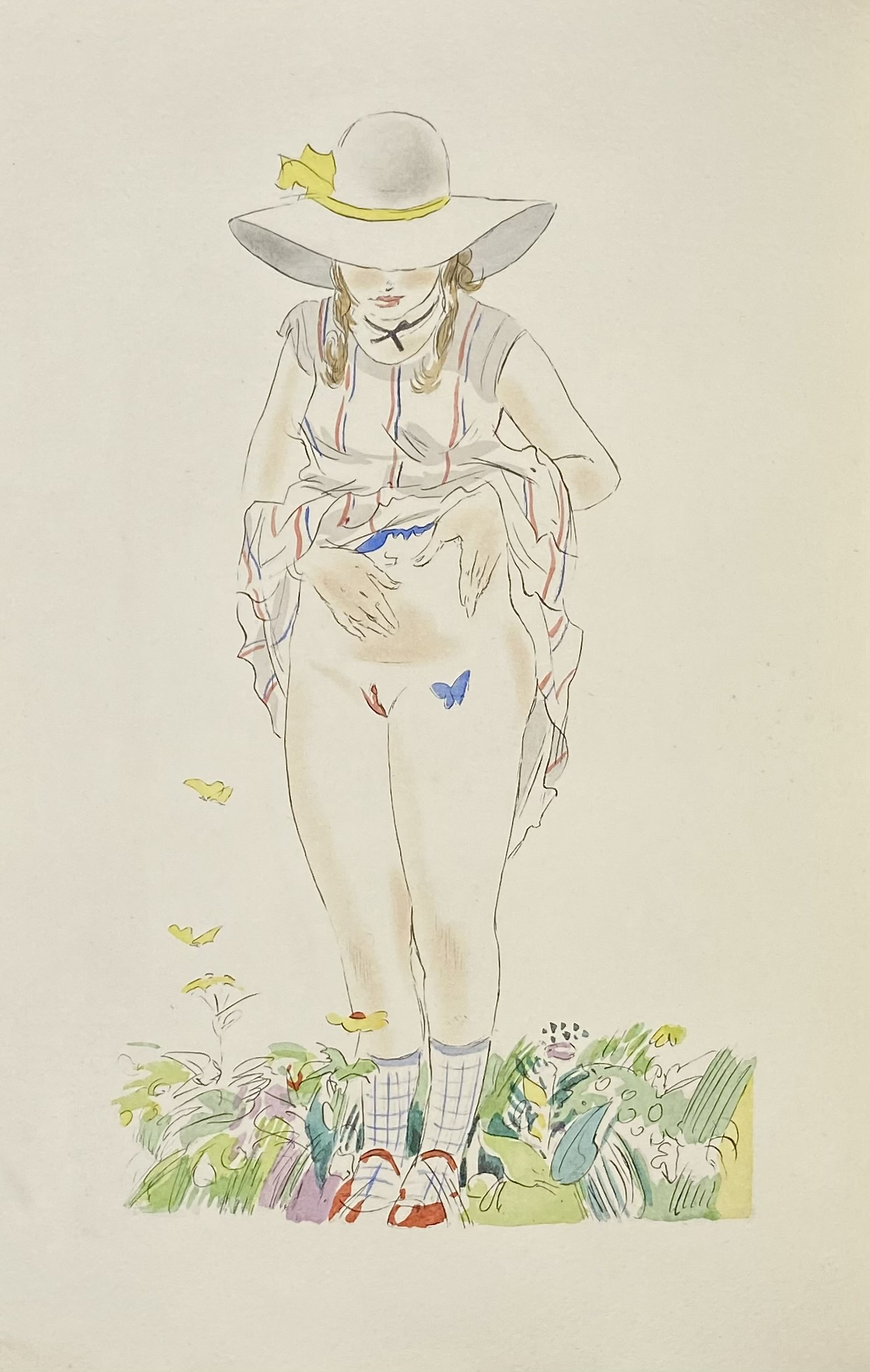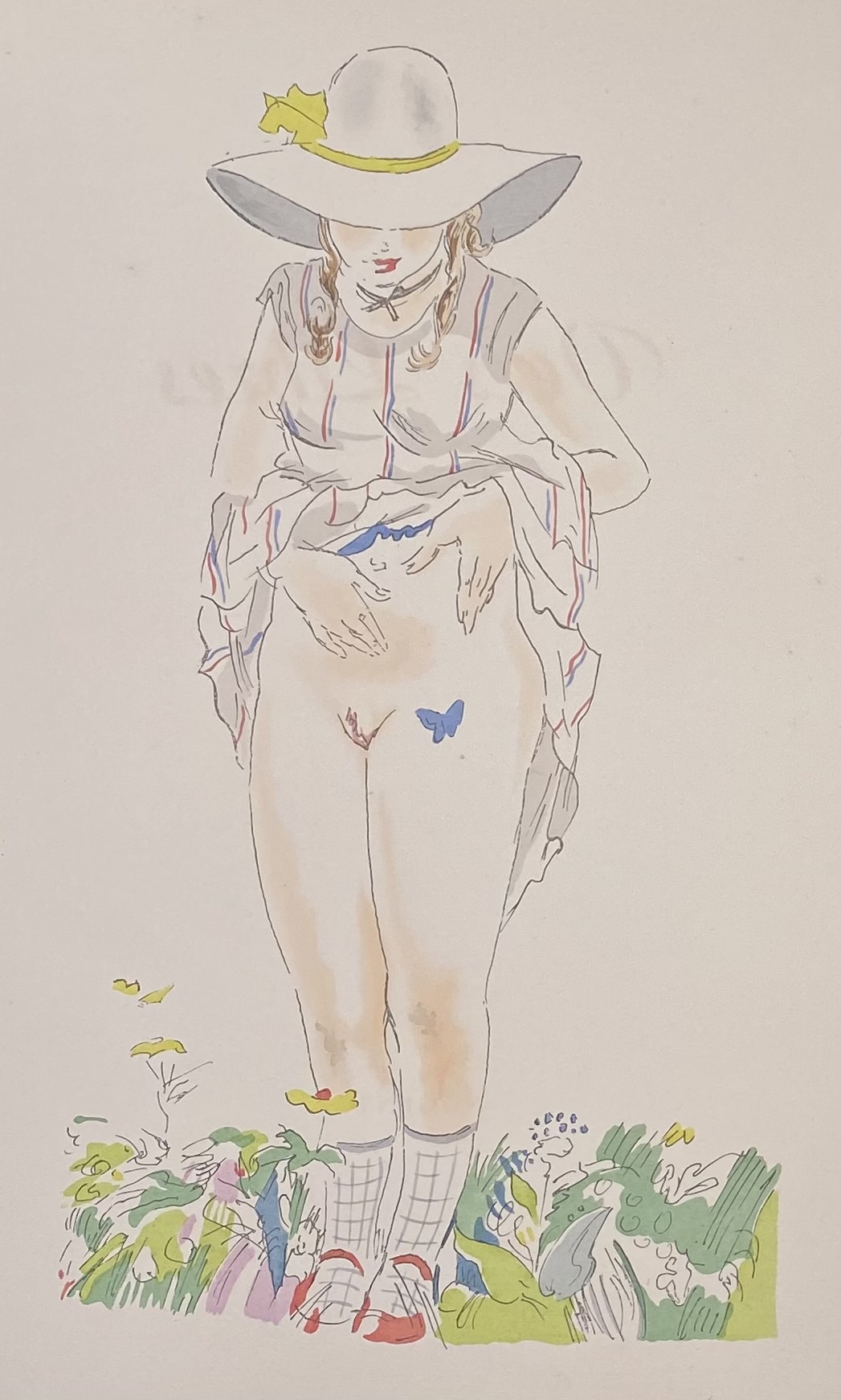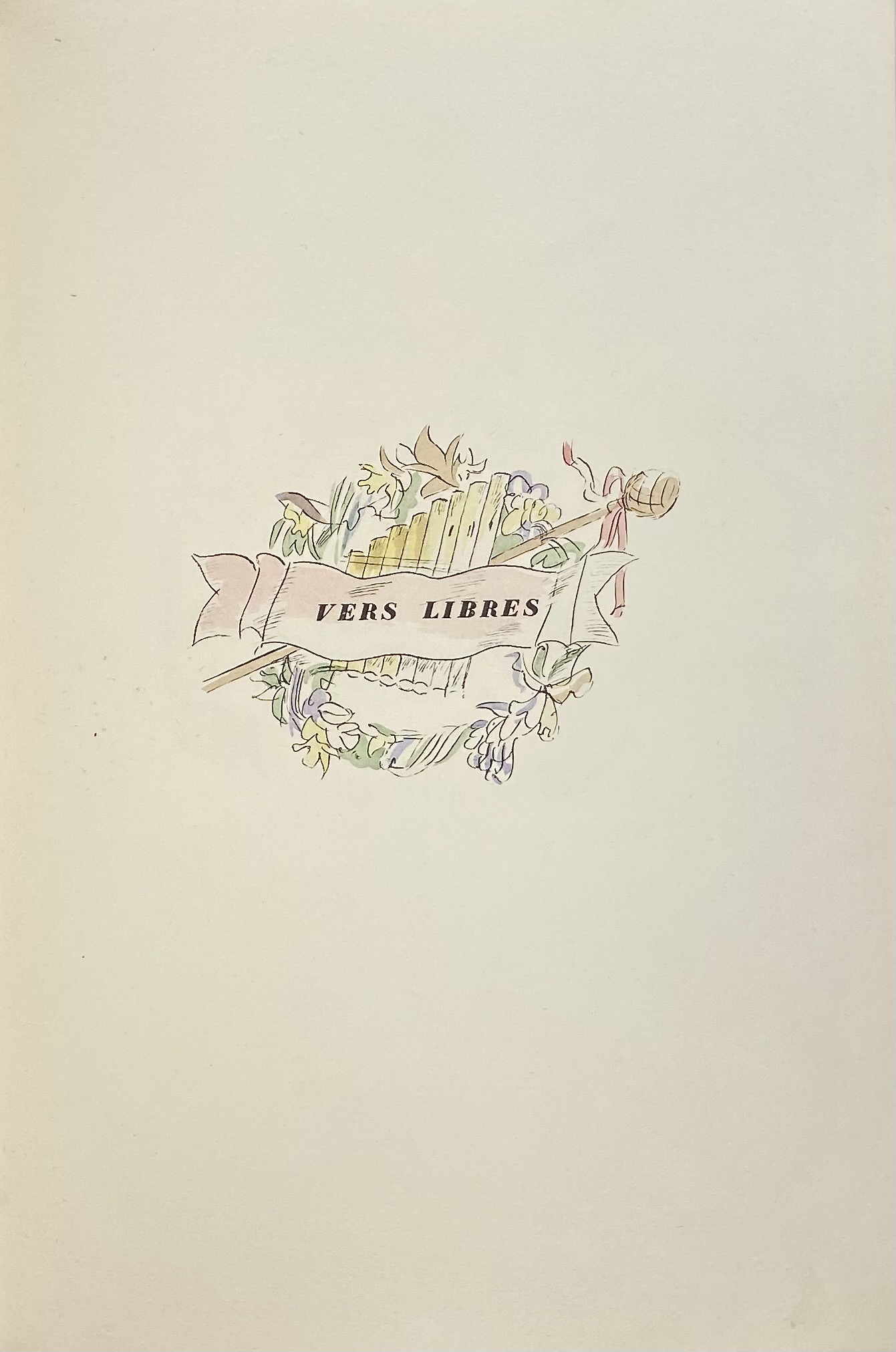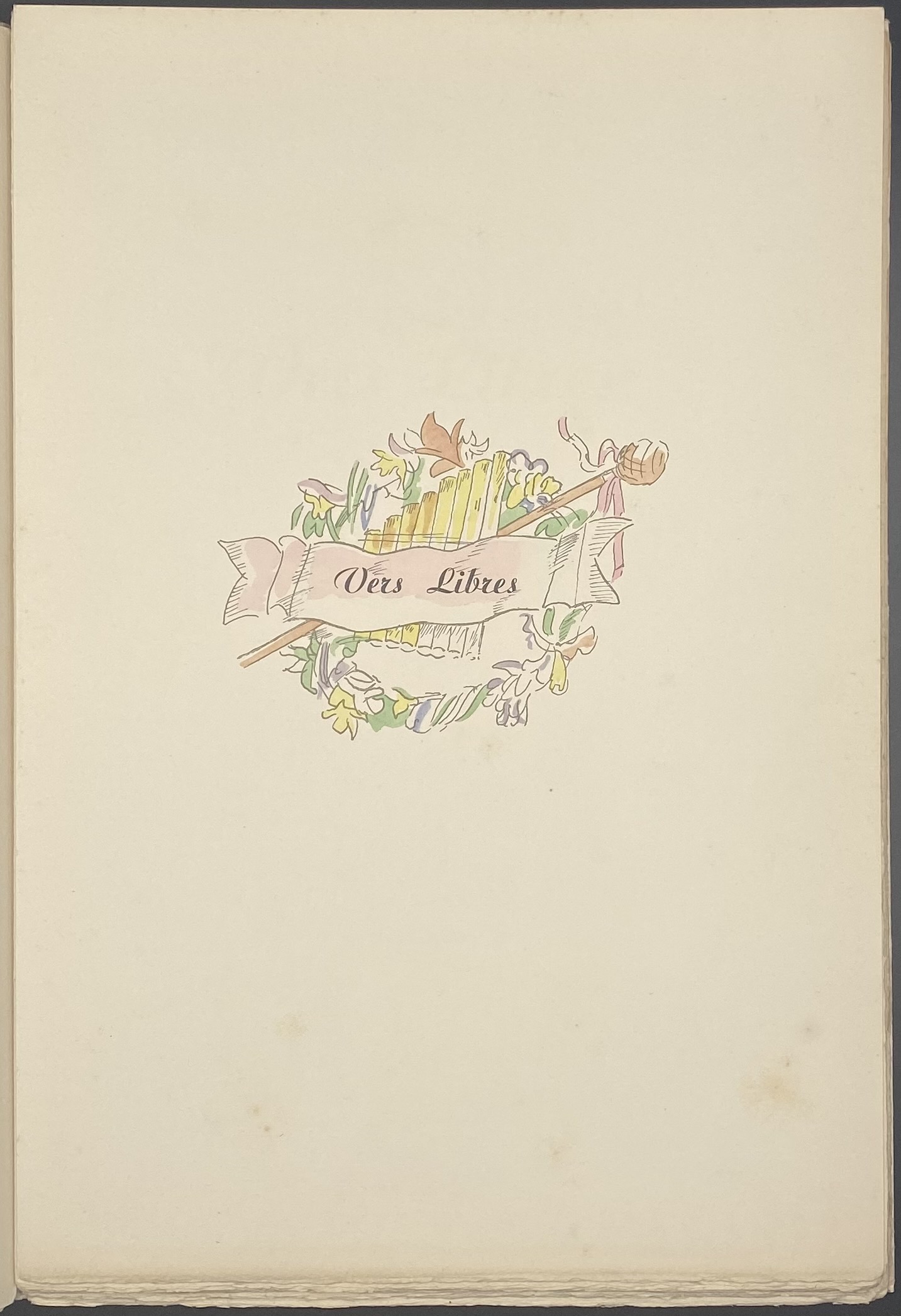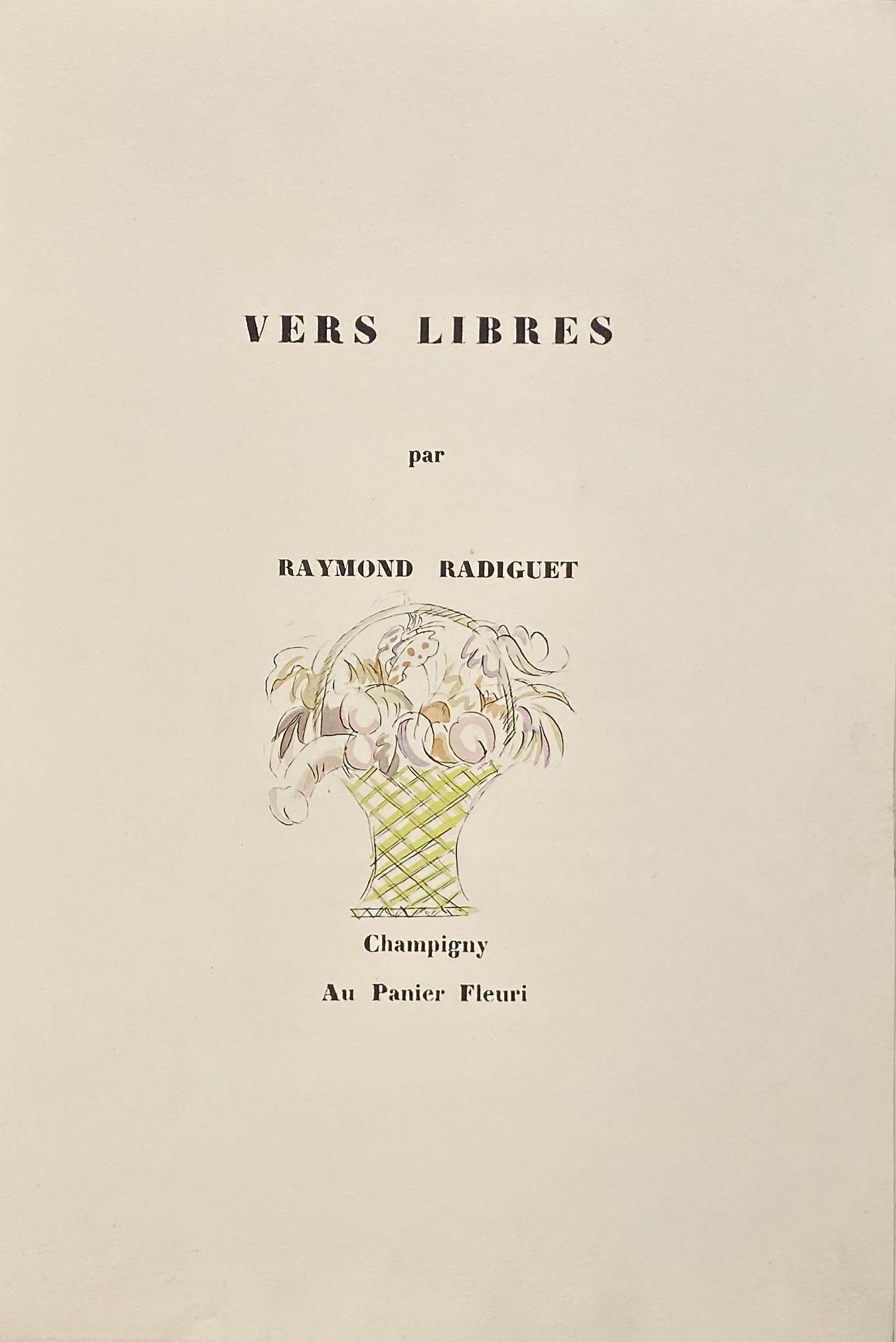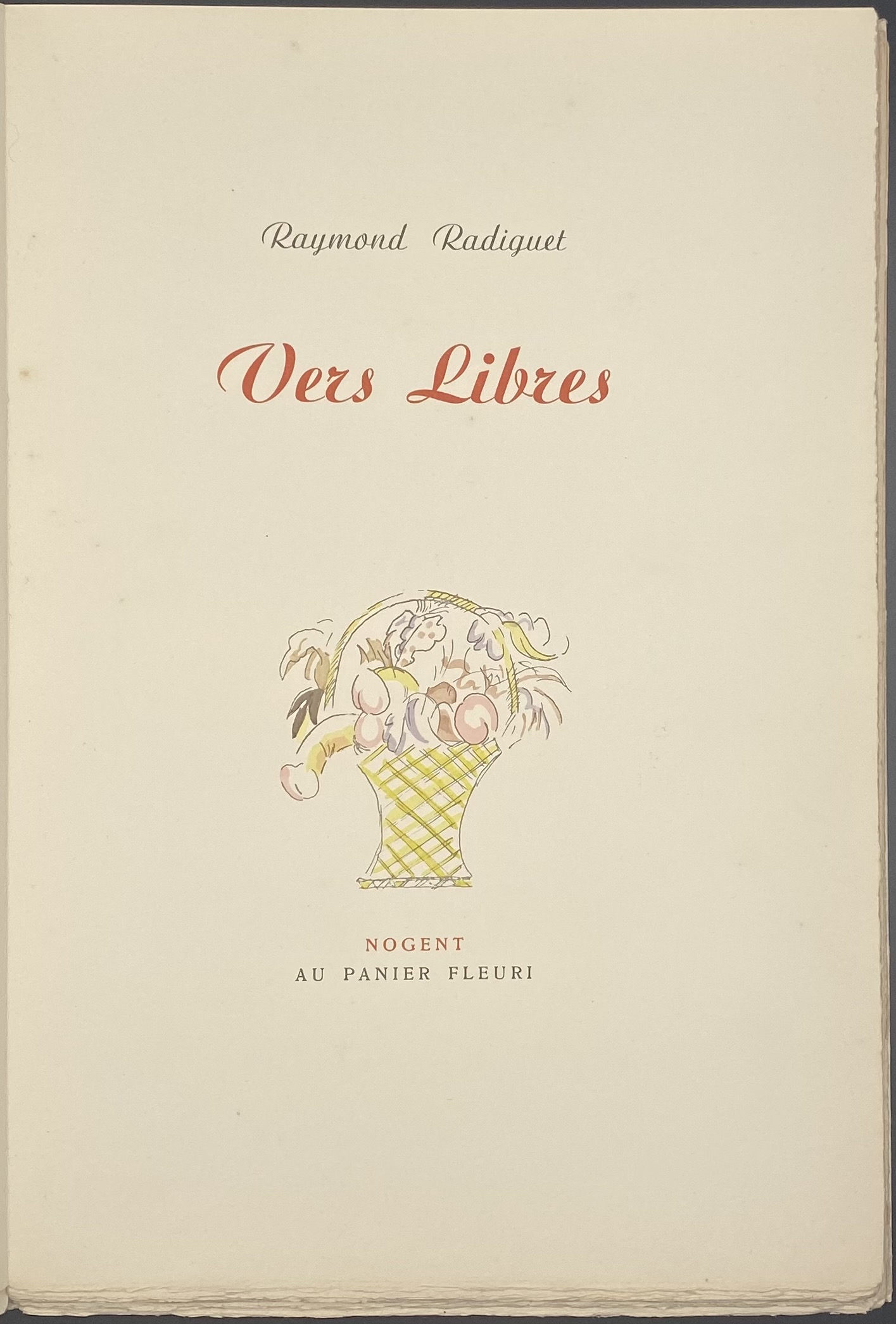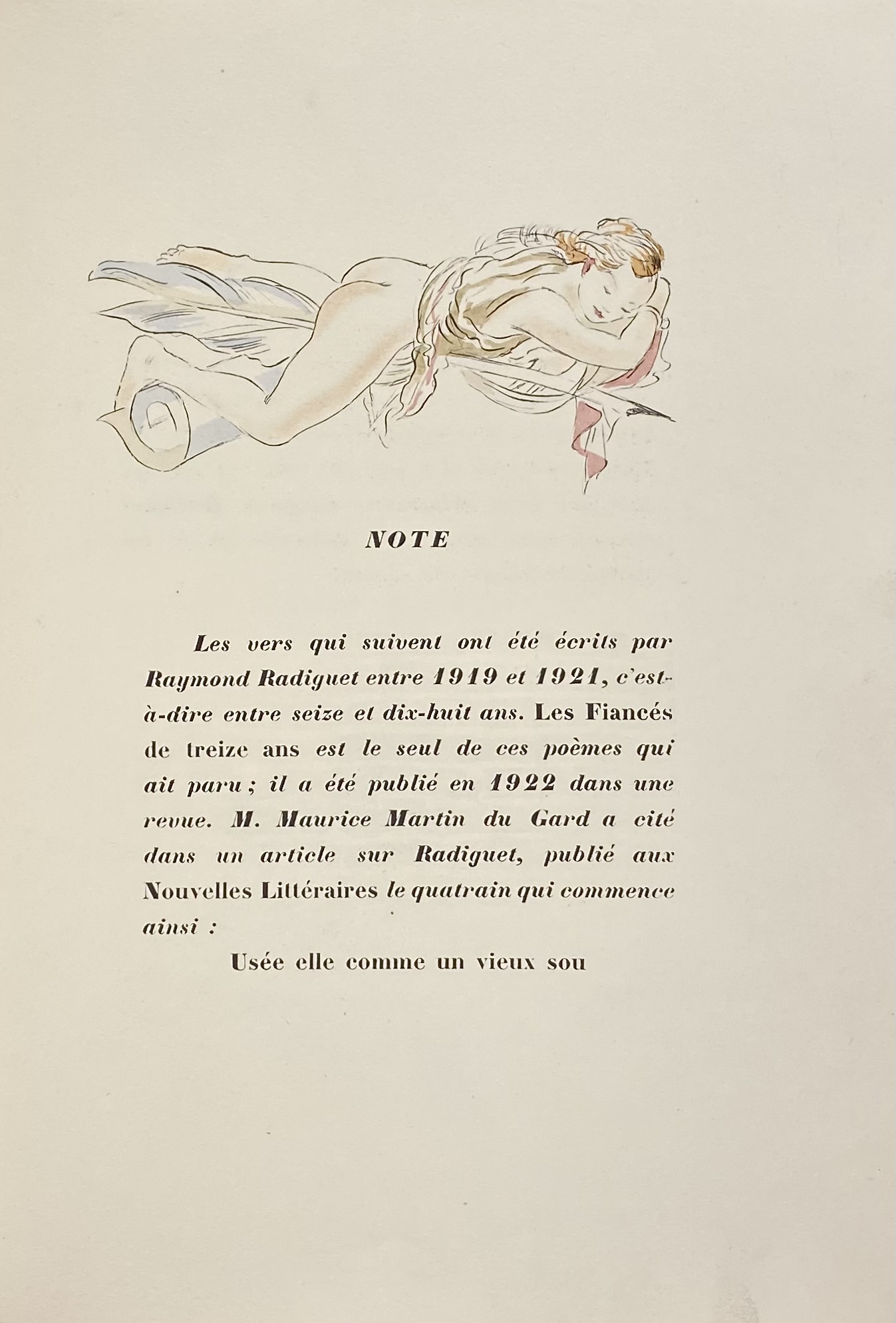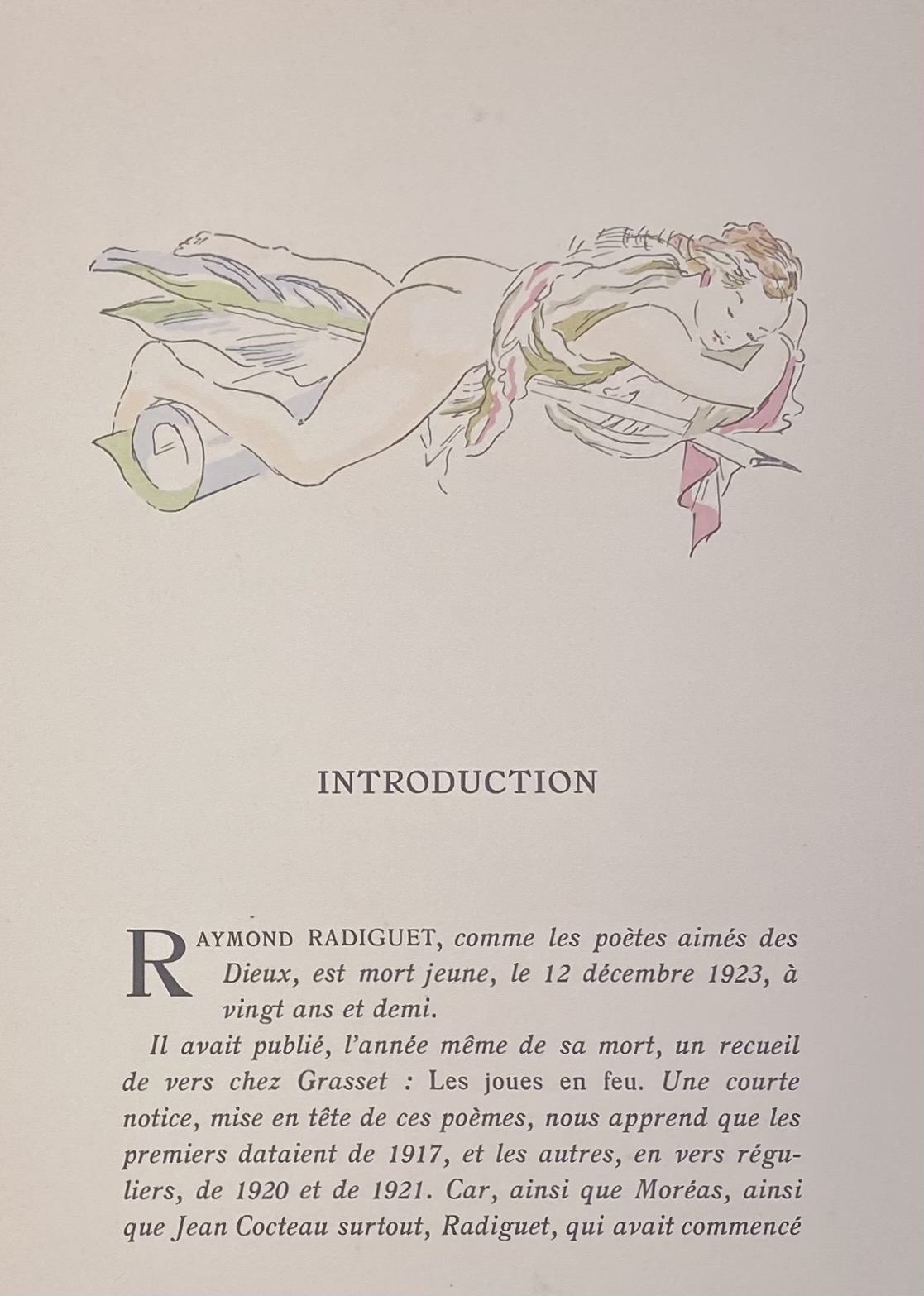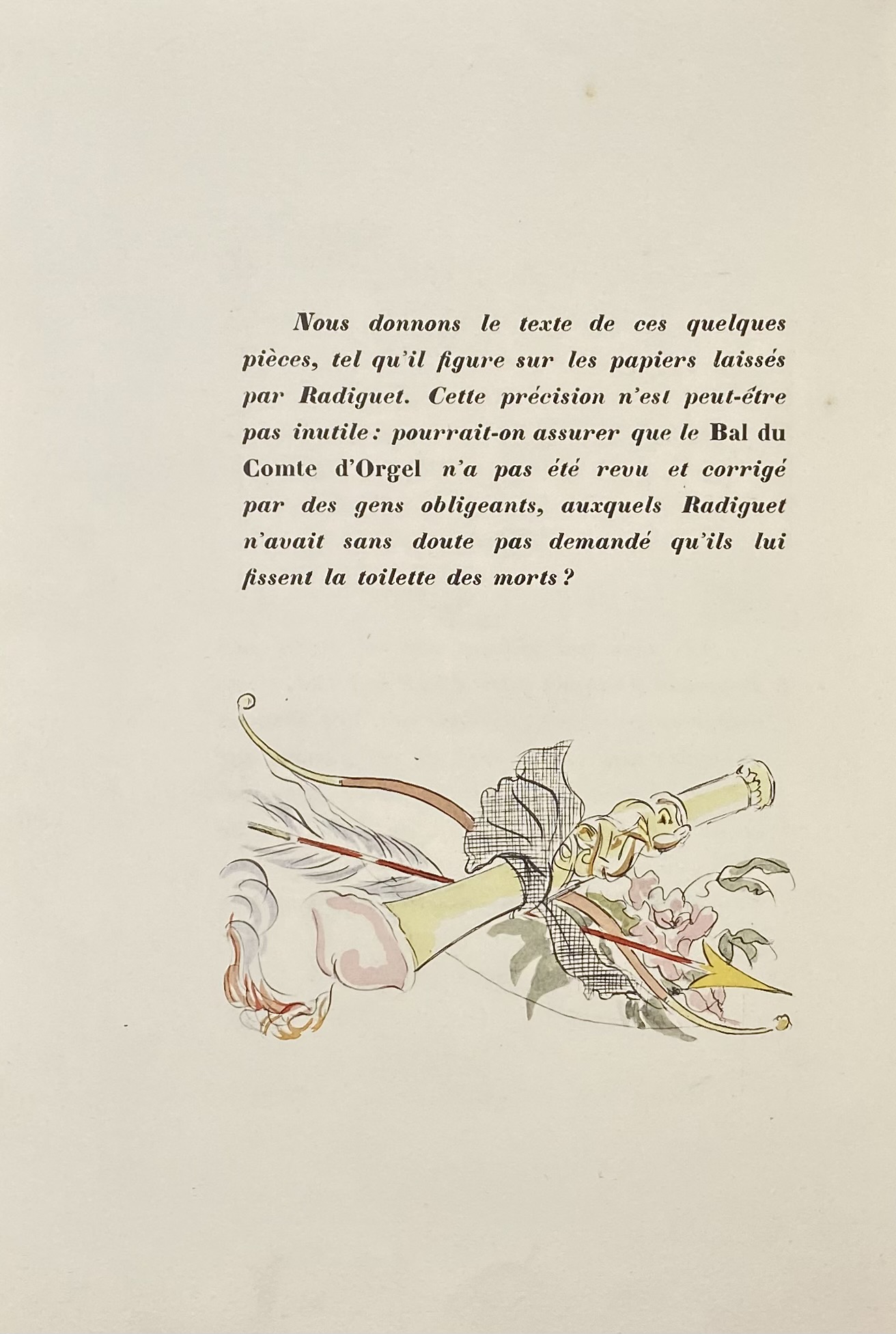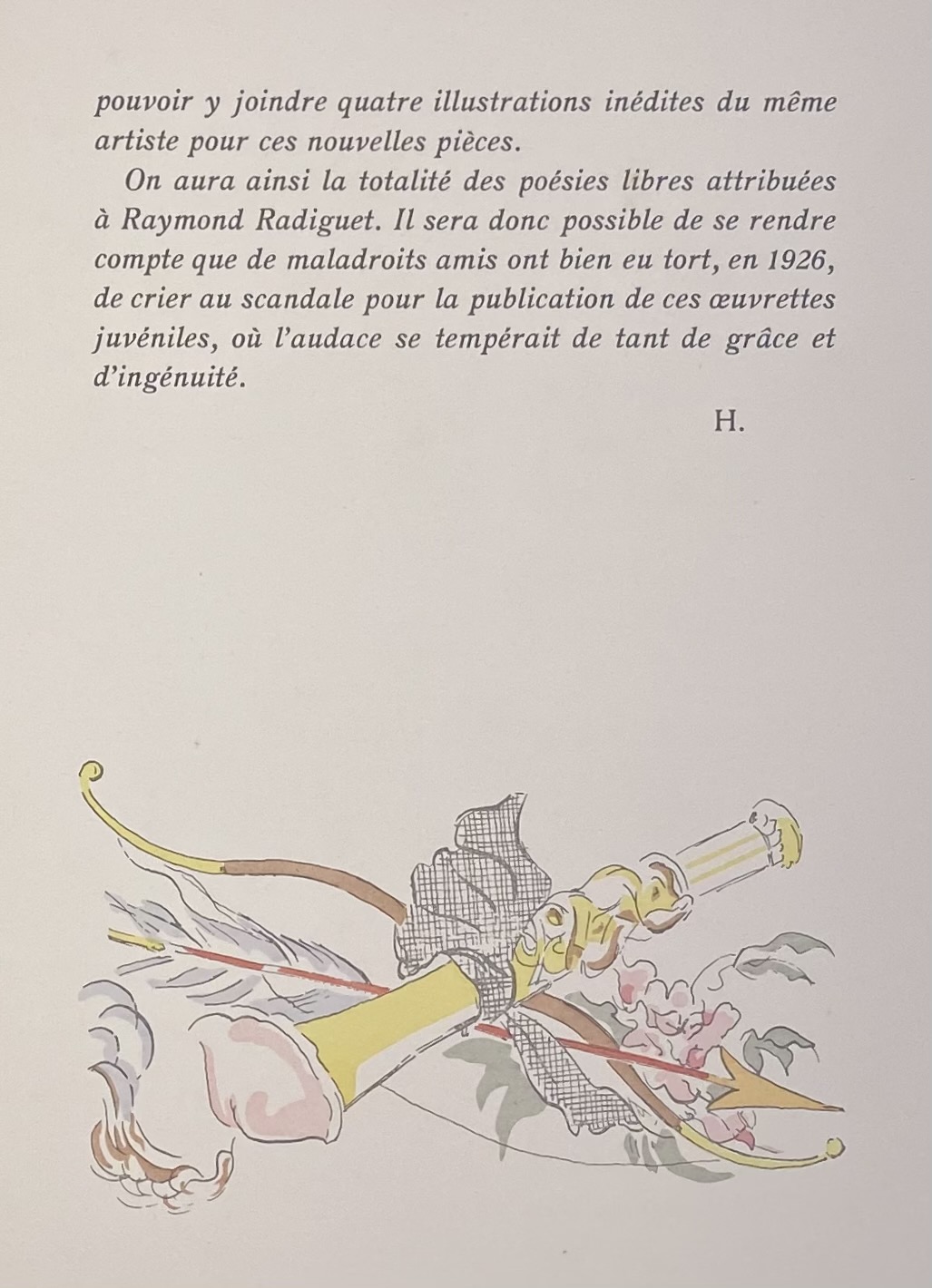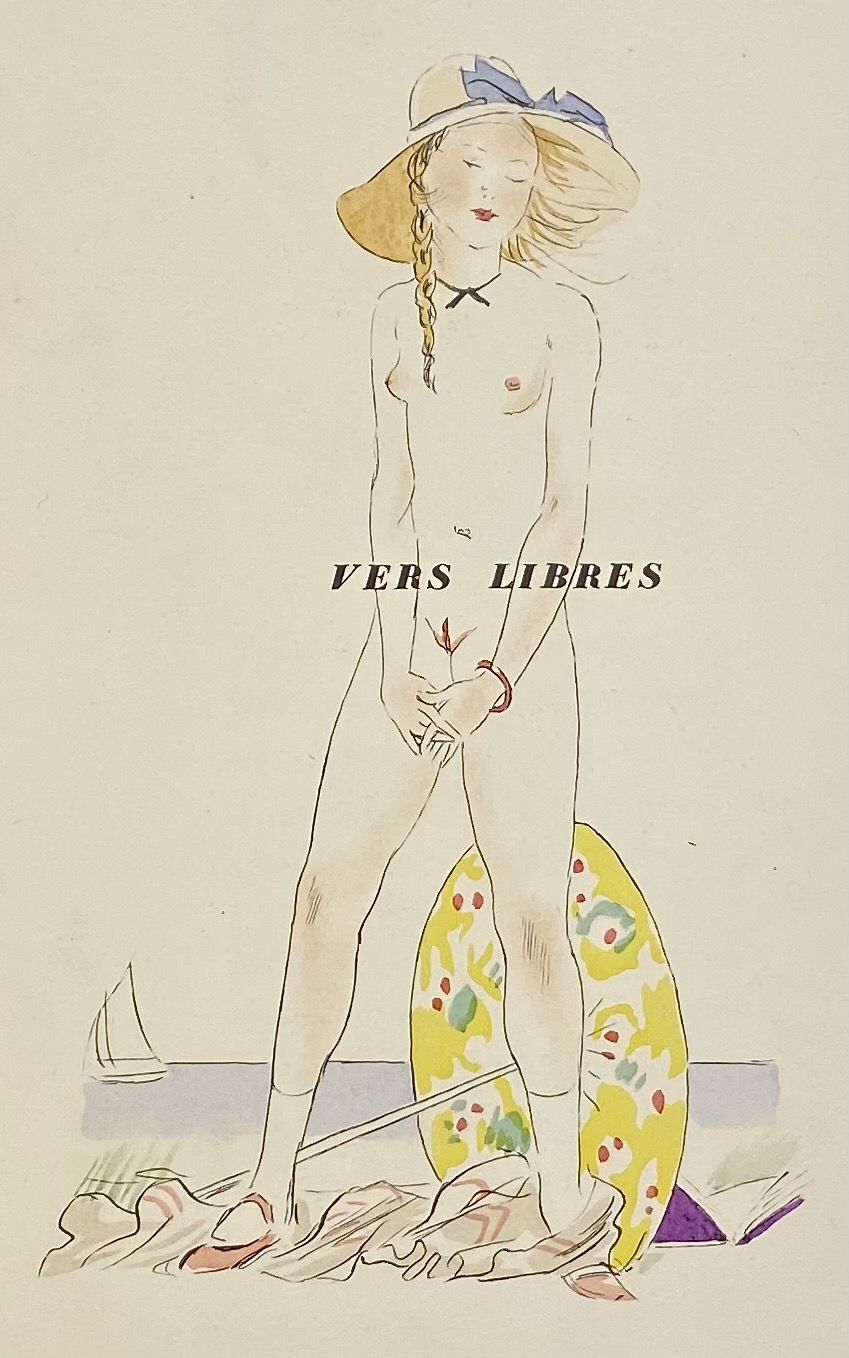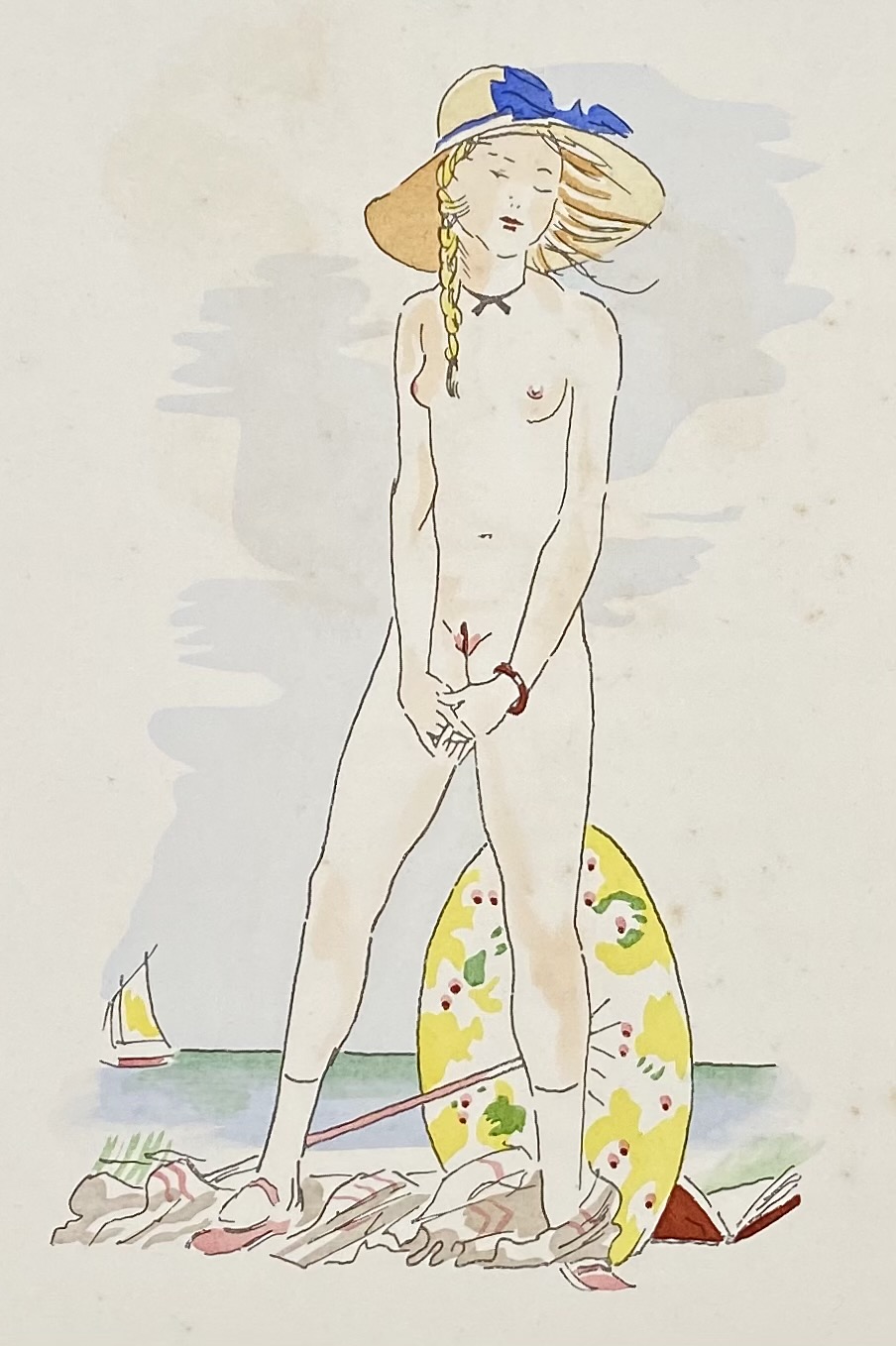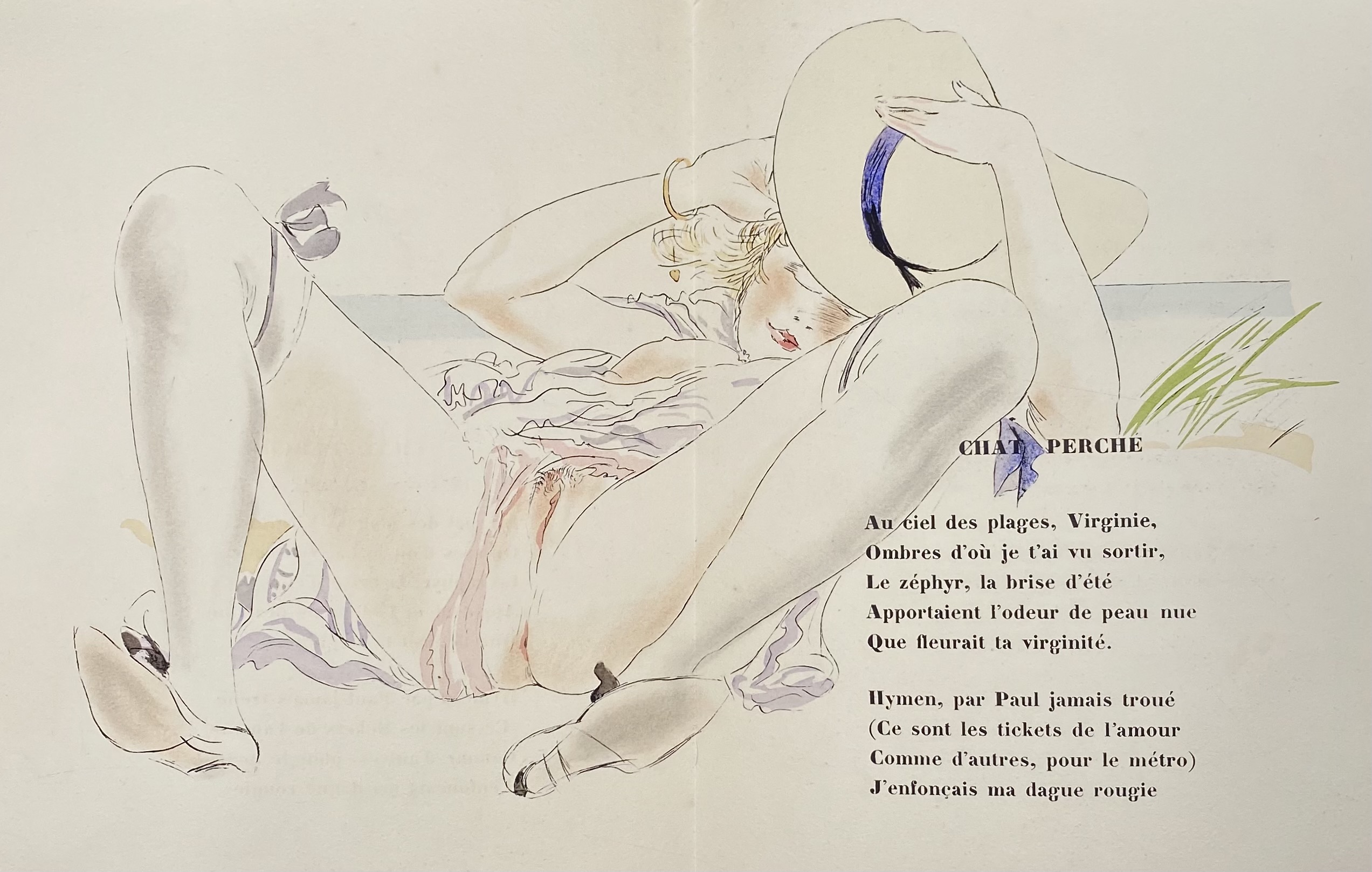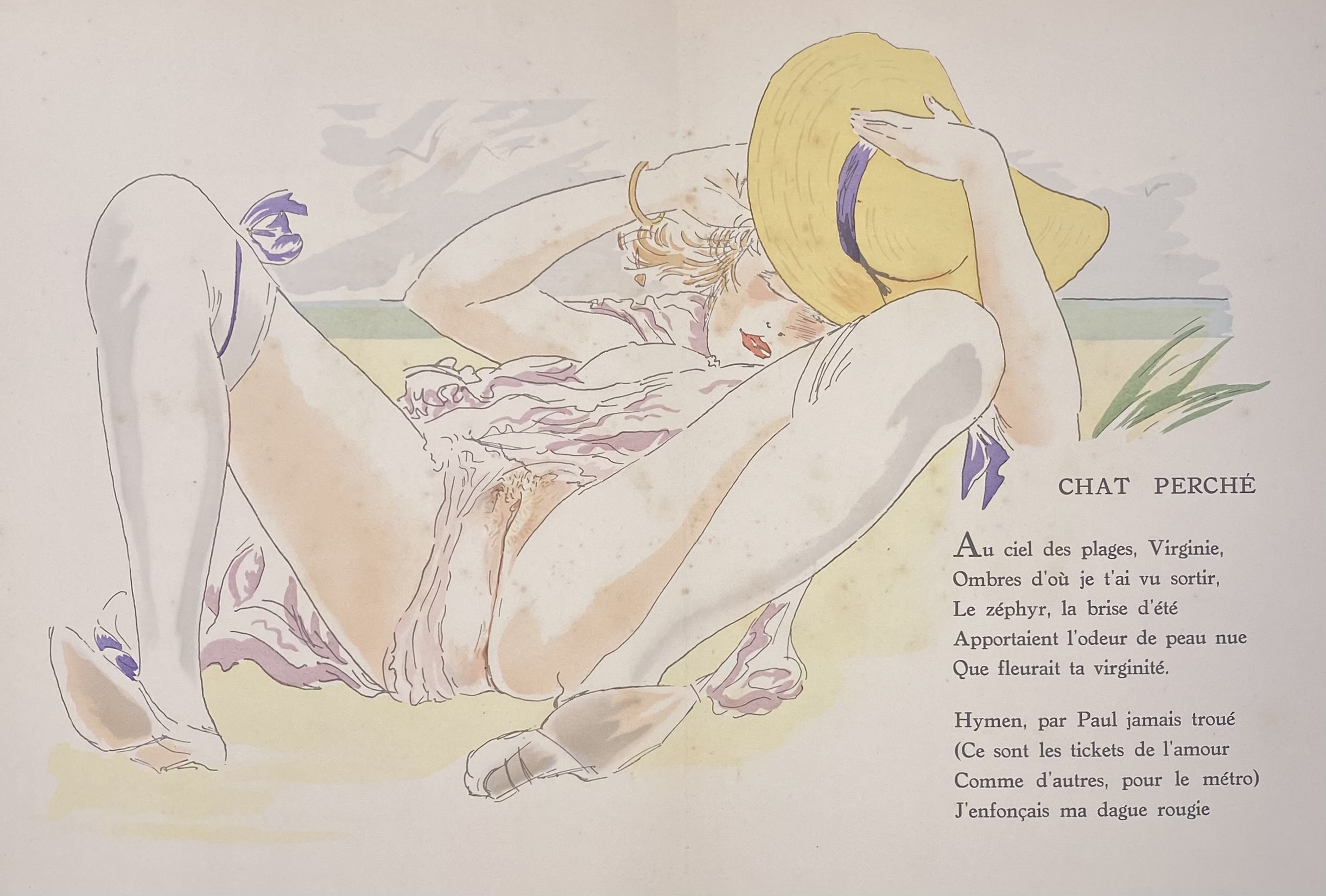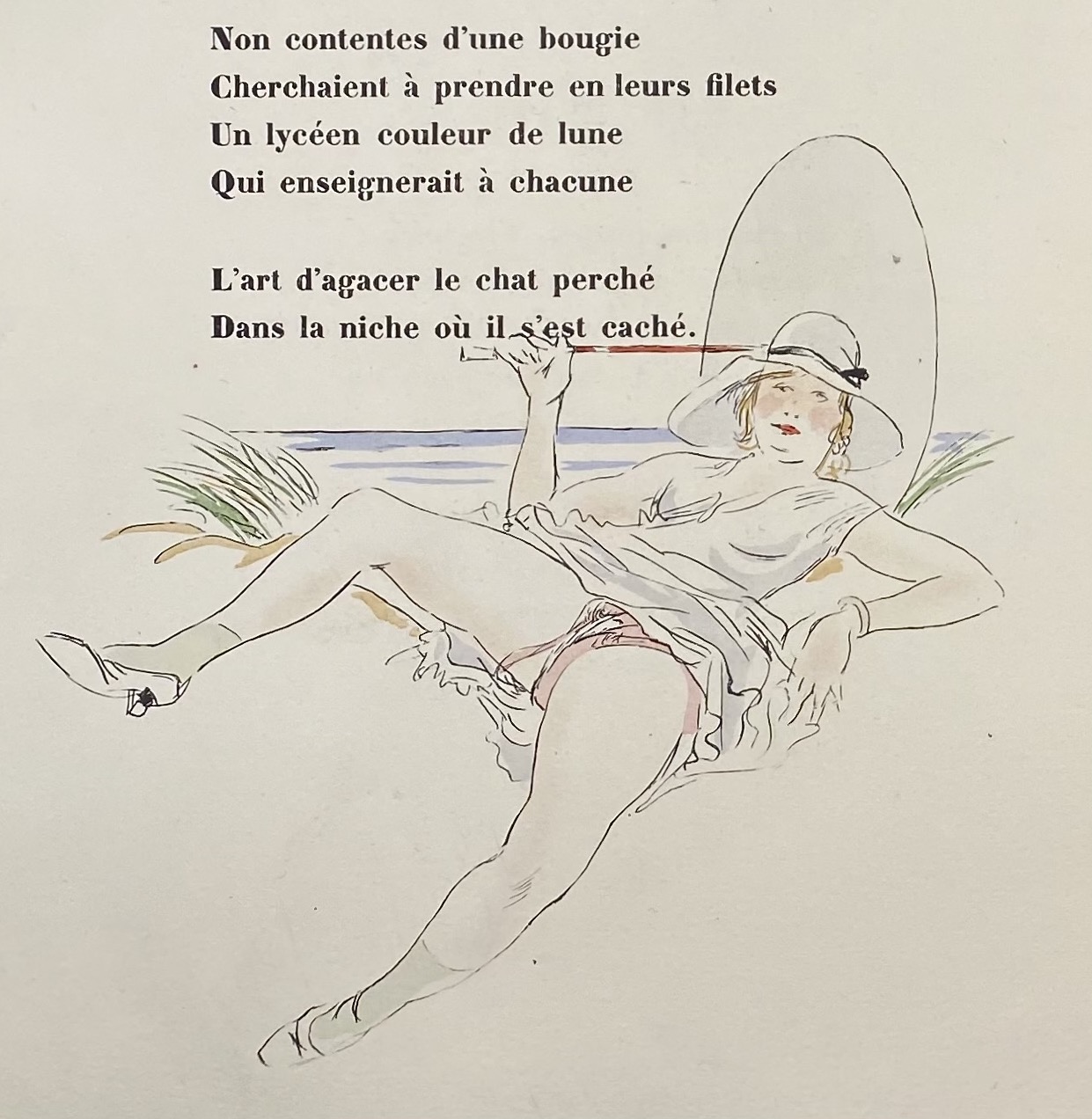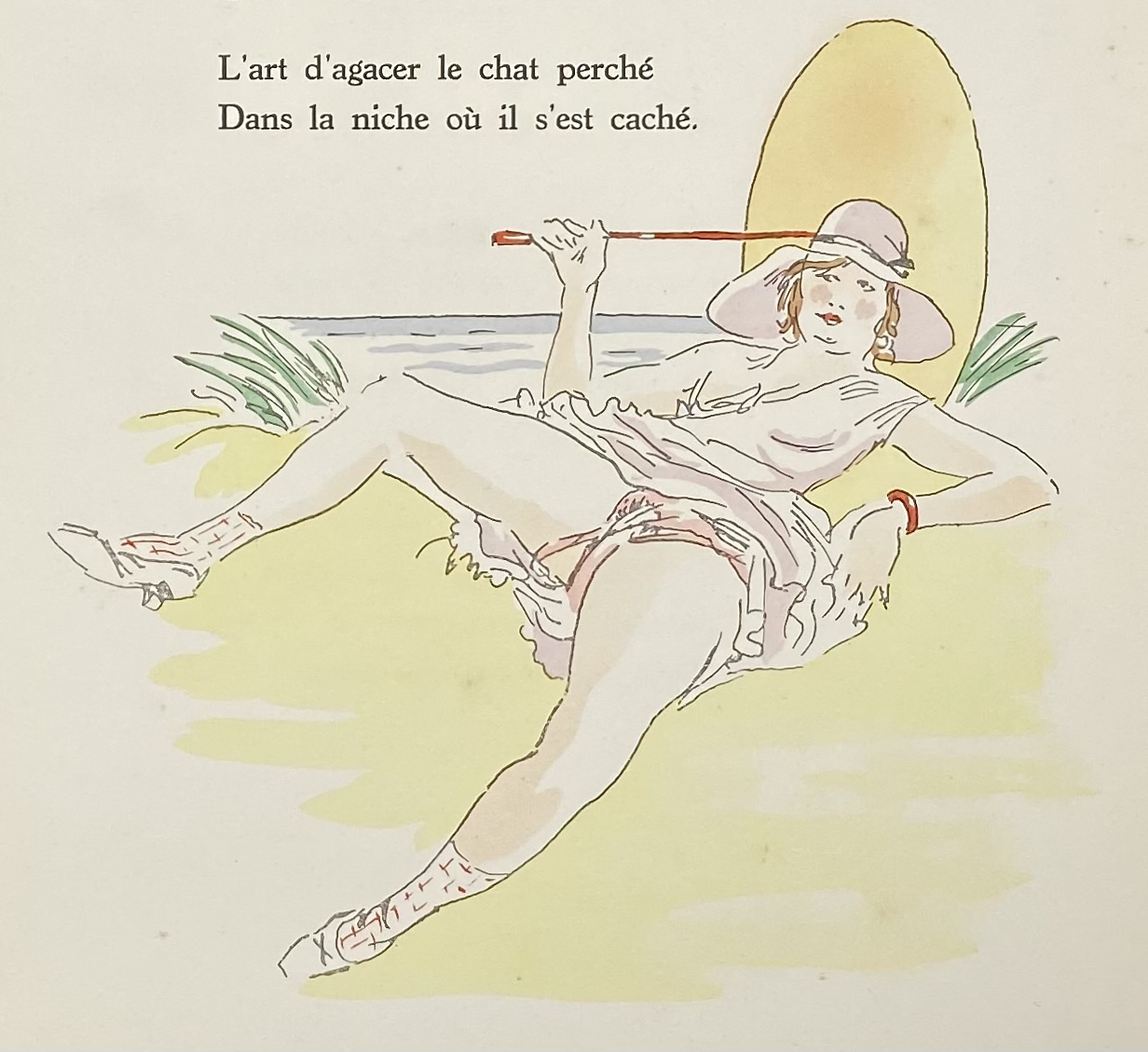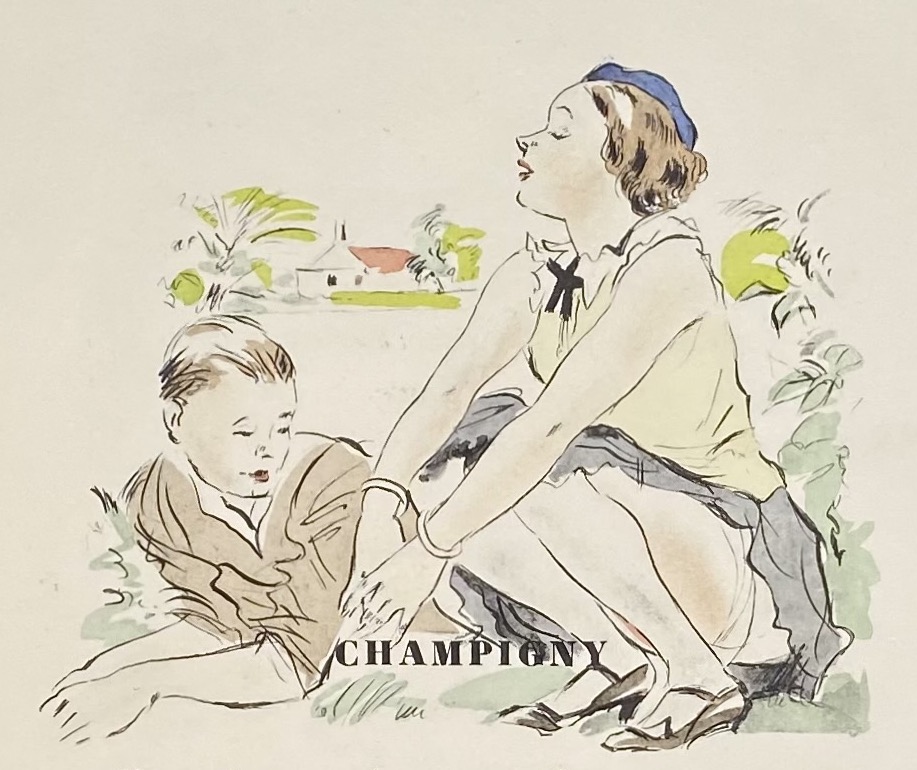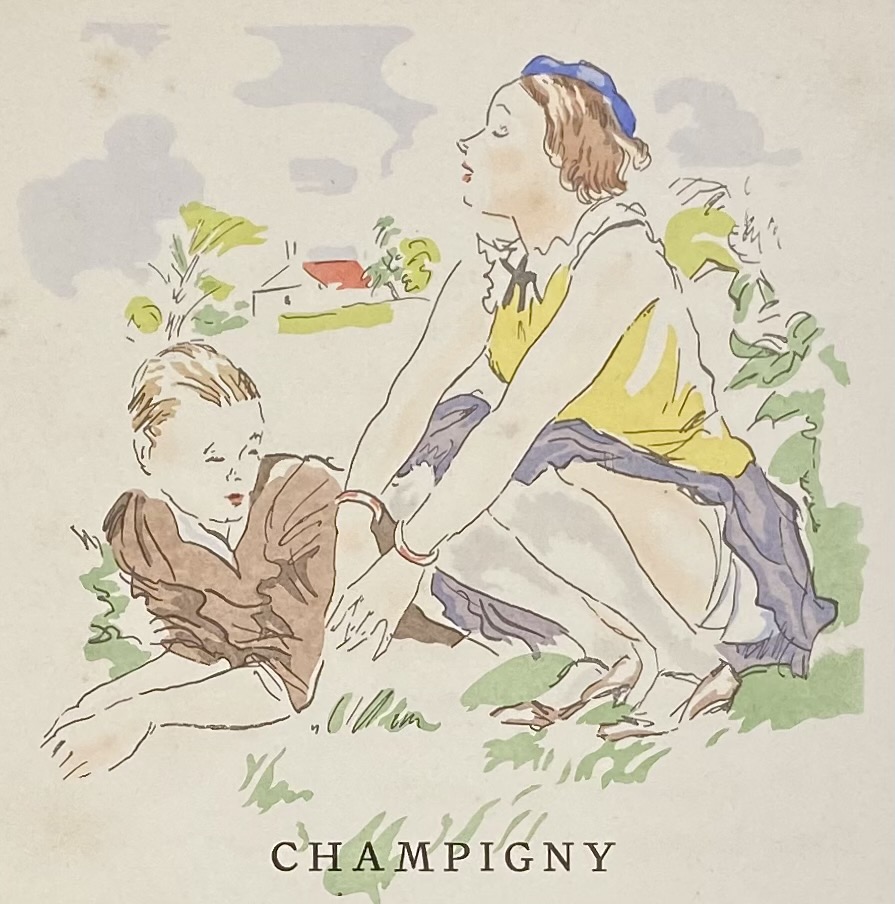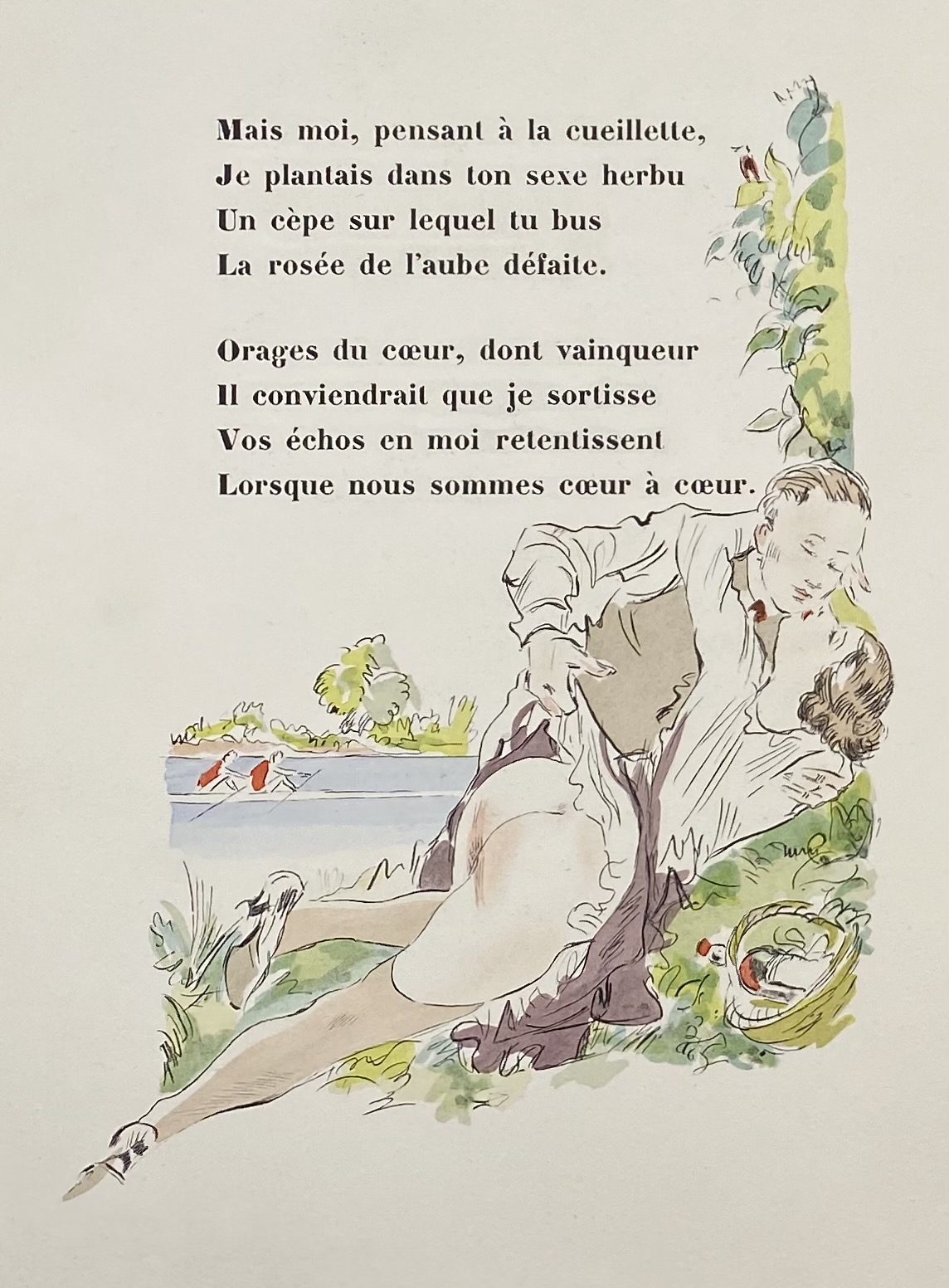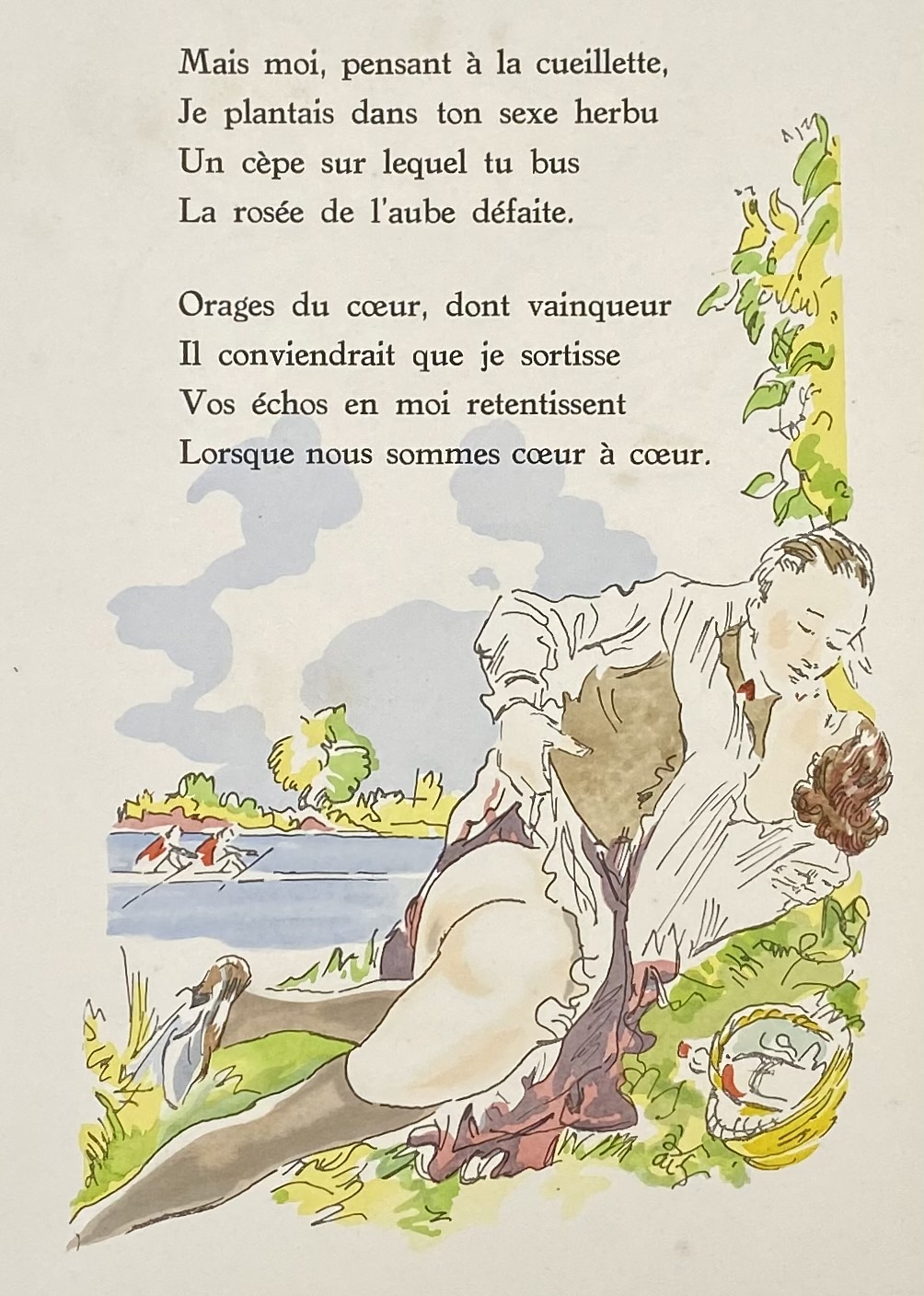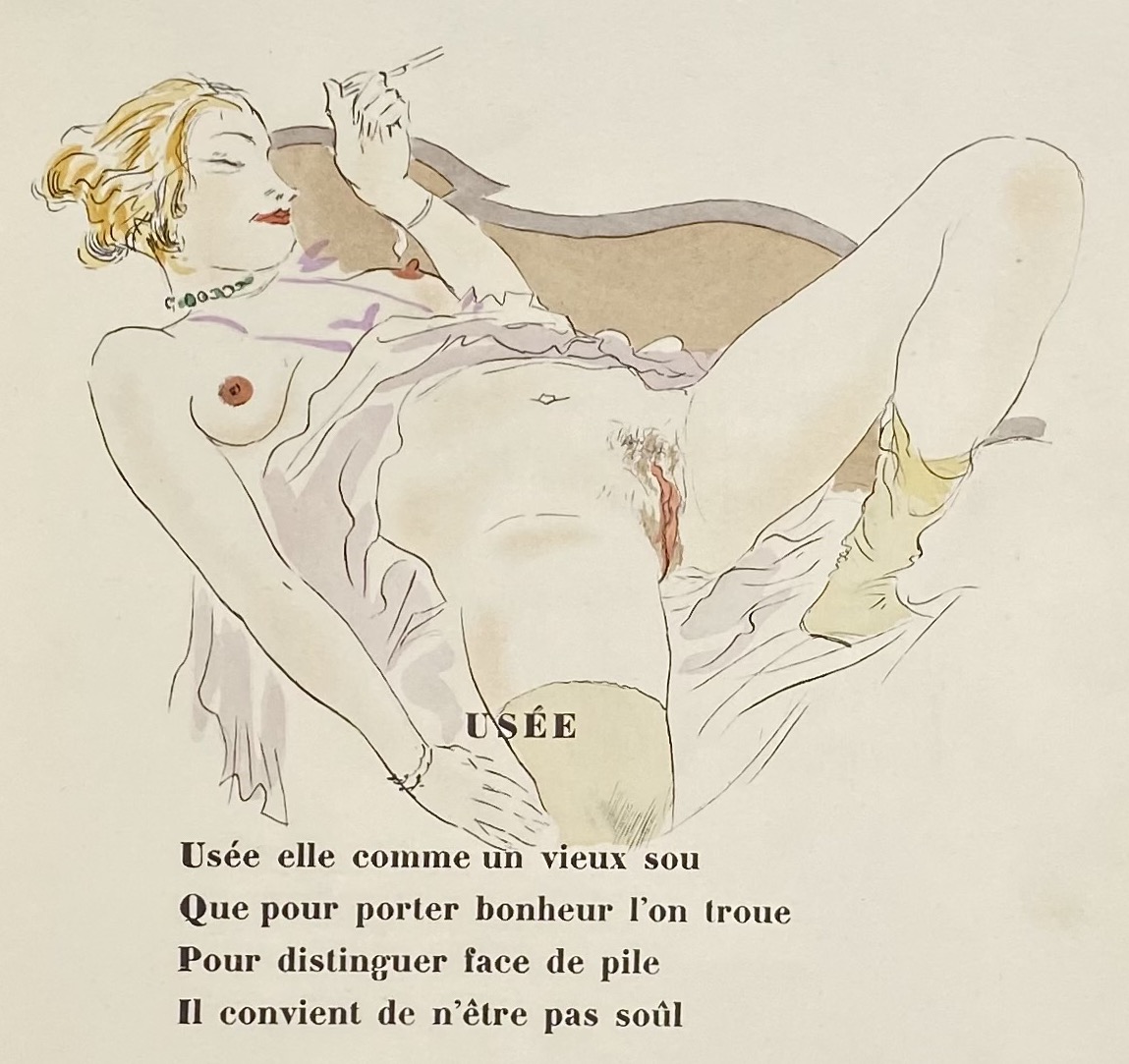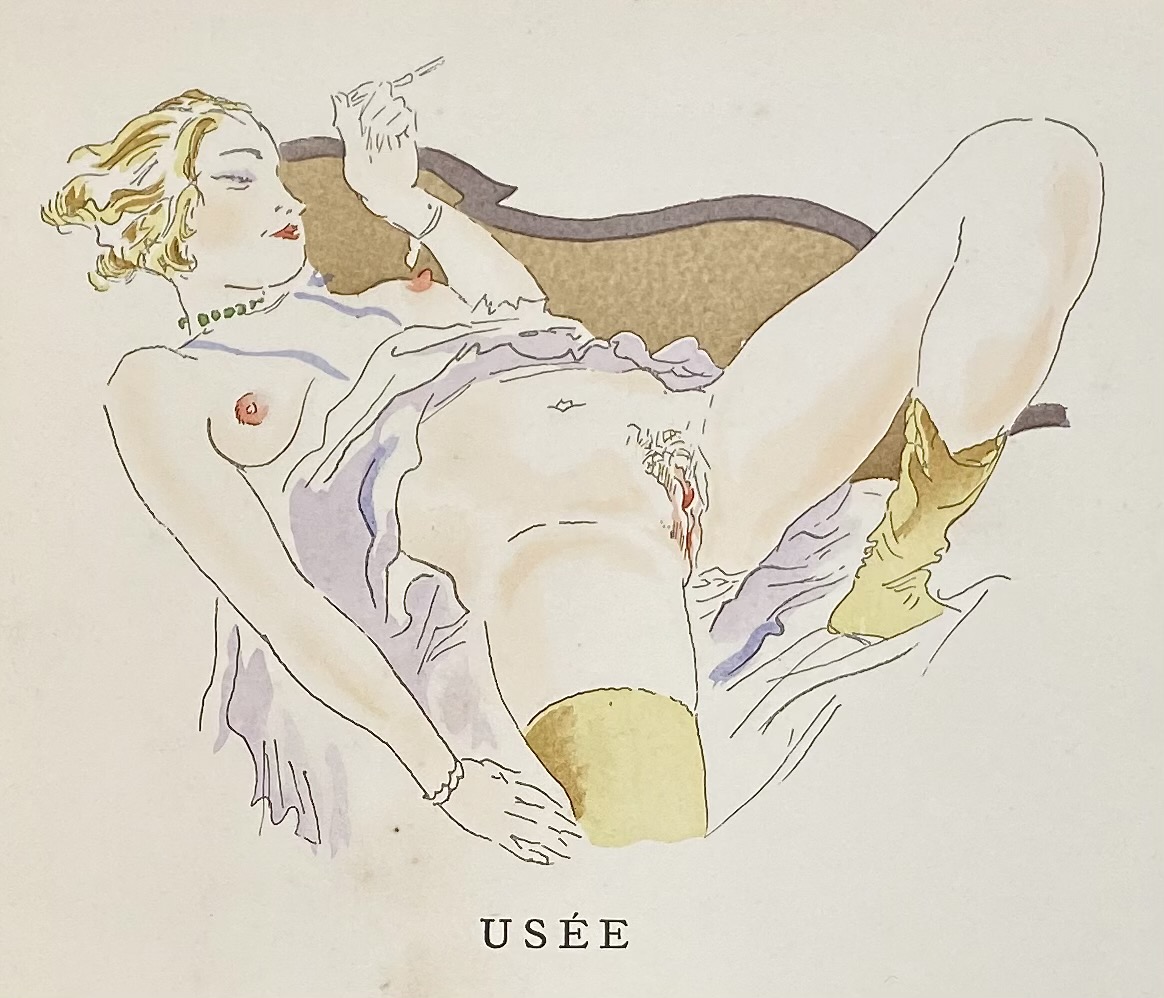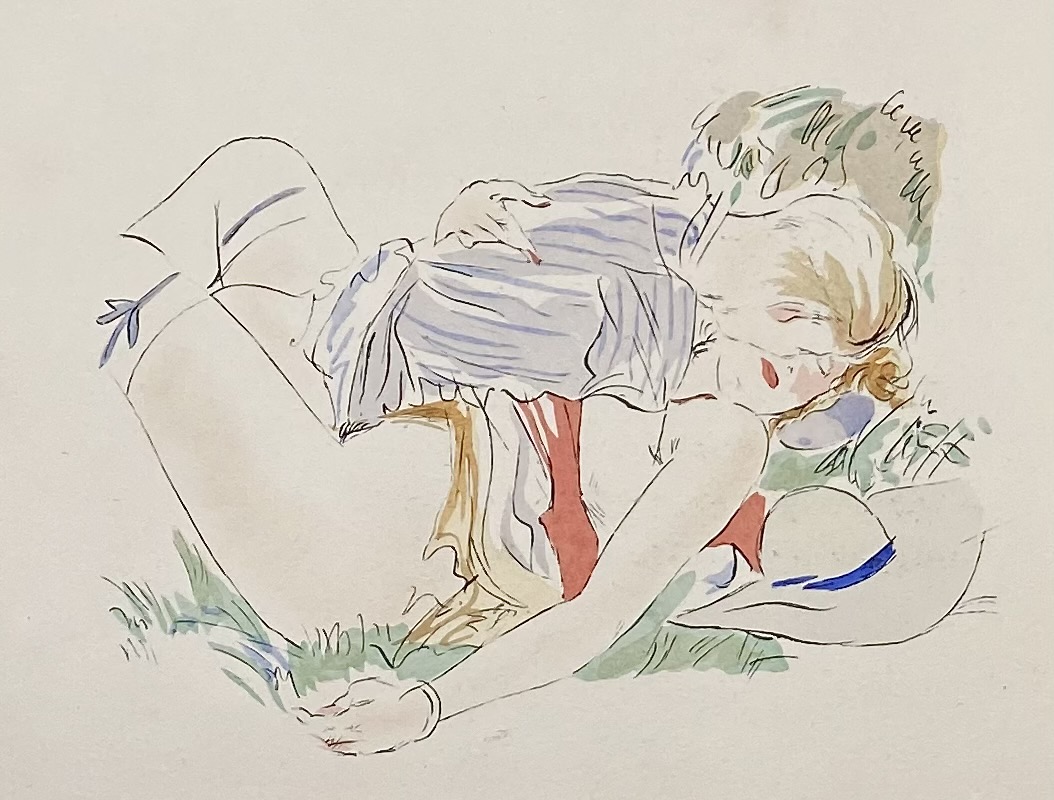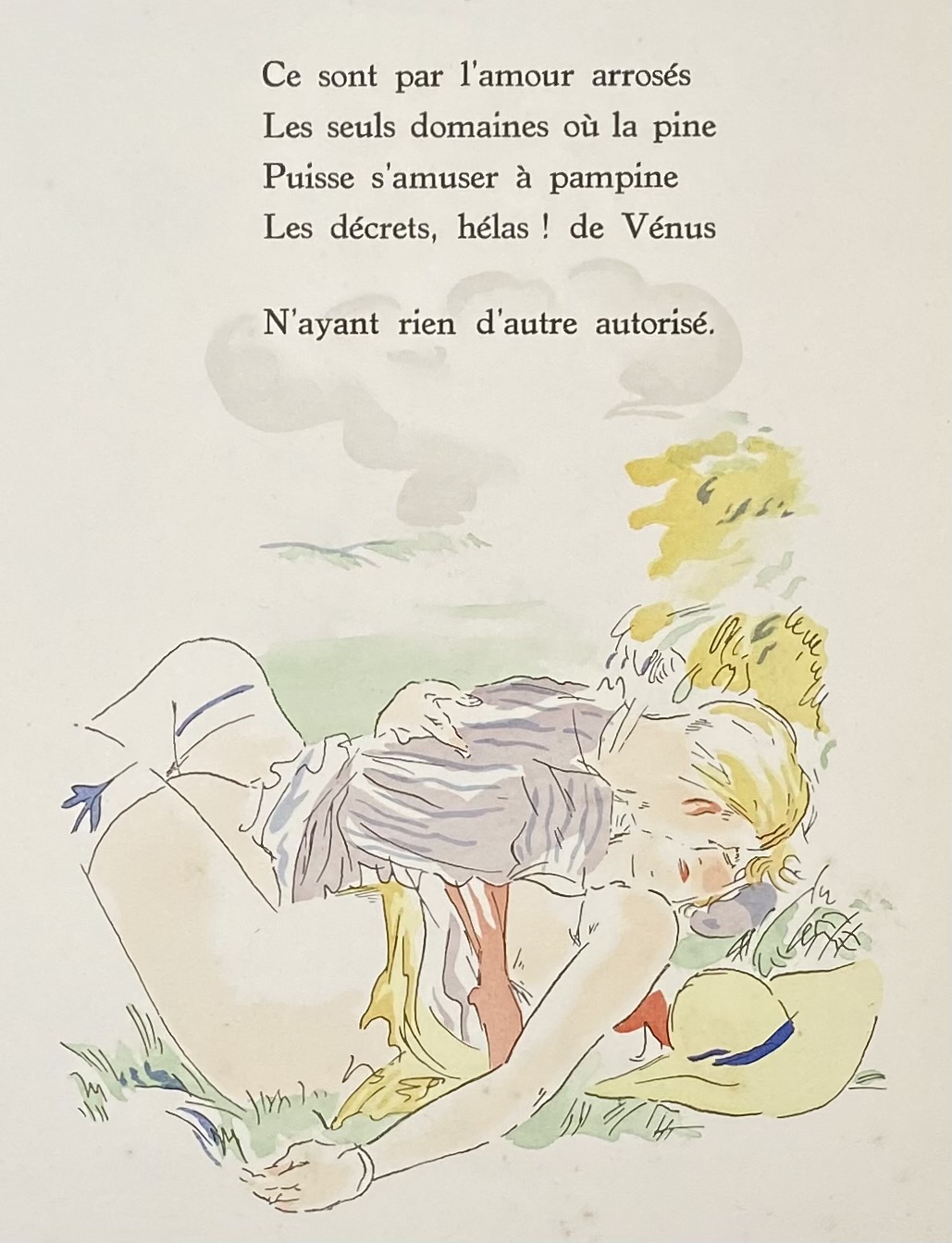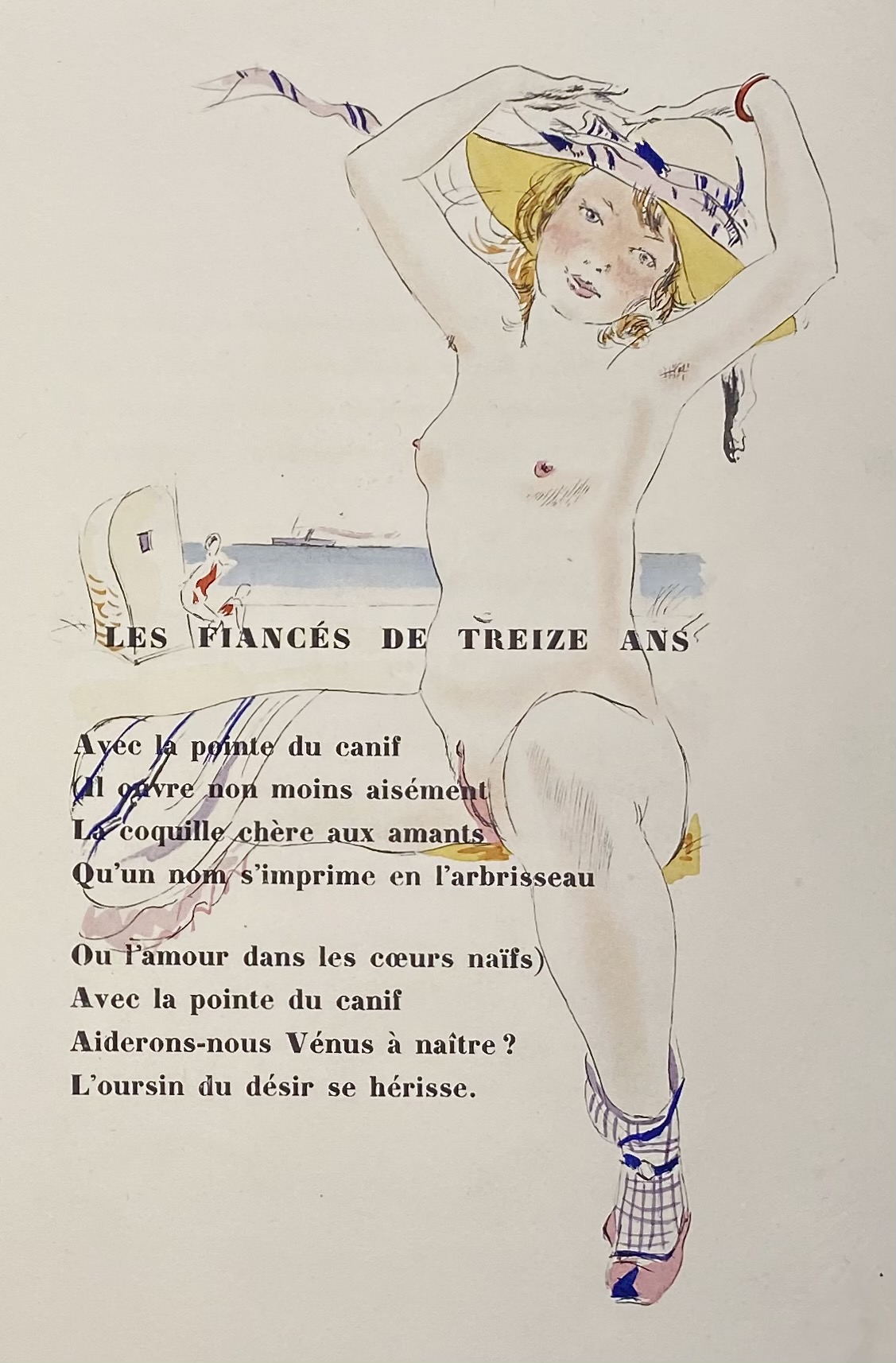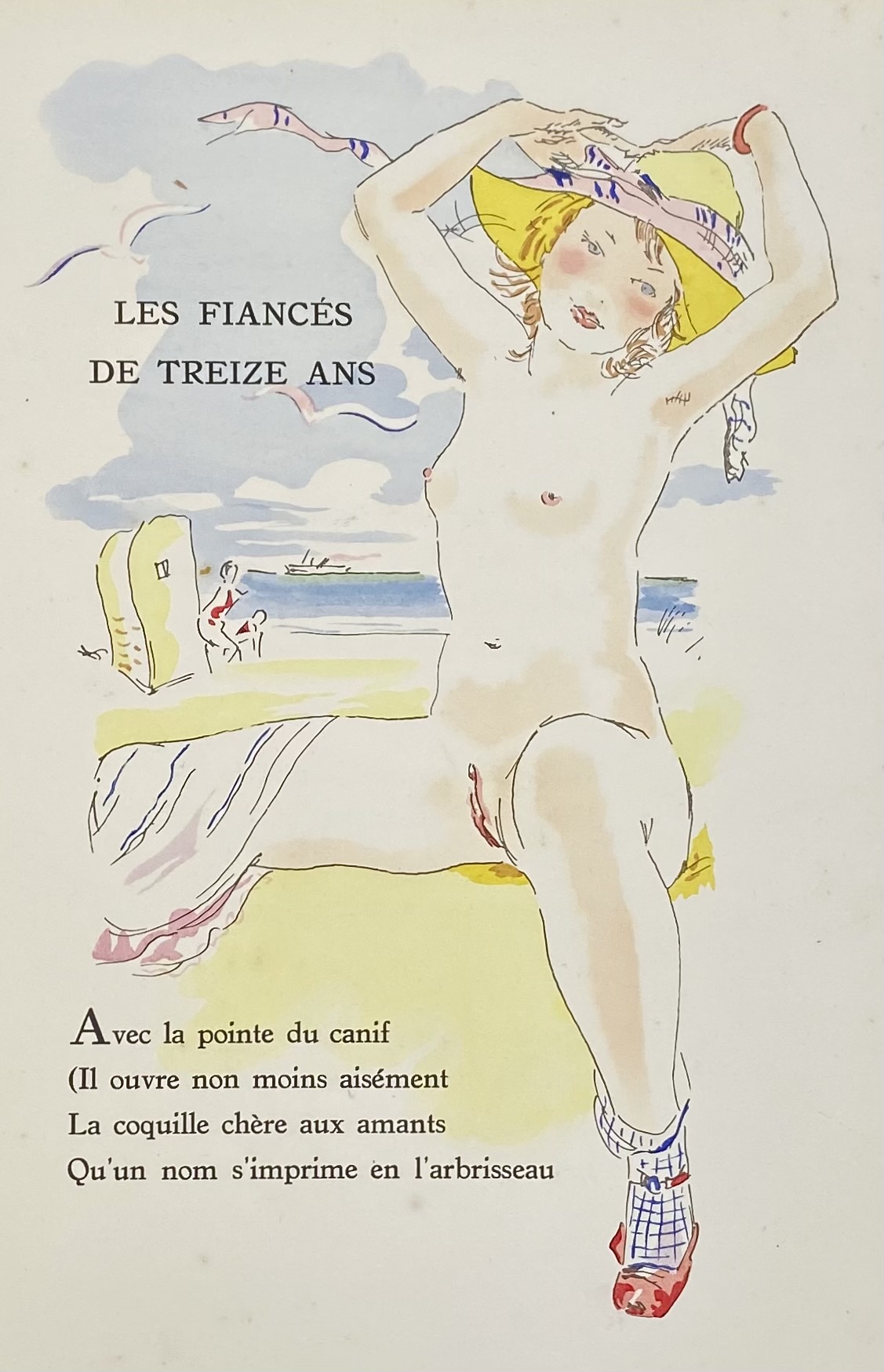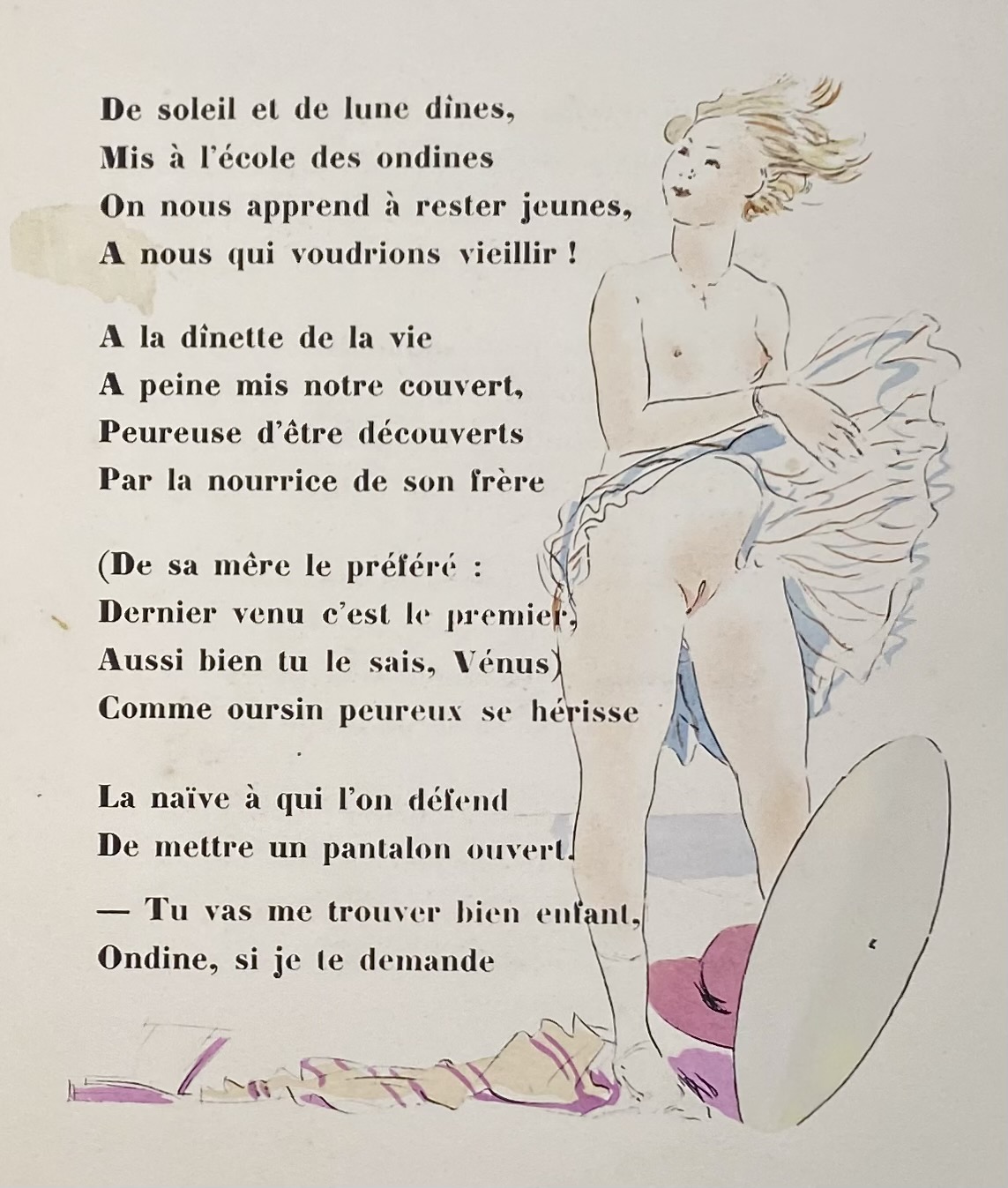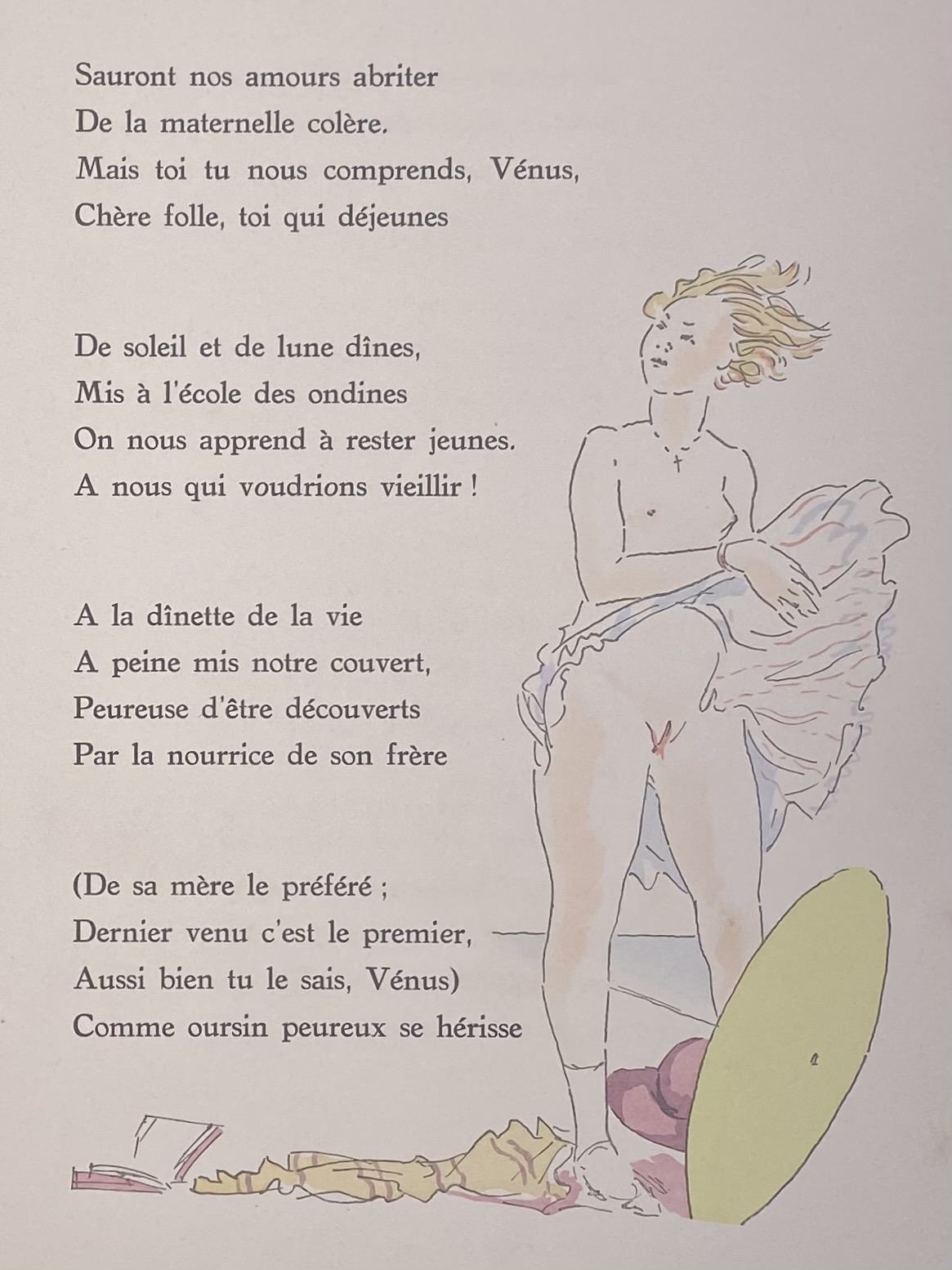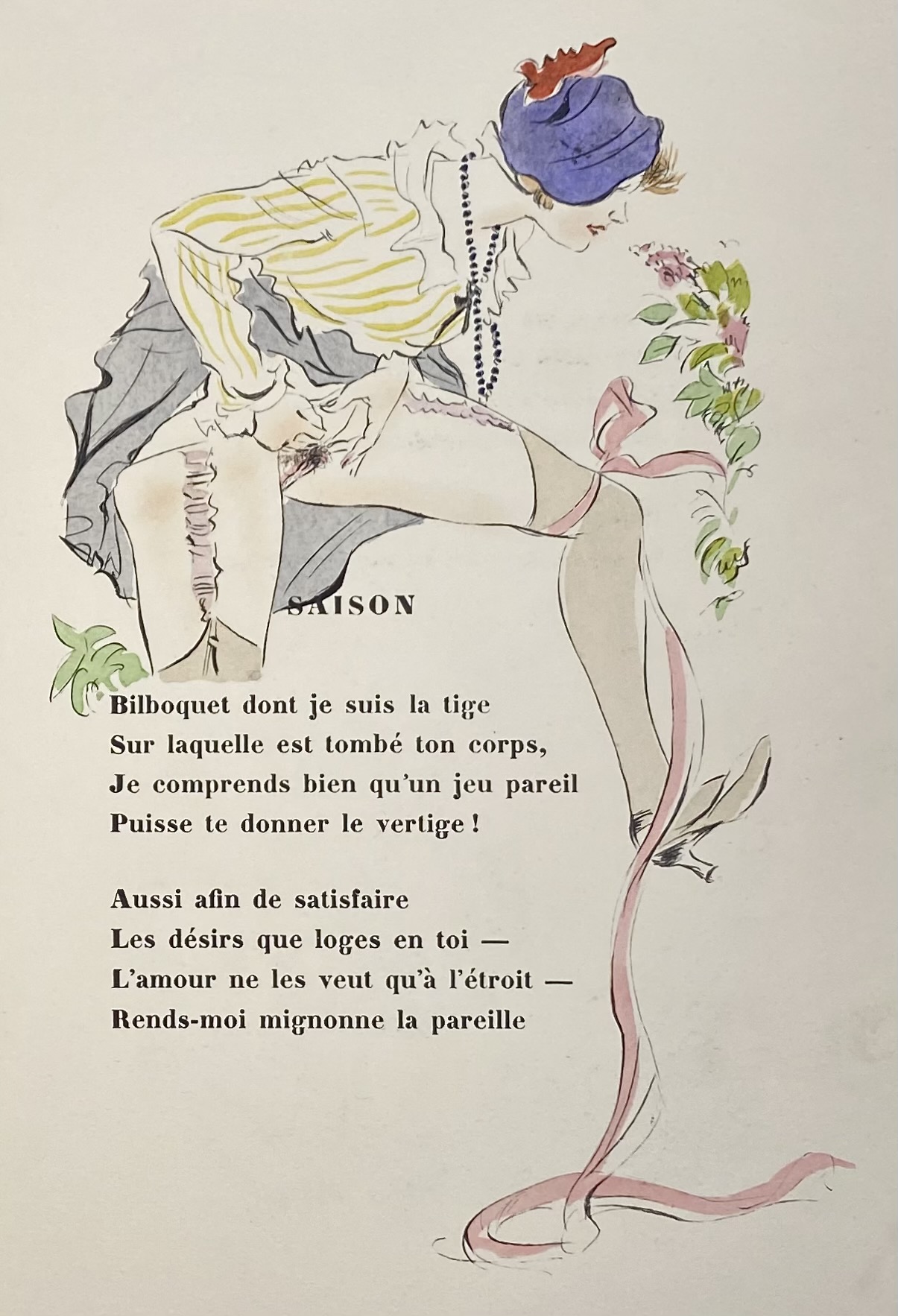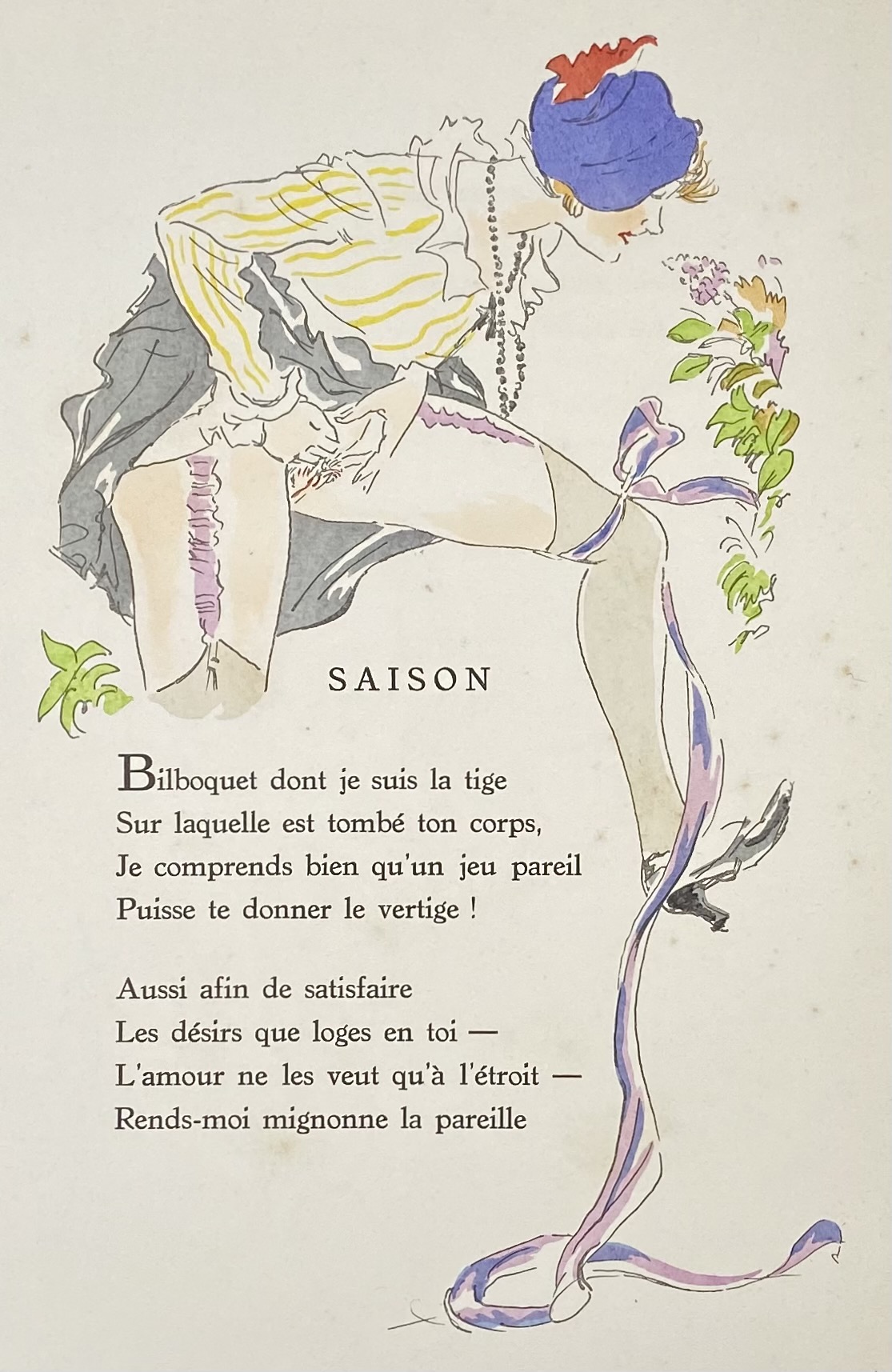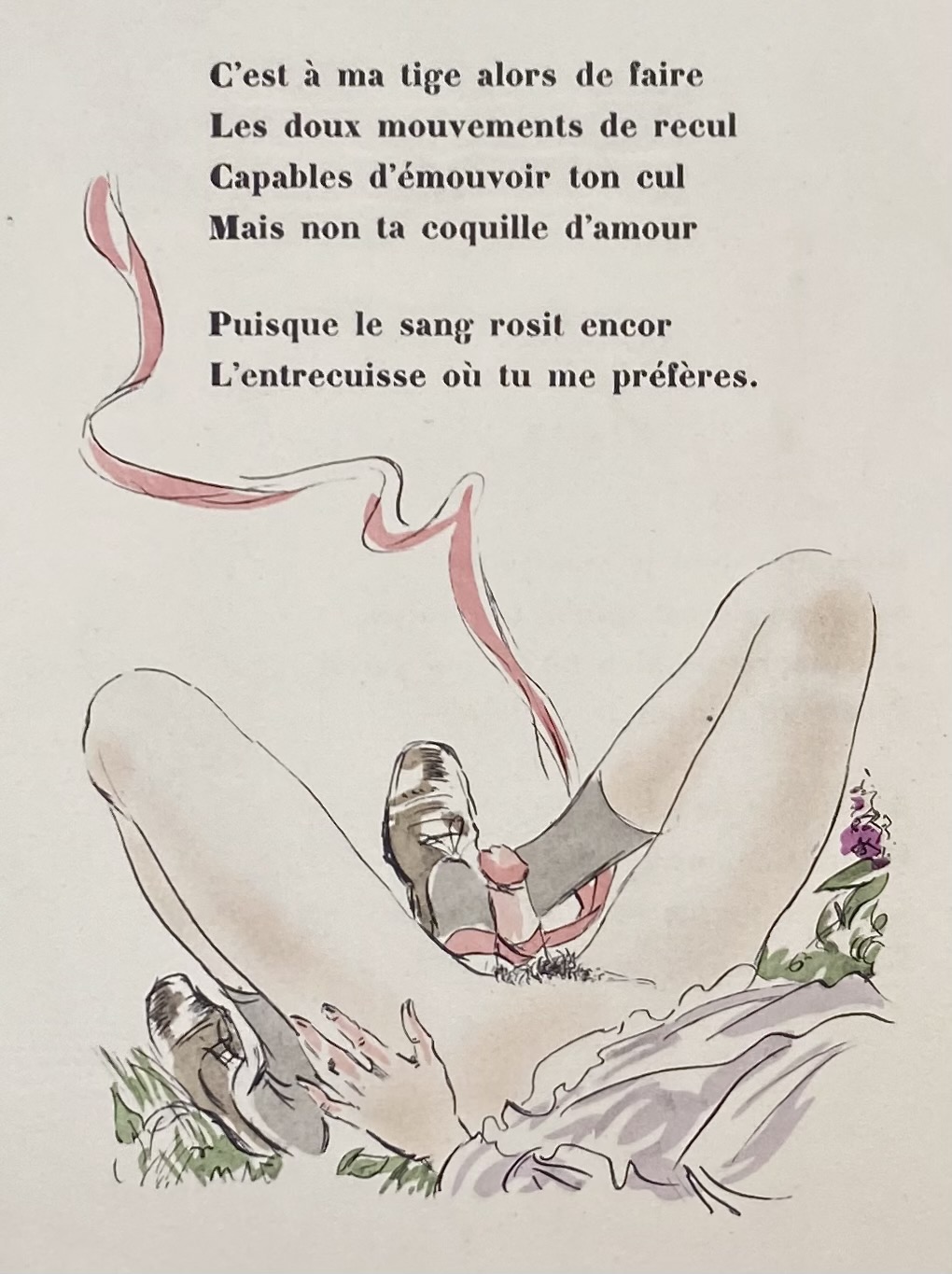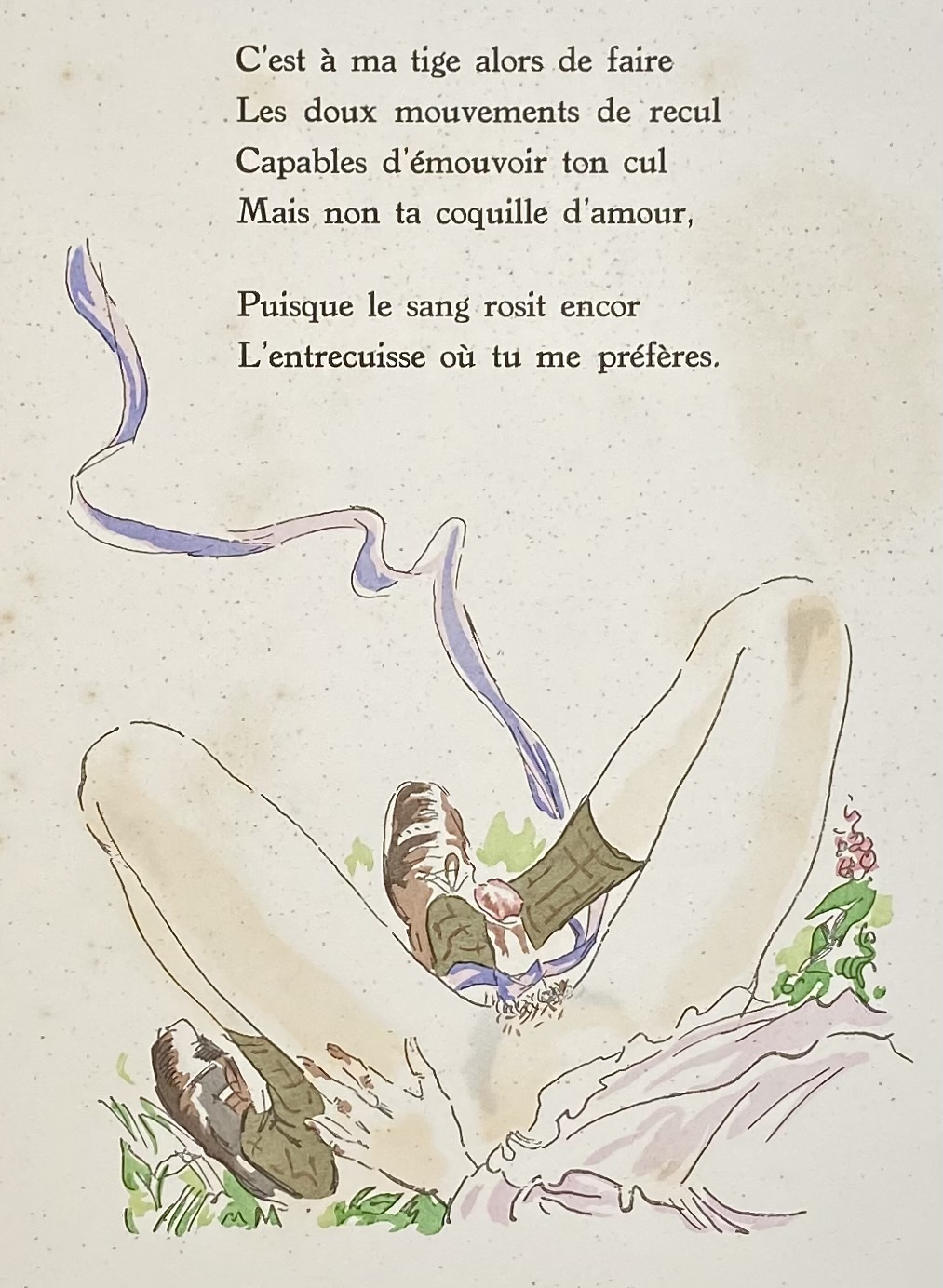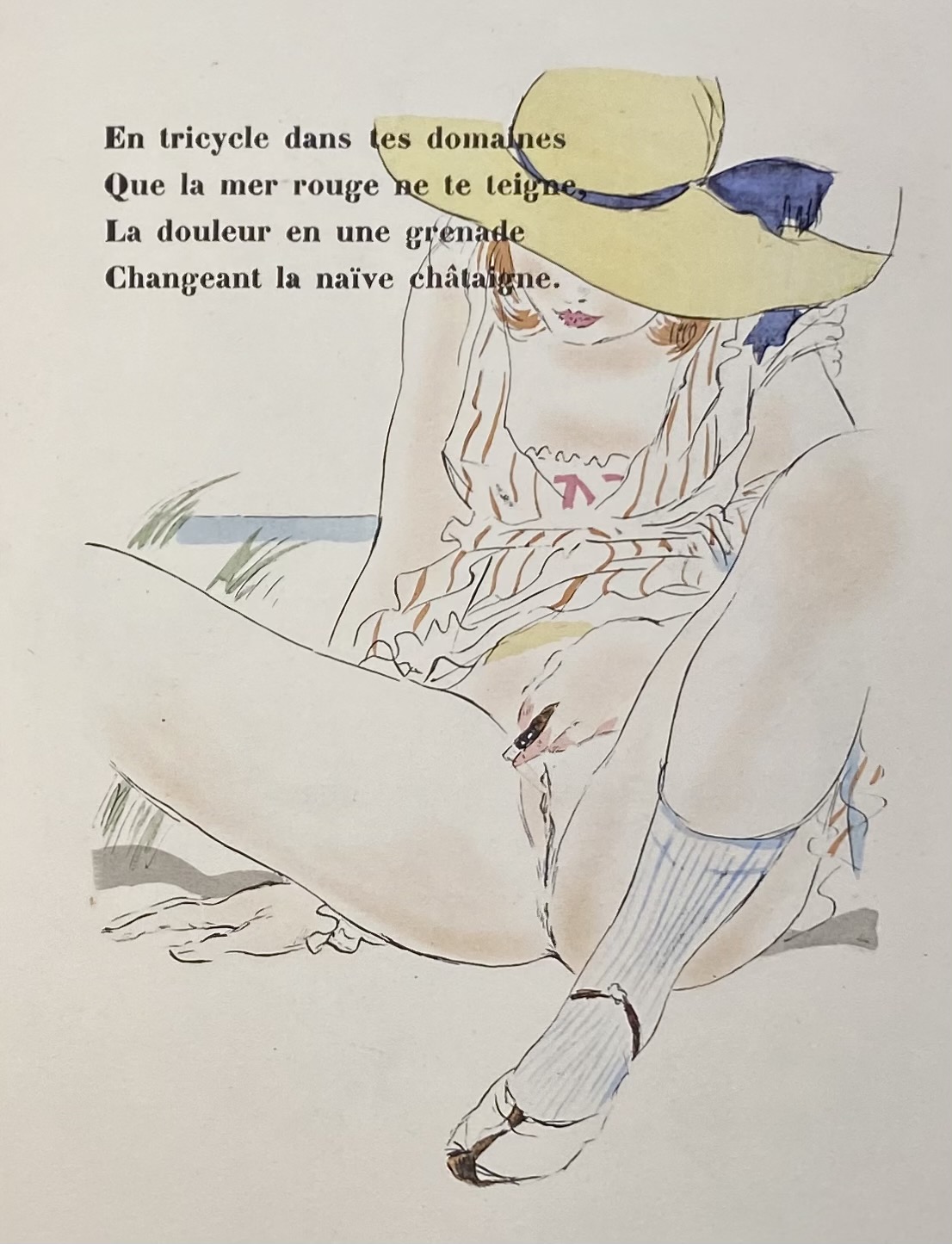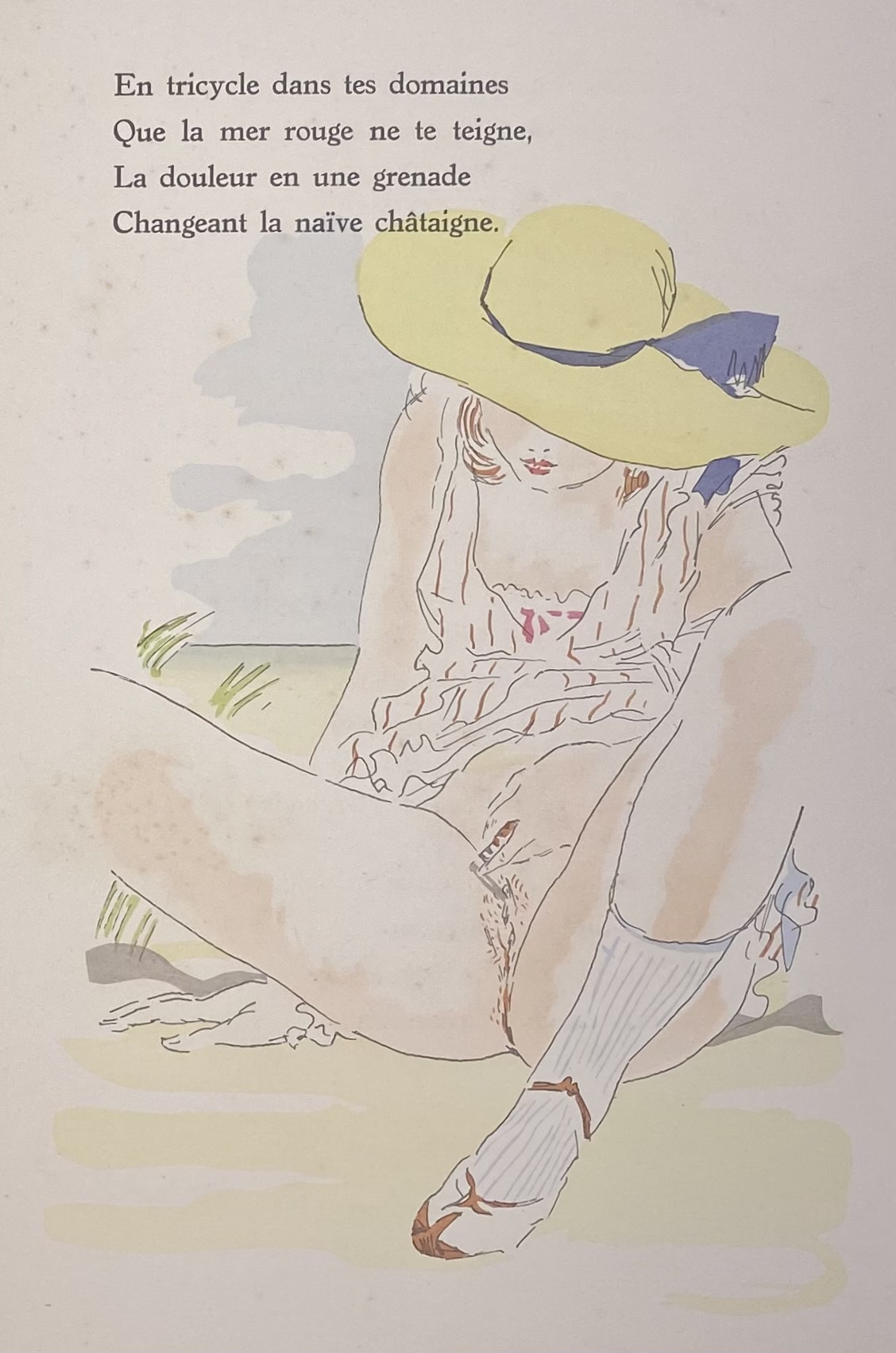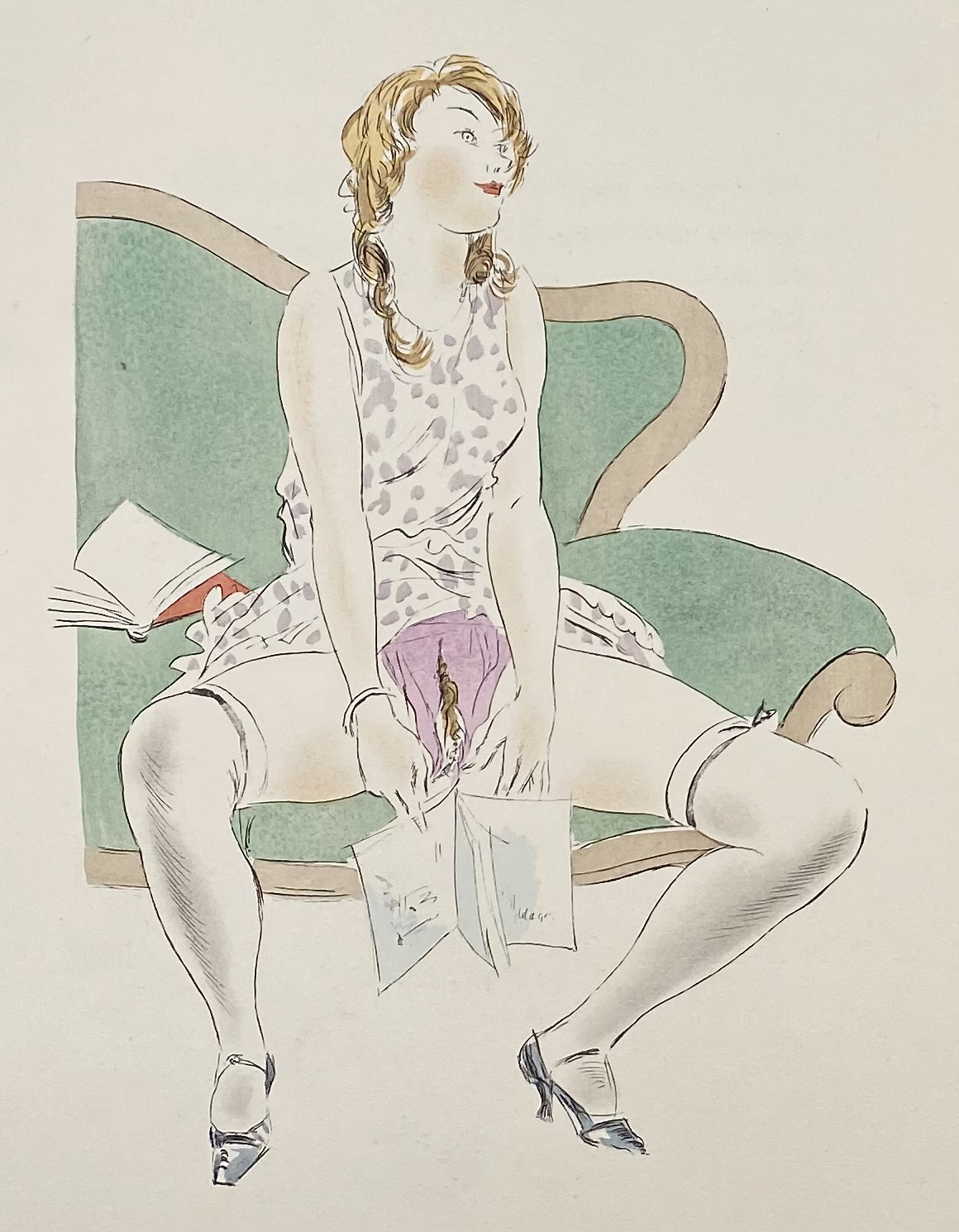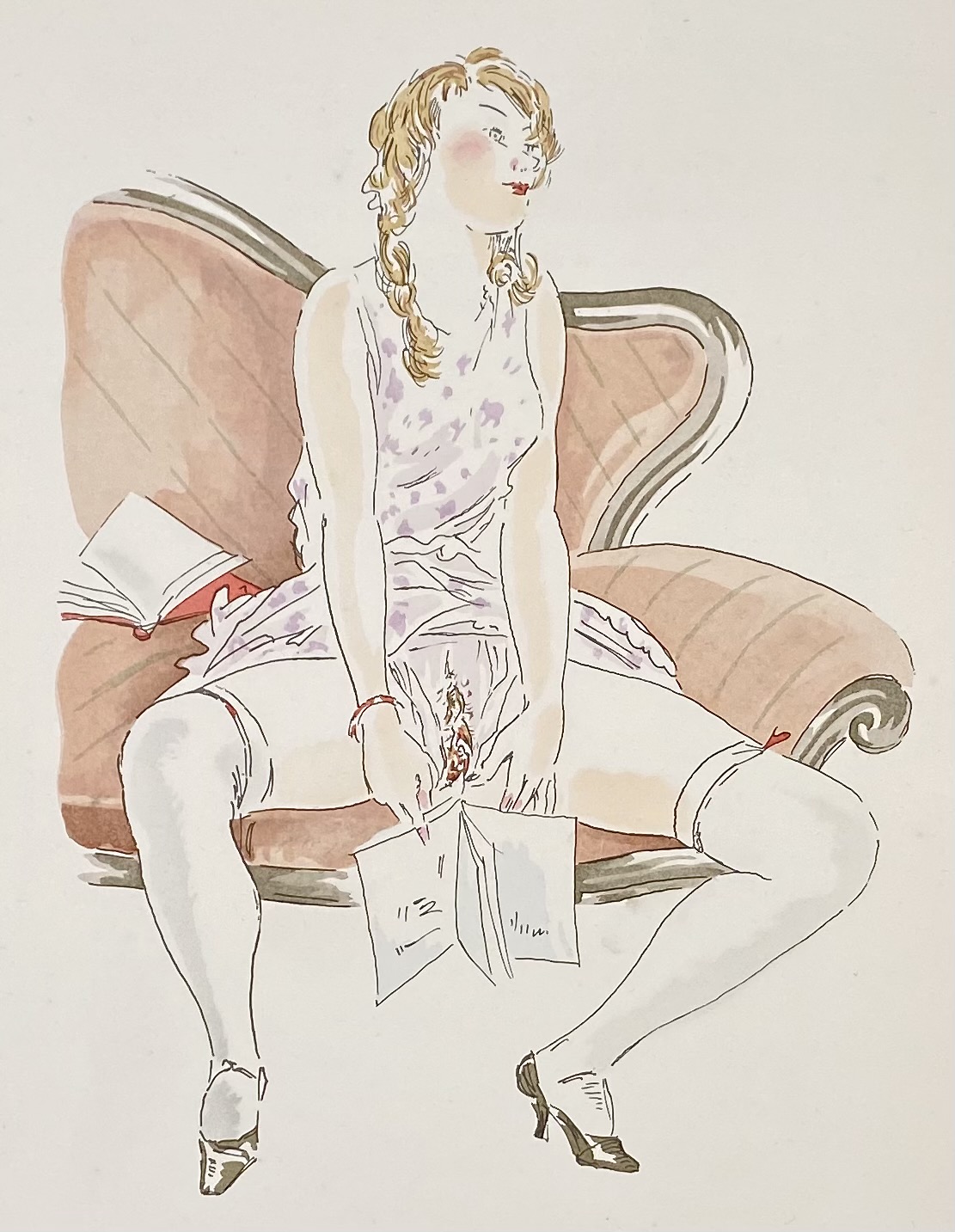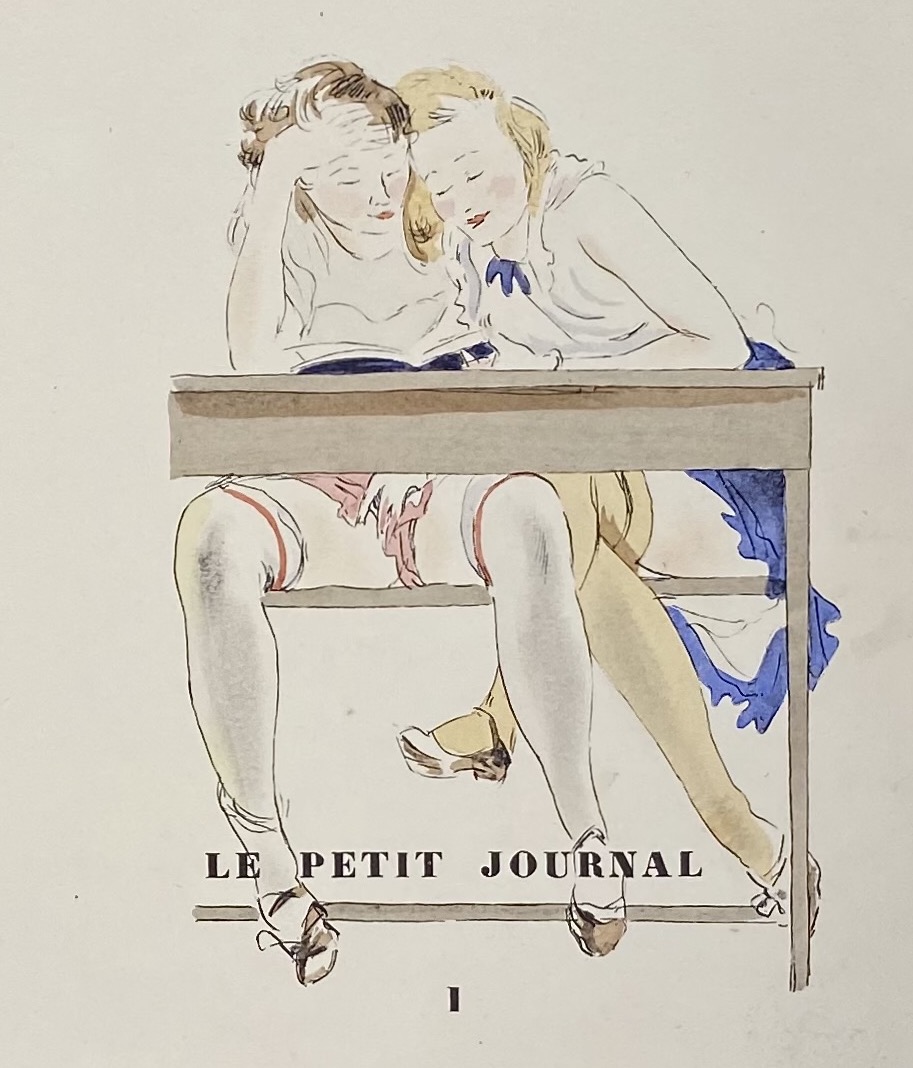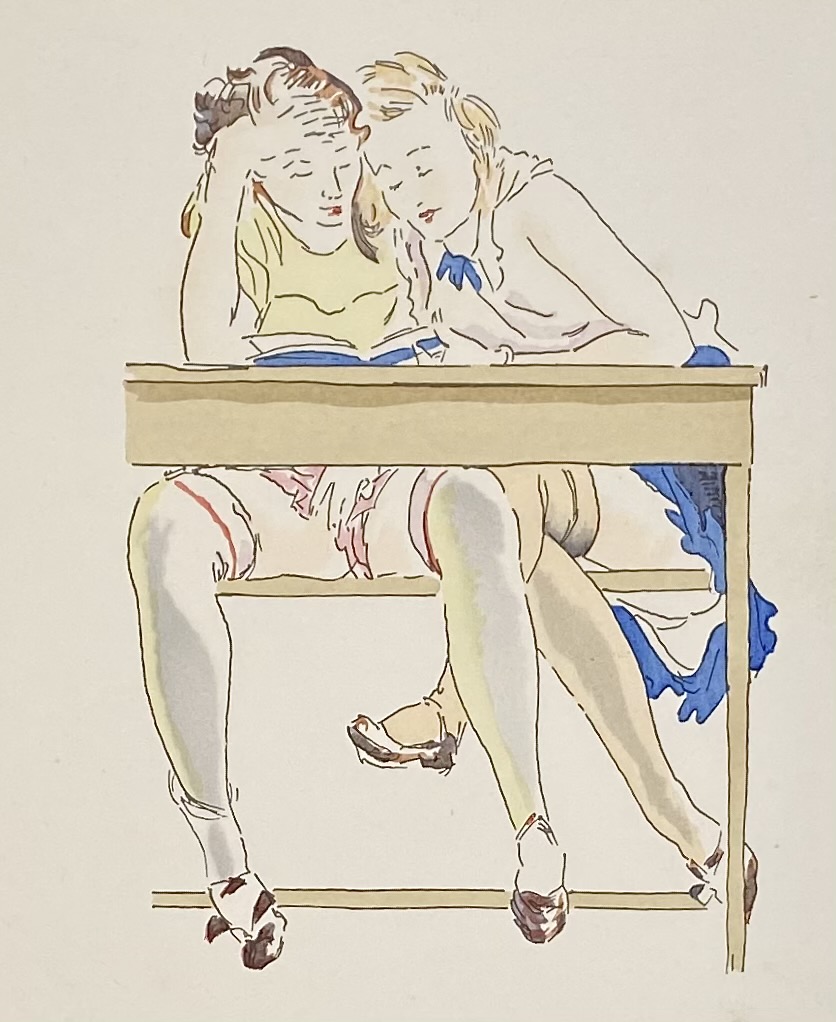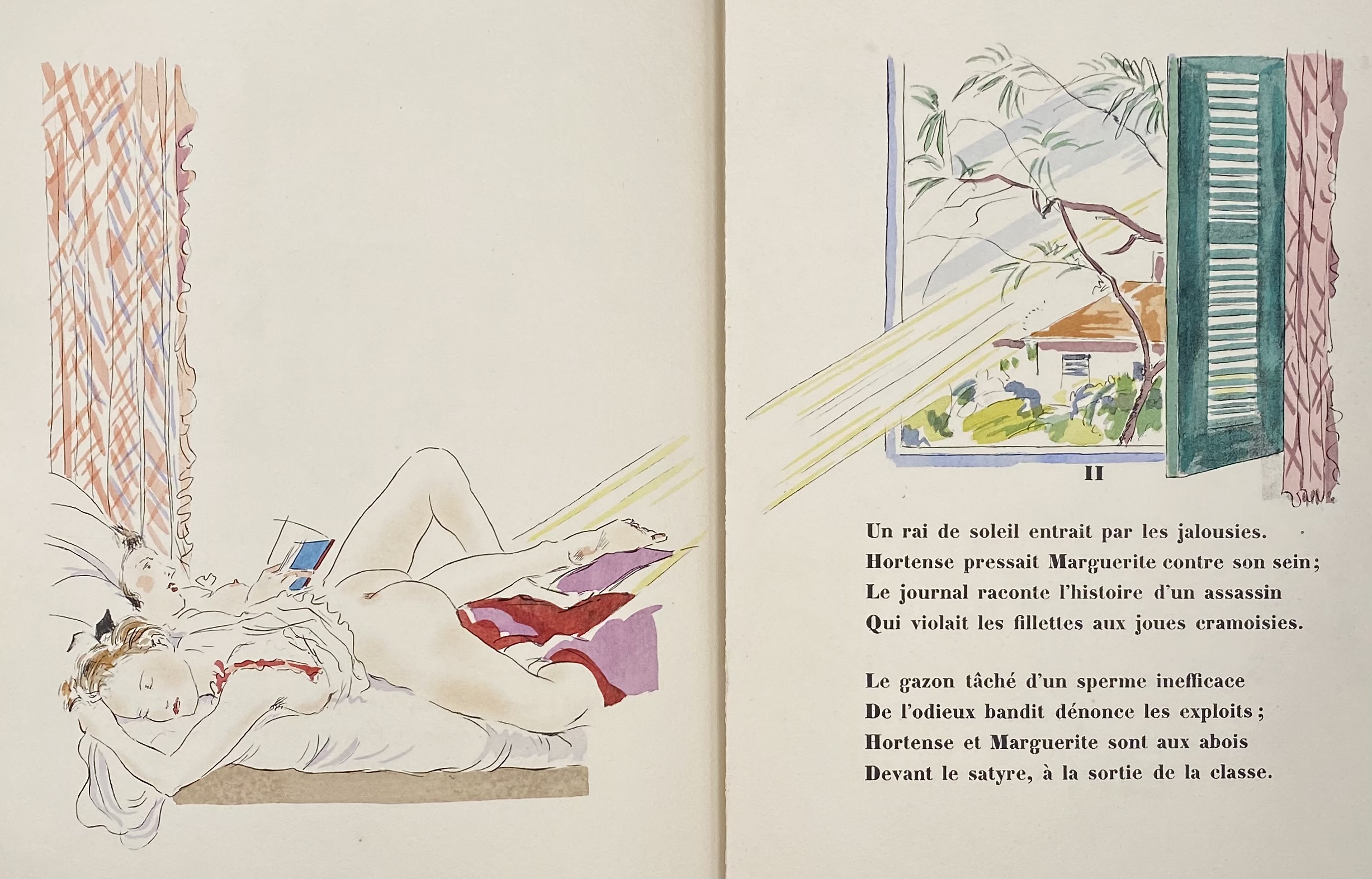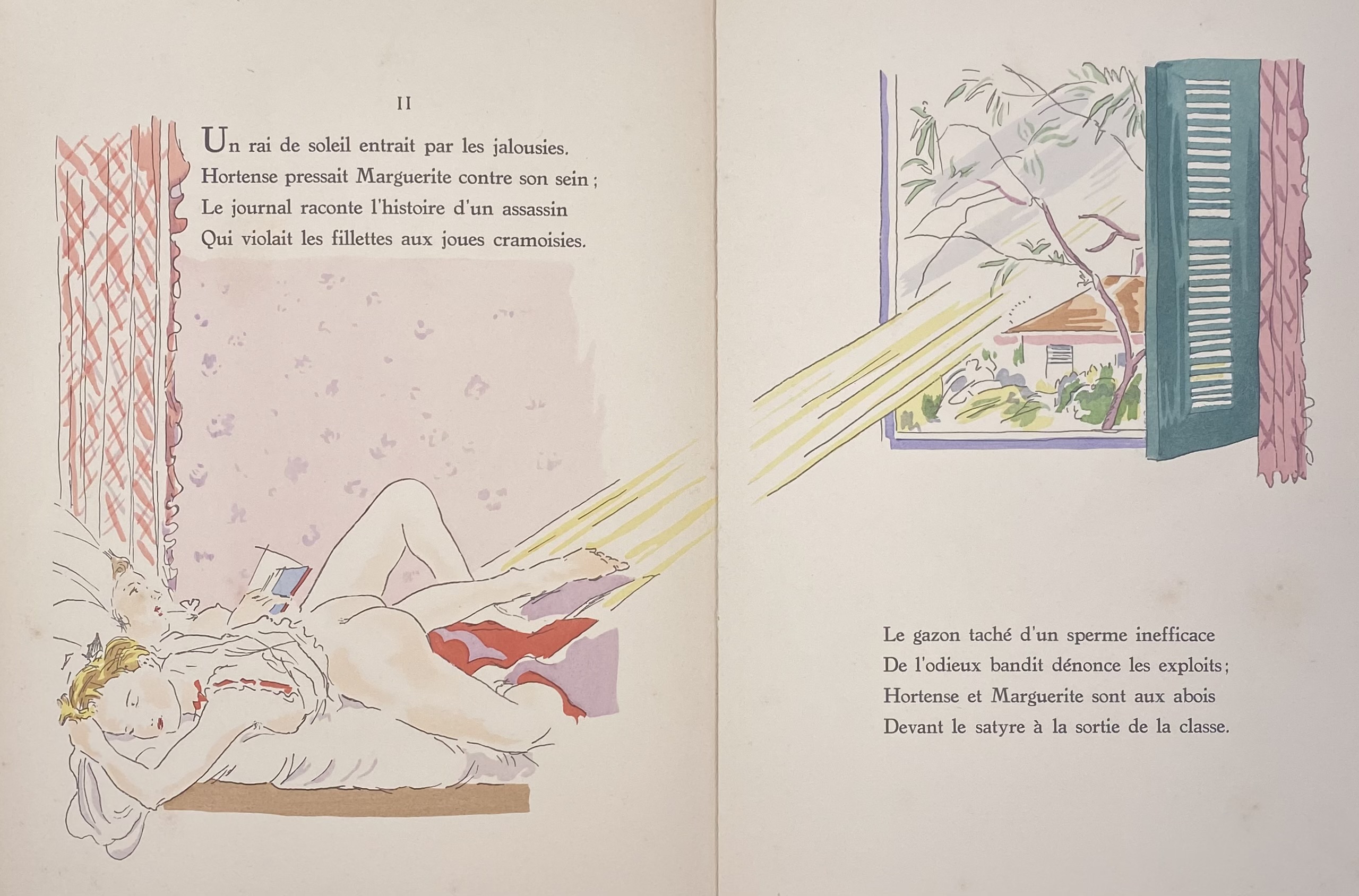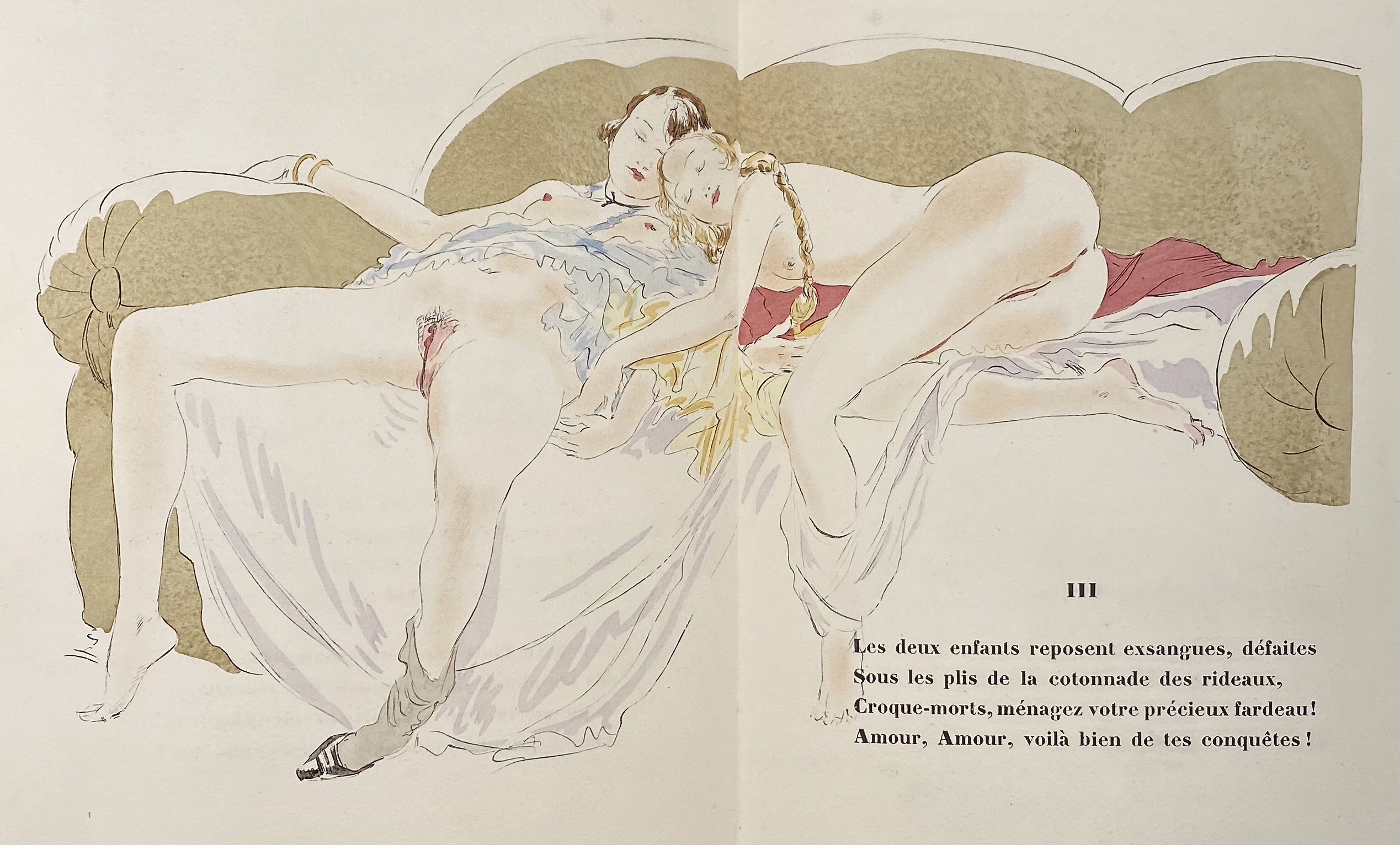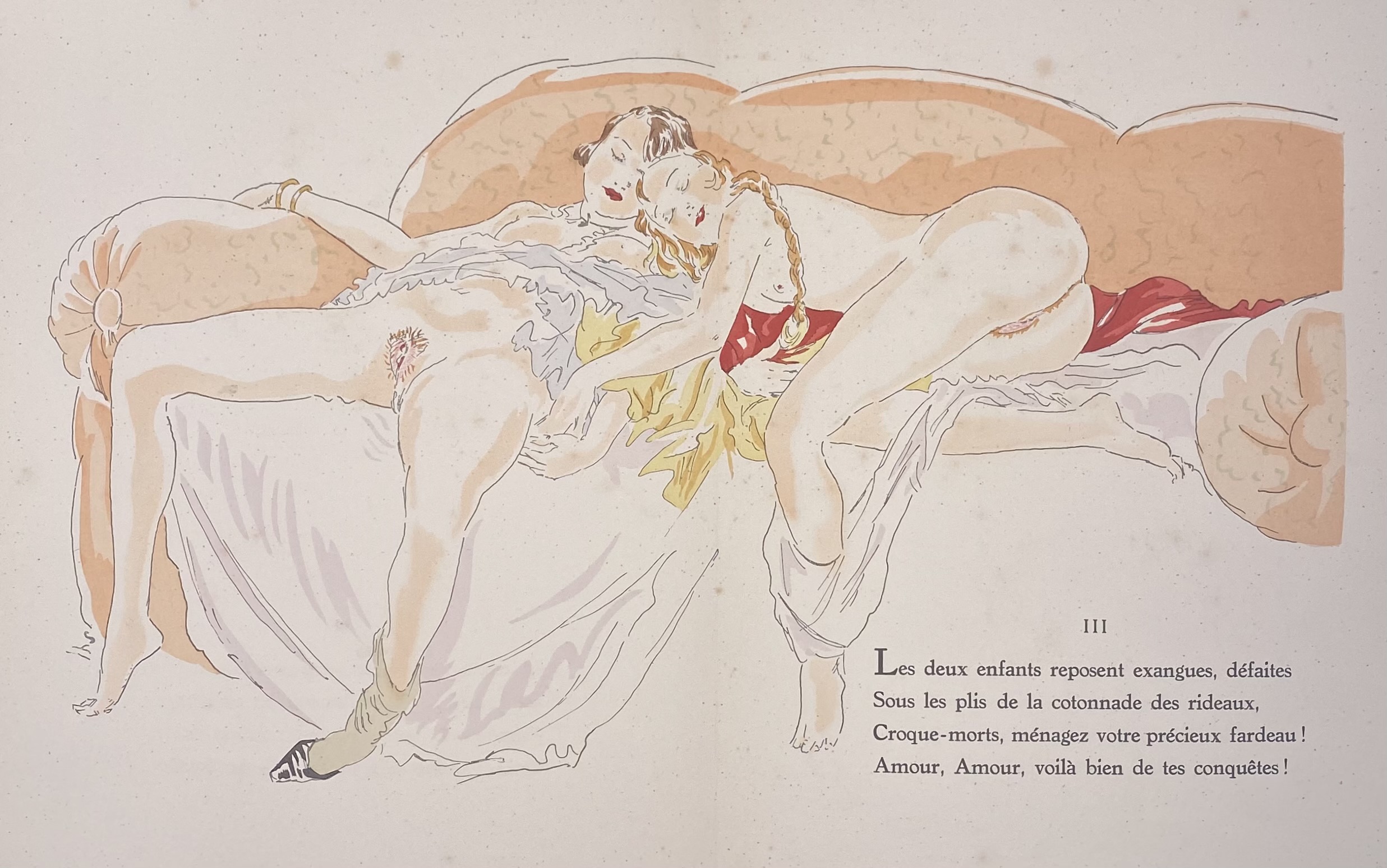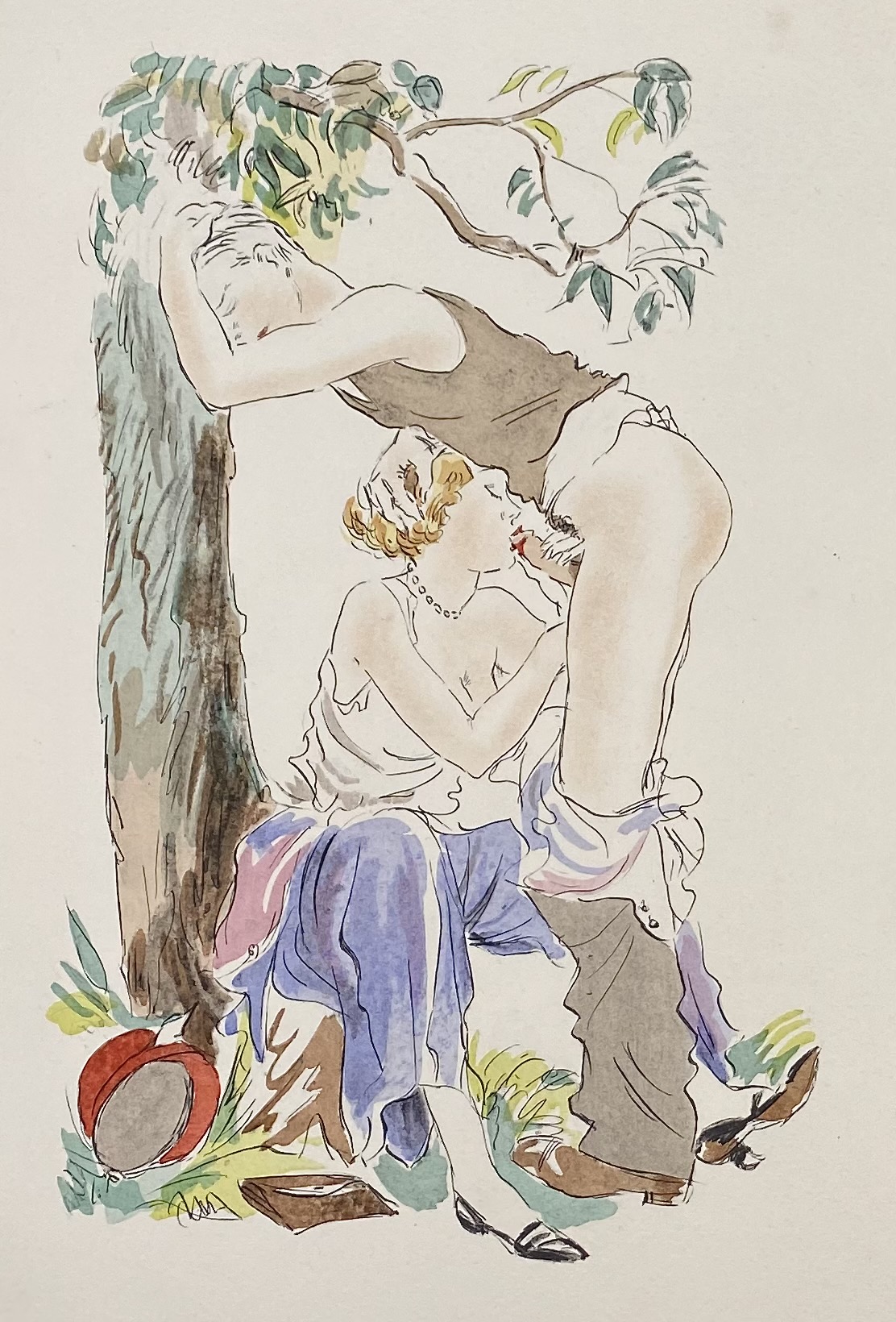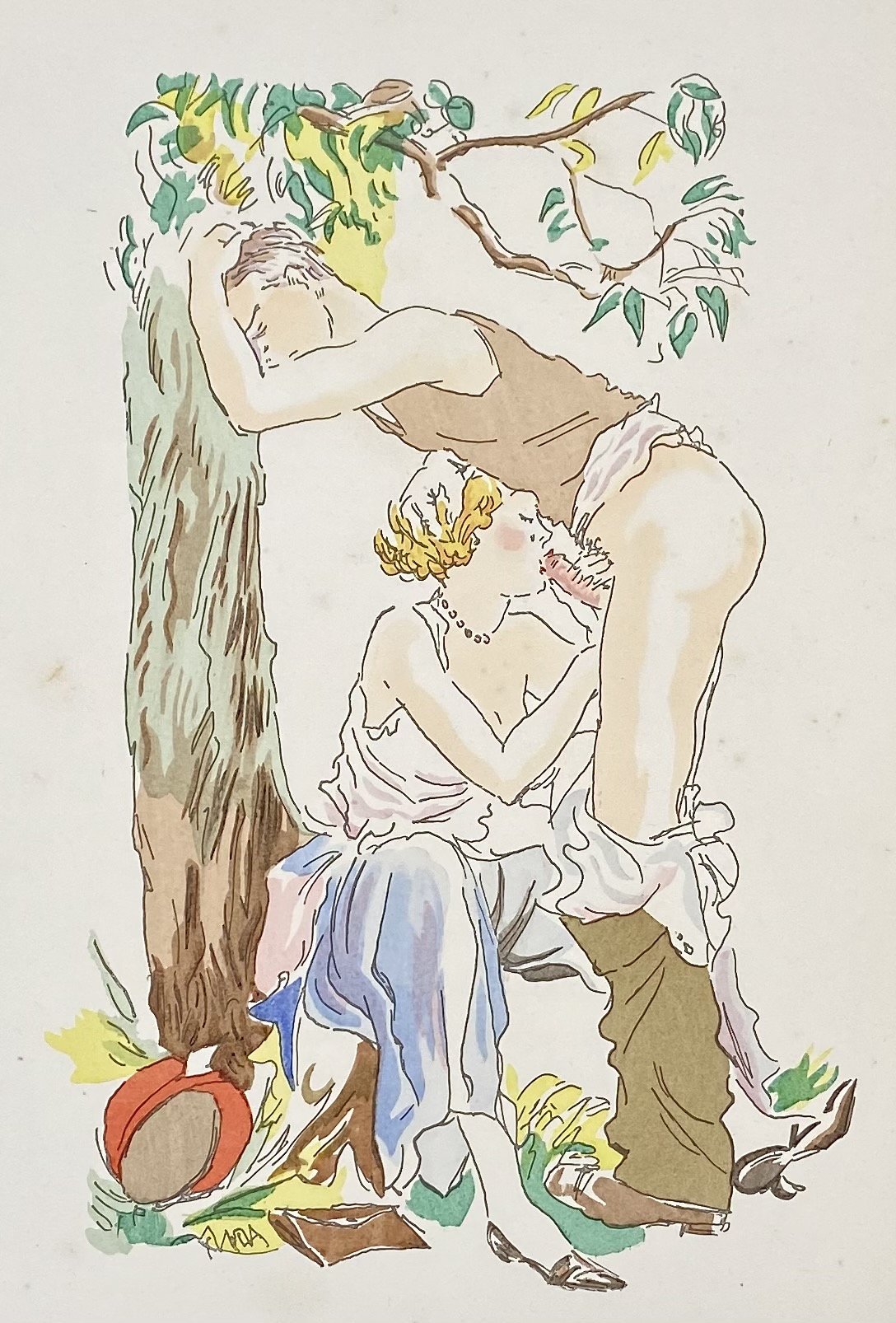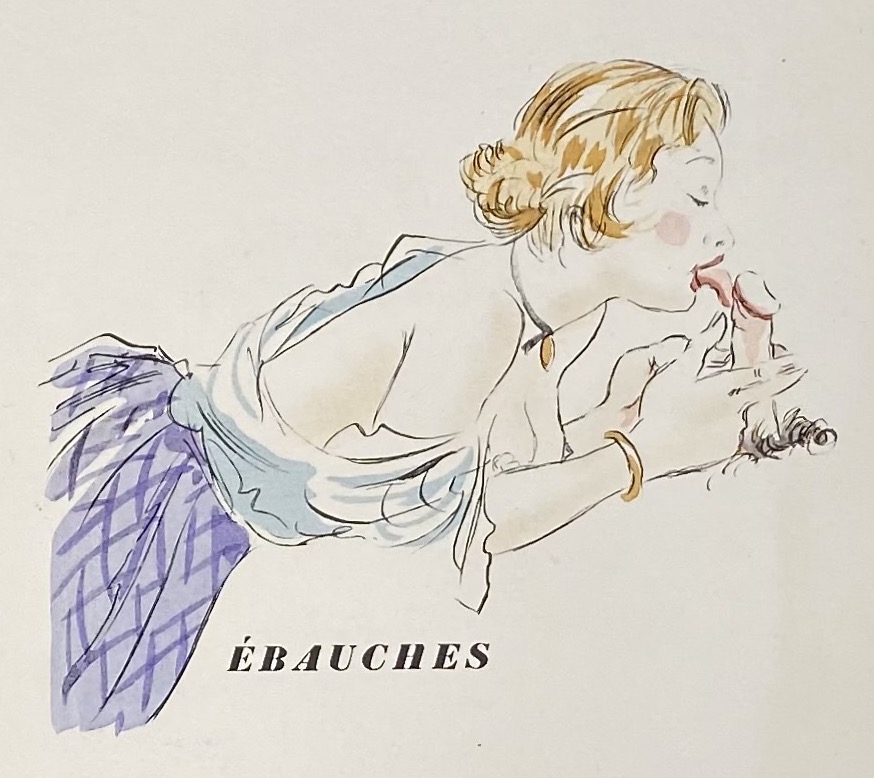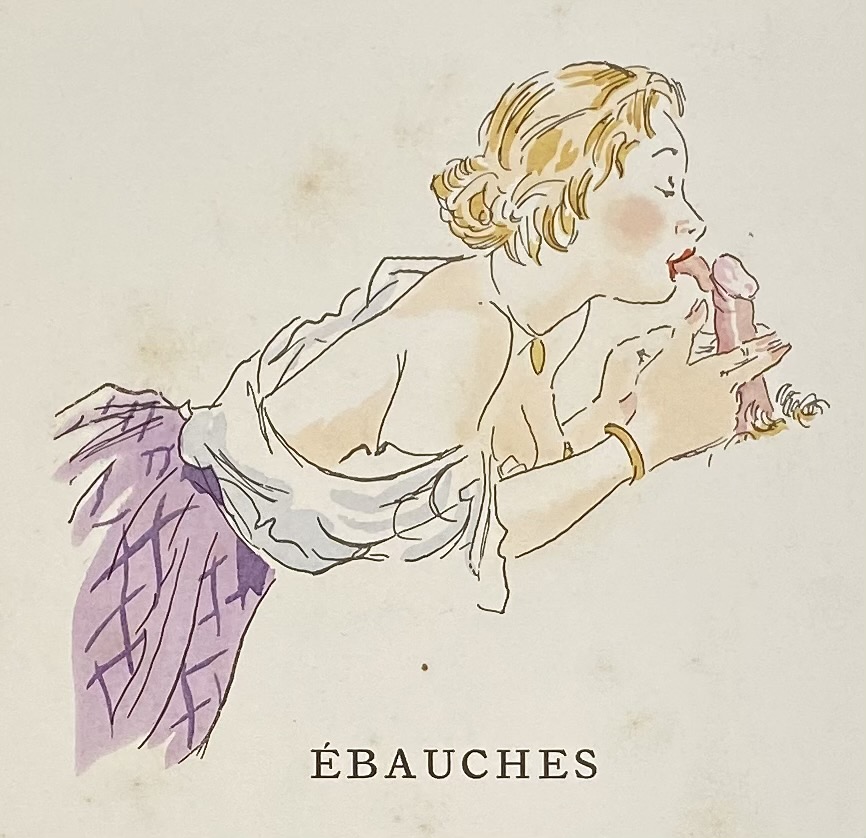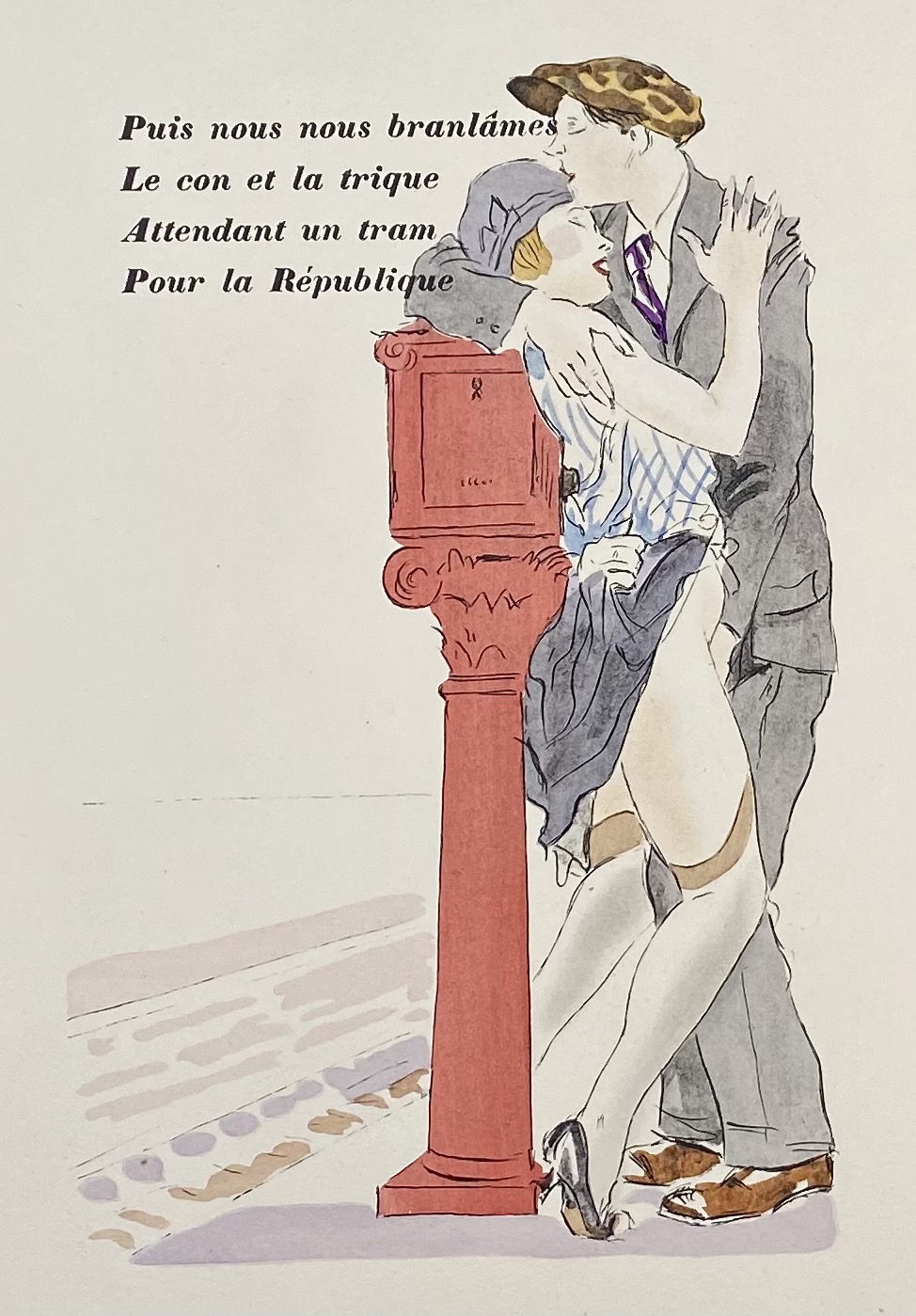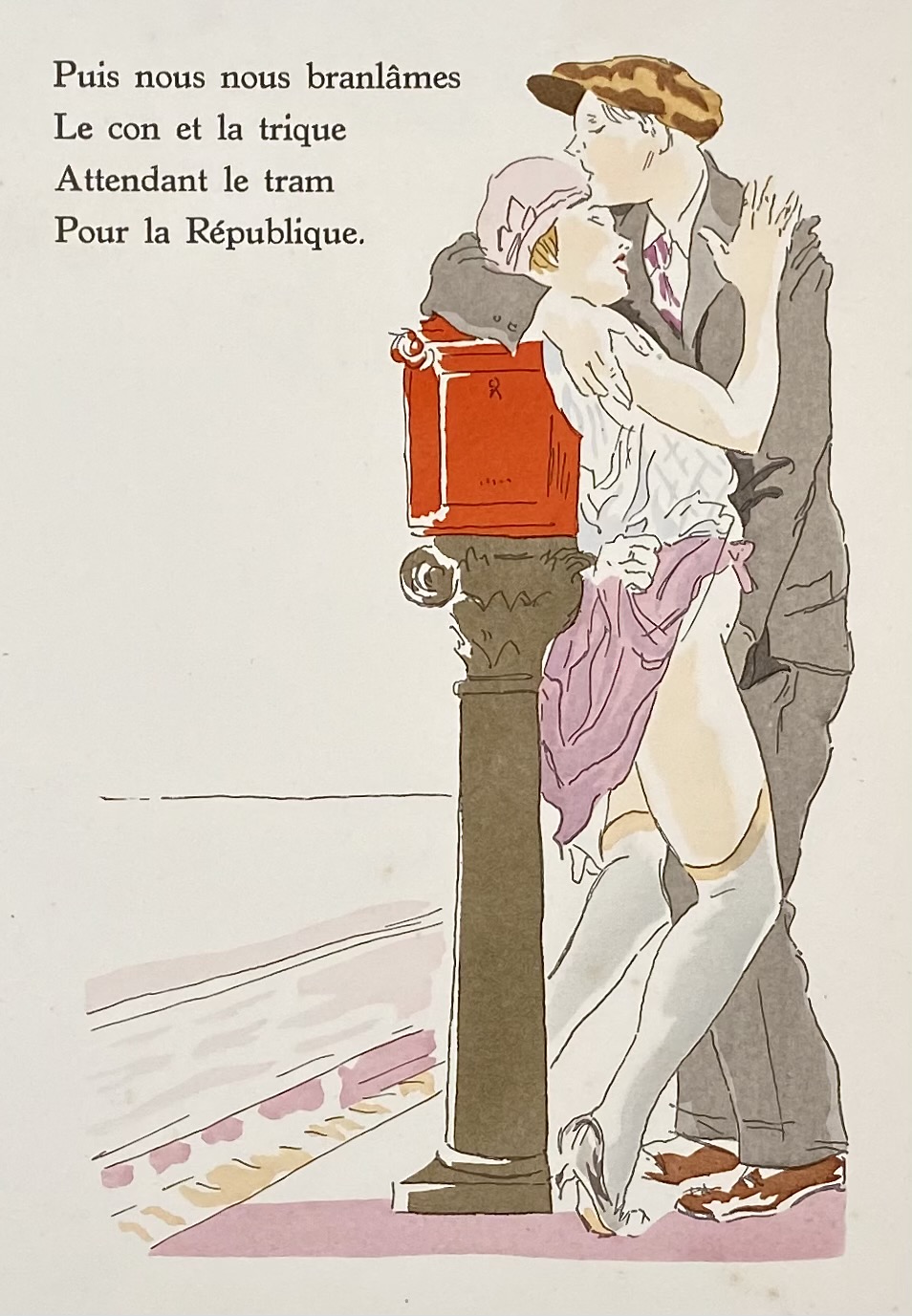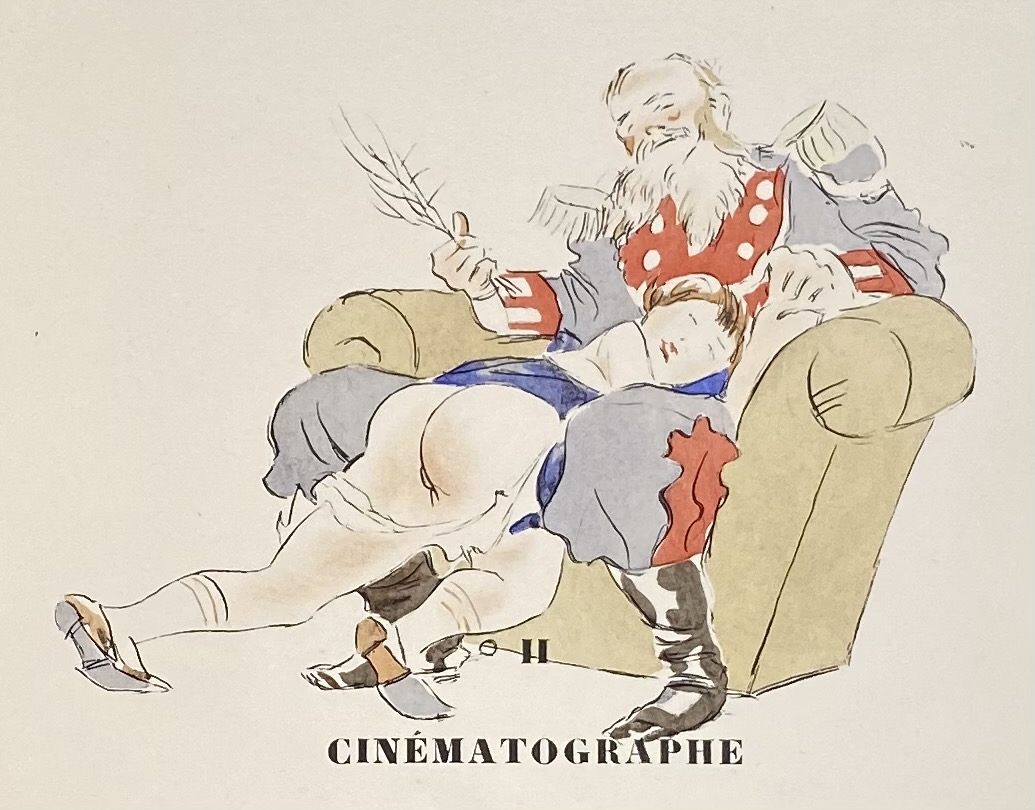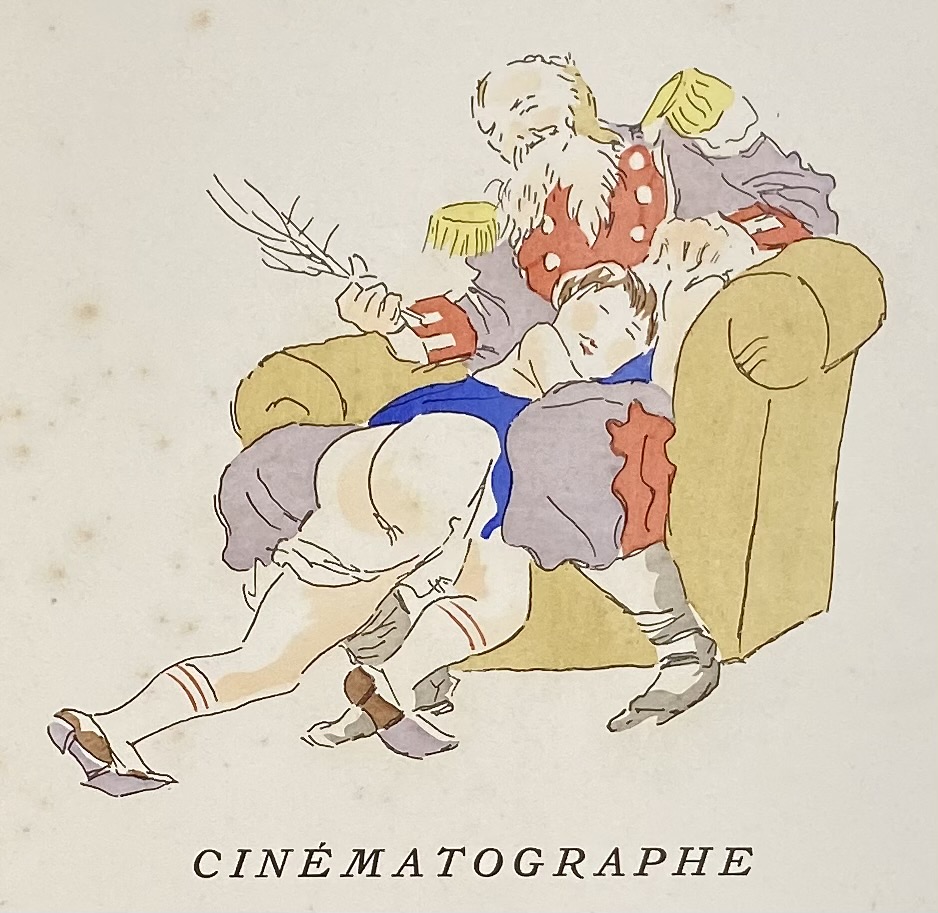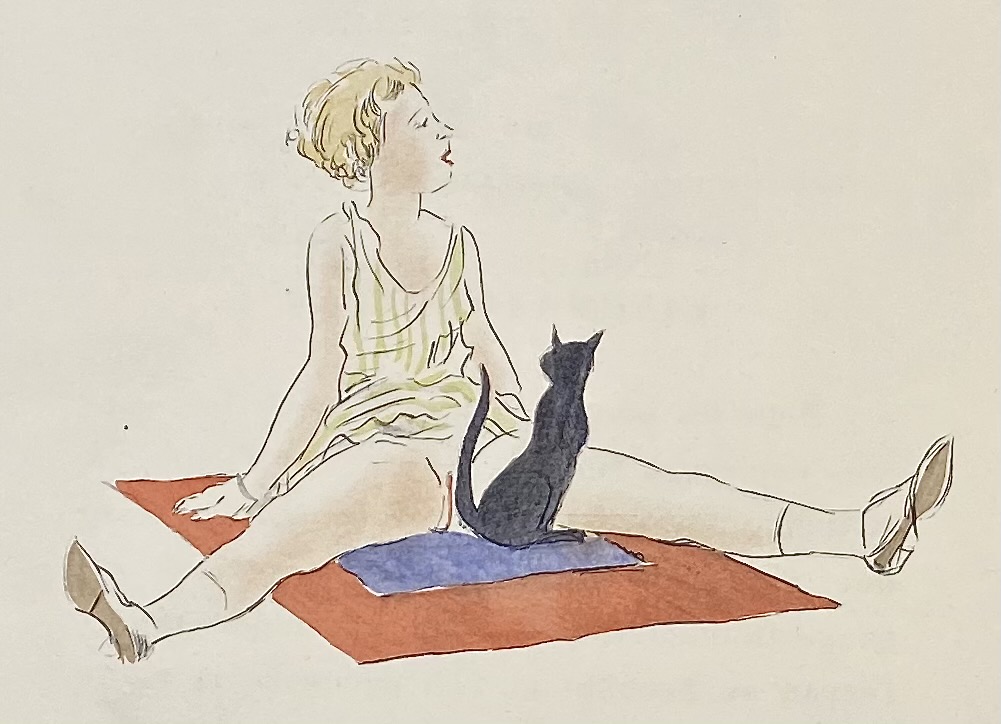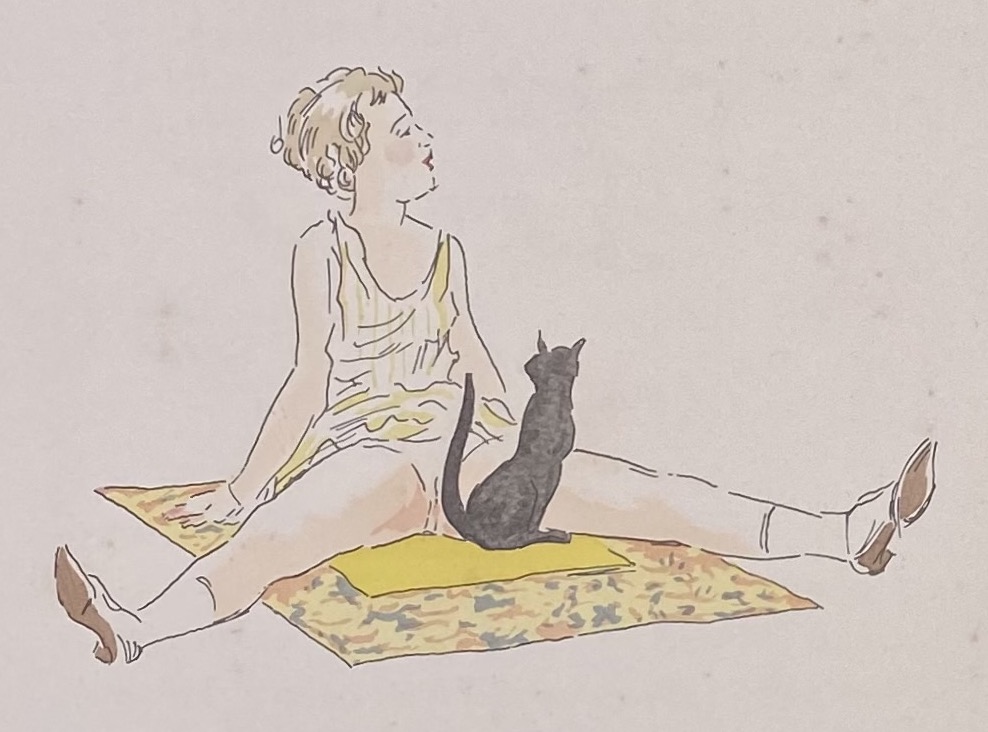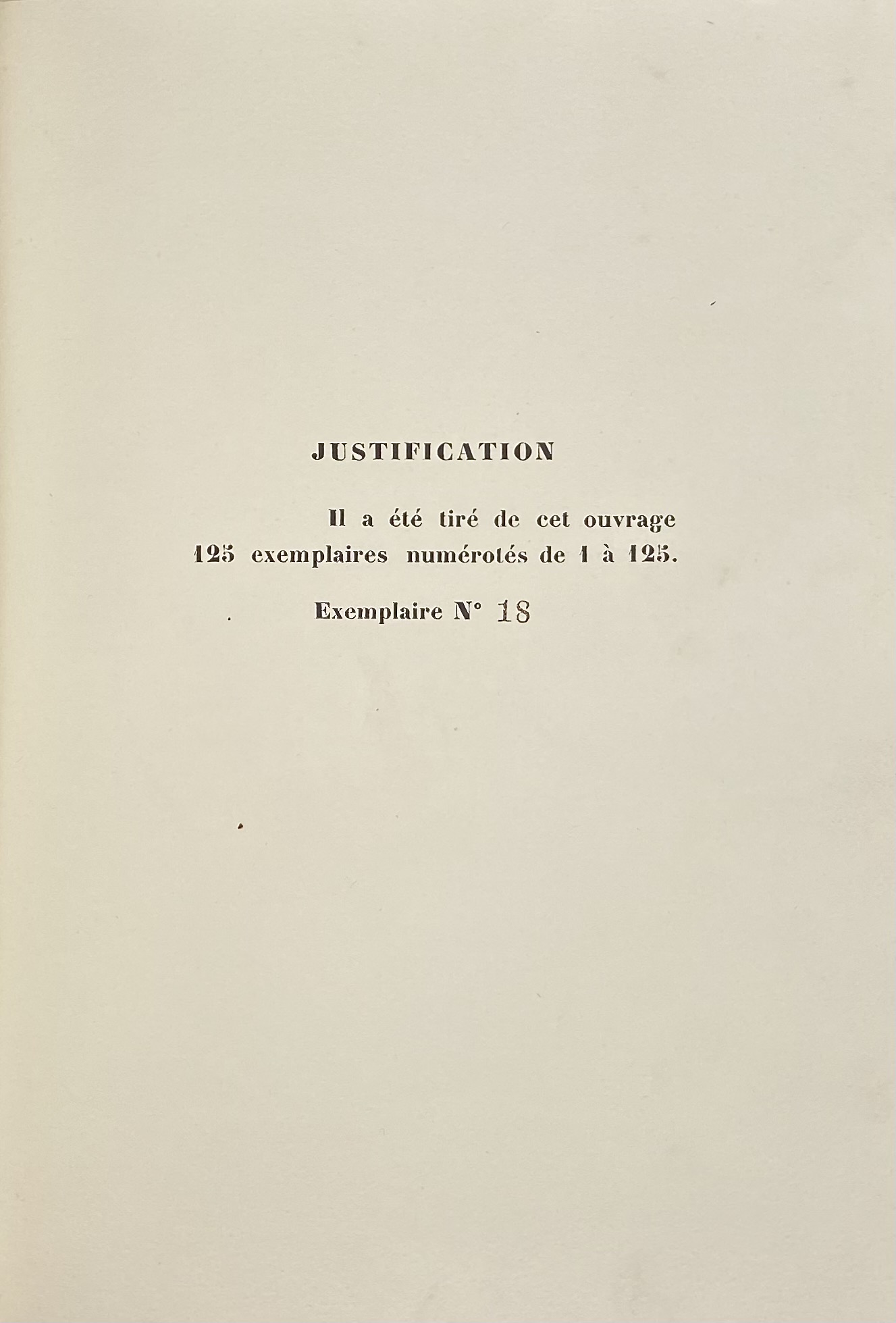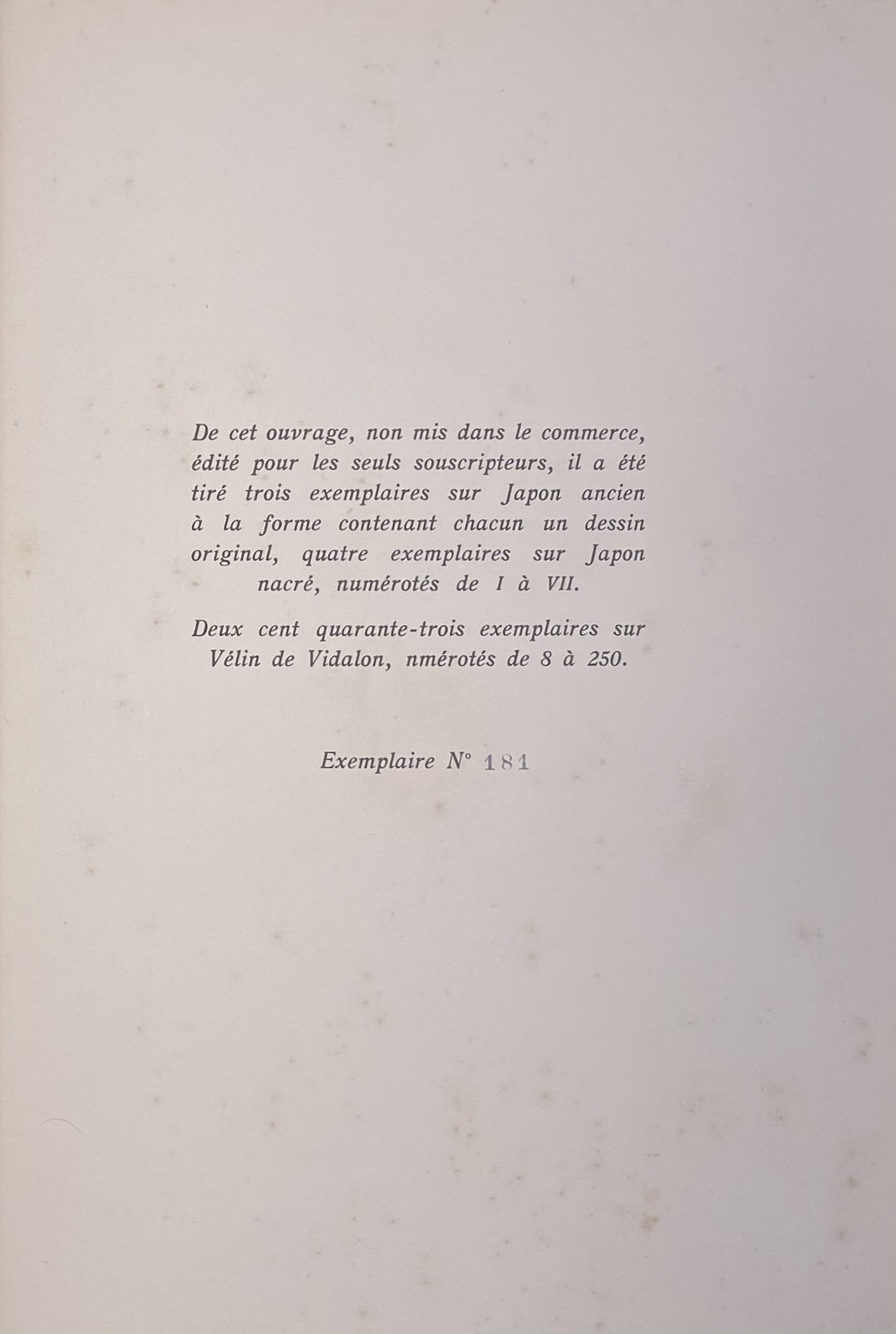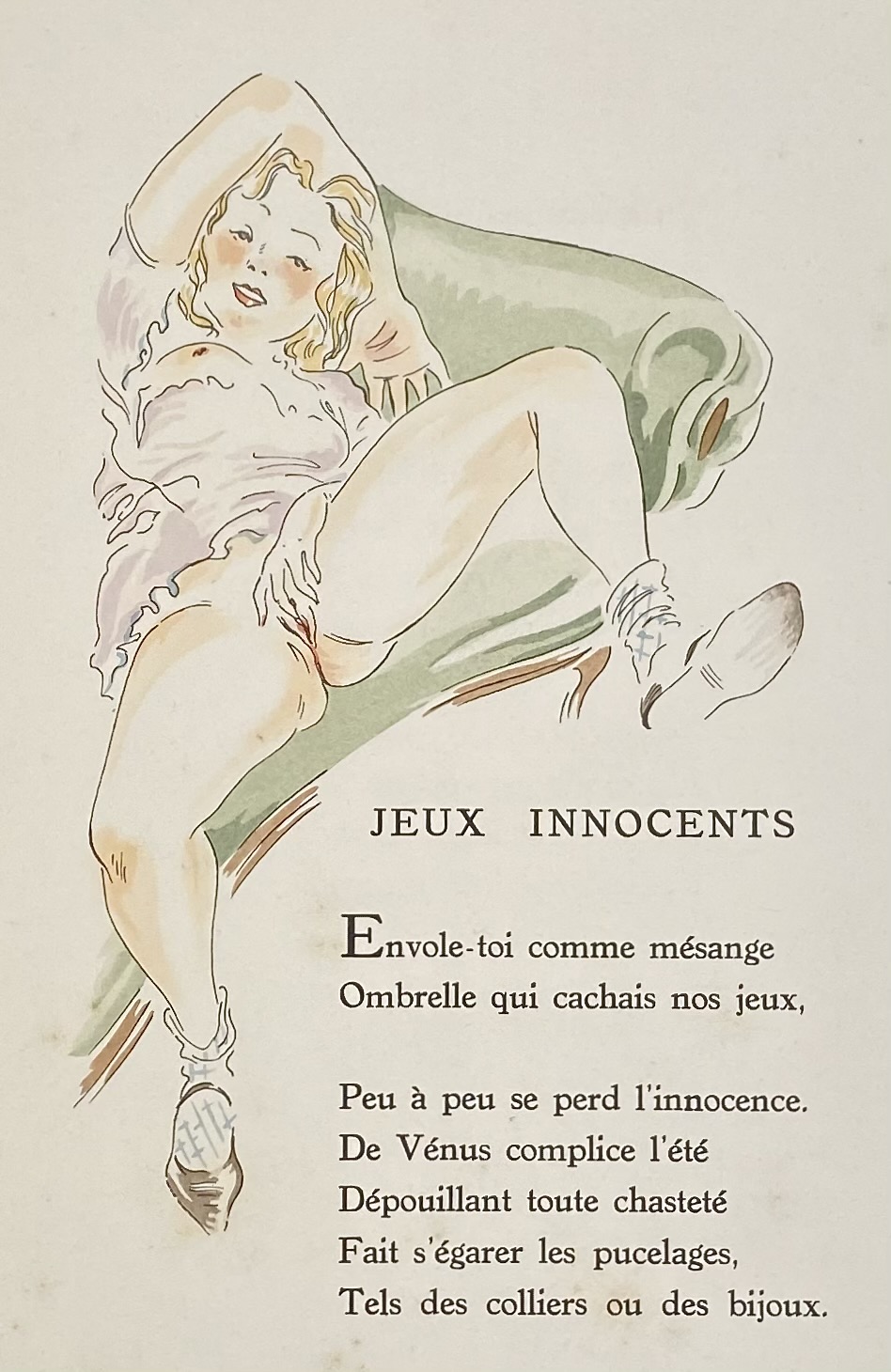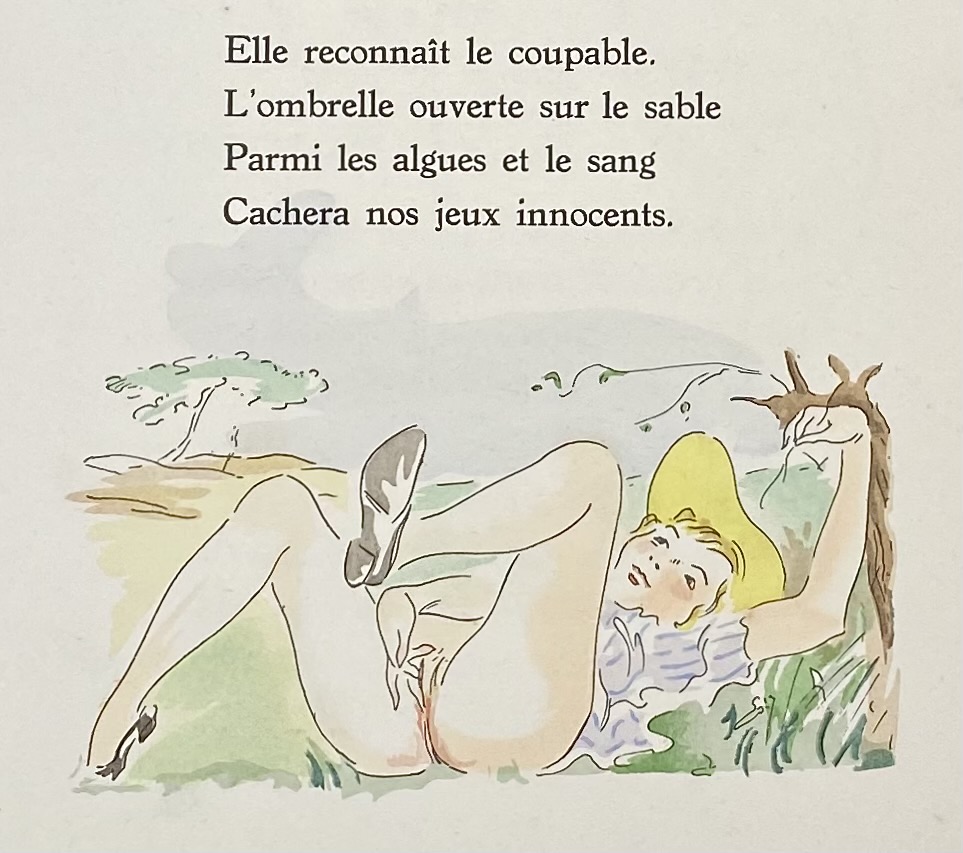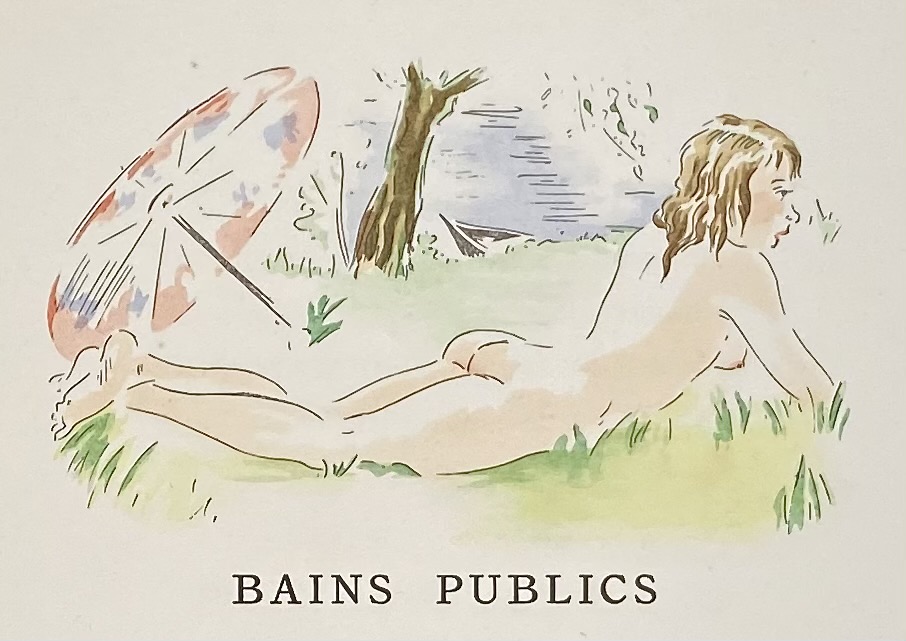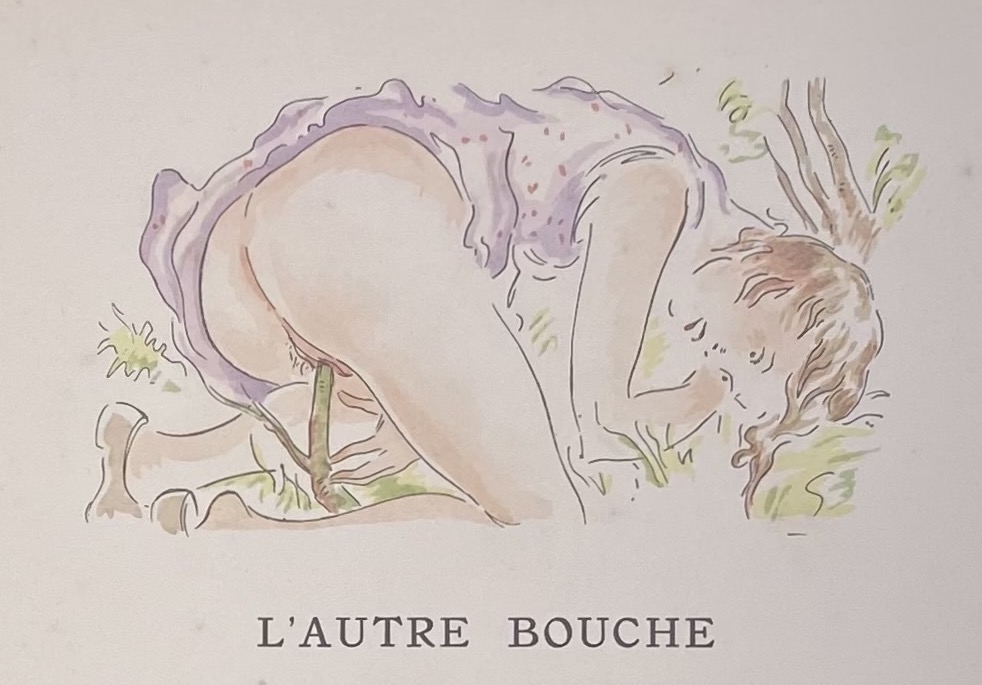-
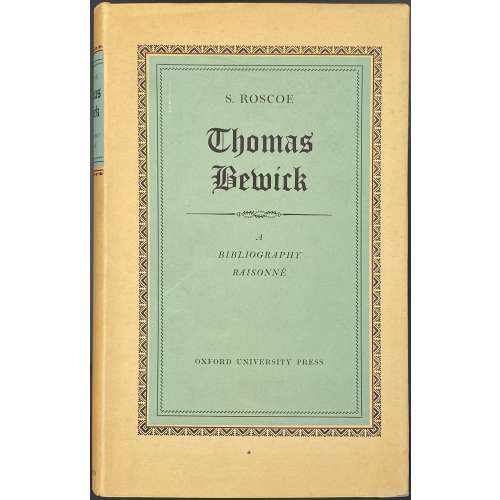 Title: S. ROSCOE | THOMAS BEWICK | A BIBLIOGRAPHY RAISONNÉ | OF EDITIONS OF THE | GENERAL HISTORY OF QUADRUPEDS | THE HISTORY OF BRITISH BIRDS | AND THE | FABLES OF AESOP | ISSUED IN HIS LIFETIME | GEOFFREY CUMBERLEGE | OXFORD UNIVERSITY PRESS | LONDON NEW YORK TORONTO | 1953 || Pagination: [2], [i-iv] v-xxx, 1-198 [2]; collation: 8vo, [a]-b8, B-N8, O4, all plates within collation. Binding: 25.5 x 16.5 cm, tan cloth, black babel with gilt lettering, letterpress dust jacket. Contributors: Roscoe, Sydney – author. Cumberlege, Geoffrey Fenwick Jocelyn (British, 1891 – 1979) – publisher. Batey, Charles – printer
Title: S. ROSCOE | THOMAS BEWICK | A BIBLIOGRAPHY RAISONNÉ | OF EDITIONS OF THE | GENERAL HISTORY OF QUADRUPEDS | THE HISTORY OF BRITISH BIRDS | AND THE | FABLES OF AESOP | ISSUED IN HIS LIFETIME | GEOFFREY CUMBERLEGE | OXFORD UNIVERSITY PRESS | LONDON NEW YORK TORONTO | 1953 || Pagination: [2], [i-iv] v-xxx, 1-198 [2]; collation: 8vo, [a]-b8, B-N8, O4, all plates within collation. Binding: 25.5 x 16.5 cm, tan cloth, black babel with gilt lettering, letterpress dust jacket. Contributors: Roscoe, Sydney – author. Cumberlege, Geoffrey Fenwick Jocelyn (British, 1891 – 1979) – publisher. Batey, Charles – printer -
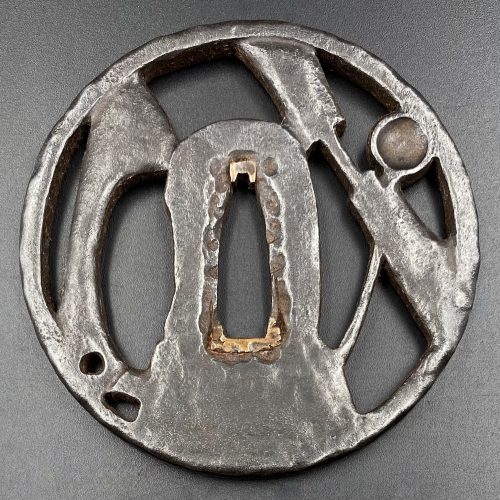 Iron tsuba of round form decorated with a ladle, pestle, mortar, and rice sickle in positive silhouette openwork (nikubori-ji-sukashi). Slightly rounded rim with iron bones (tekkotsu). Seppa-dai plugged with copper fittings (sekigane). Silver patina. The design resembles mochi-making utensils; mochi (rice cake) symbolizes longevity. Kanayama school, c. 1590 (Momoyama period). Note: unusually large size for a Kanayama tsuba: diameter 79.5 mm, thickness at seppa-dai: 5.5 mm, at rim: 6.0 mm. Concerning the design: While the ladle and pestle are clear, the mortar (under the seppa-dai), and the sickle (to the left) require certain imagination.
Iron tsuba of round form decorated with a ladle, pestle, mortar, and rice sickle in positive silhouette openwork (nikubori-ji-sukashi). Slightly rounded rim with iron bones (tekkotsu). Seppa-dai plugged with copper fittings (sekigane). Silver patina. The design resembles mochi-making utensils; mochi (rice cake) symbolizes longevity. Kanayama school, c. 1590 (Momoyama period). Note: unusually large size for a Kanayama tsuba: diameter 79.5 mm, thickness at seppa-dai: 5.5 mm, at rim: 6.0 mm. Concerning the design: While the ladle and pestle are clear, the mortar (under the seppa-dai), and the sickle (to the left) require certain imagination. -
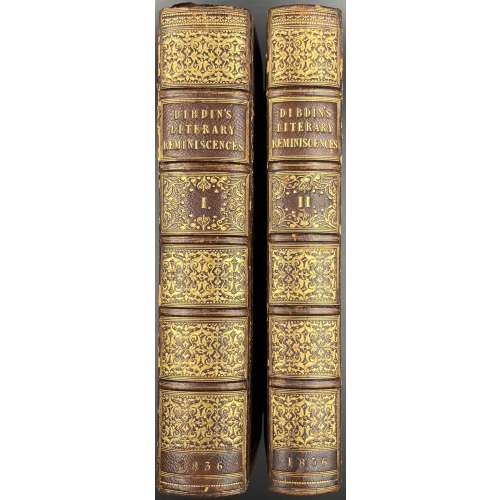 Two volumes uniformly bound by J. Mackenzie, in brown straight-grain morocco, boards with 7 gilt fillet border, fleuron corners, spine with raised bands, gilt in compartments, gilt-lettered DIBDIN’S | LITERARY | REMINISCENCES | I (or) II | 1836. All margins gilt, cream endpapers, armorial bookplate of William Henry Rossington to the front pastedown. Vol. 1: Title page: REMINISCENCES | OF | A LITERARY LIFE; | BY THE REVEREND | THOS. FROGNALL DIBDIN, D.D. | {vignette} | {one line citation | Richard de Bury} | LONDON: | JOHN MAJOR, 71, GREAT RUSSELL-STREET, | BLOOMSBURY. | MDCCCXXXVI. || Pagination: [4] two blank leaves, [i-v] vi-xxxii [4] list of plates, corrections, [1] 2-556 [4] two blank leaves. Collation: 8vo; [a]8 b8 [c]2, B-Z8, AA-MM8 NN6, 5 plates (incl. frontis. portrait by James Posselwhite after George Richmond) extraneous to collation, and a few vignettes in text. Vol. 2: Title page: REMINISCENCES | OF | A LITERARY LIFE; | WITH ANECDOTES OF BOOKS, | AND OF | BOOK COLLECTORS: | BY THE REVEREND | THOS. FROGNALL DIBDIN, D.D. | PART THE SECOND. | LONDON: | JOHN MAJOR, 71, GREAT RUSSELL-STREET, | BLOOMSBURY. | MDCCCXXXVI. || Pagination: [4] two blank leaves, [2] title/blank, 557-982, [1-3] 4-44 index, [4] two blank leaves. Collation: 8vo; [NN]2 OO-ZZ8 3A-3Q8 3R3, B-C8 D4, 5 plates (incl. frontis. “The Library, Eshton Hall”) extraneous to collation, and a few vignettes in text. Catalogue raisonné: Windle, Pippin (1999): A62 / pp. 171-177. Contributors: Author: Thomas Frognall Dibdin (British, 1776 – 1847) Artists: George Richmond (British, 1809 – 1896); Mary Dawson Turner [neé Mary Palgrave] (British, 1774 – 1850); Frederick Mackenzie (British, 1788? – 1854); C. J. Stewart (British, fl. 1830s). Copper engravers: James Posselwhite (British, 1798-1884); Philip Audinet (British, 1766 – 1837); William Henry Worthington. (British, c. 1790 – after 1839); Samuel Rawle (British, 1771 – 1860); Samuel Freeman (British, 1773 – 1857); James Thomson (British, 1788–1850). Wood engravings by John Byfield (British, 1788-1841) and his sister Mary Byfield (British, 1795 – 1871). Printer: William Wilcockson, Rolls Buildings, Fetter Lane. Publisher: John Major (British, 1782 – 1849) Binder: John Mackenzie (British, 1788 – c.1850) – held the office of bookbinder to both King George IV and King William IV. Bookplate: Colonel William Henry Rossington (American, 1848 – 1908)
Two volumes uniformly bound by J. Mackenzie, in brown straight-grain morocco, boards with 7 gilt fillet border, fleuron corners, spine with raised bands, gilt in compartments, gilt-lettered DIBDIN’S | LITERARY | REMINISCENCES | I (or) II | 1836. All margins gilt, cream endpapers, armorial bookplate of William Henry Rossington to the front pastedown. Vol. 1: Title page: REMINISCENCES | OF | A LITERARY LIFE; | BY THE REVEREND | THOS. FROGNALL DIBDIN, D.D. | {vignette} | {one line citation | Richard de Bury} | LONDON: | JOHN MAJOR, 71, GREAT RUSSELL-STREET, | BLOOMSBURY. | MDCCCXXXVI. || Pagination: [4] two blank leaves, [i-v] vi-xxxii [4] list of plates, corrections, [1] 2-556 [4] two blank leaves. Collation: 8vo; [a]8 b8 [c]2, B-Z8, AA-MM8 NN6, 5 plates (incl. frontis. portrait by James Posselwhite after George Richmond) extraneous to collation, and a few vignettes in text. Vol. 2: Title page: REMINISCENCES | OF | A LITERARY LIFE; | WITH ANECDOTES OF BOOKS, | AND OF | BOOK COLLECTORS: | BY THE REVEREND | THOS. FROGNALL DIBDIN, D.D. | PART THE SECOND. | LONDON: | JOHN MAJOR, 71, GREAT RUSSELL-STREET, | BLOOMSBURY. | MDCCCXXXVI. || Pagination: [4] two blank leaves, [2] title/blank, 557-982, [1-3] 4-44 index, [4] two blank leaves. Collation: 8vo; [NN]2 OO-ZZ8 3A-3Q8 3R3, B-C8 D4, 5 plates (incl. frontis. “The Library, Eshton Hall”) extraneous to collation, and a few vignettes in text. Catalogue raisonné: Windle, Pippin (1999): A62 / pp. 171-177. Contributors: Author: Thomas Frognall Dibdin (British, 1776 – 1847) Artists: George Richmond (British, 1809 – 1896); Mary Dawson Turner [neé Mary Palgrave] (British, 1774 – 1850); Frederick Mackenzie (British, 1788? – 1854); C. J. Stewart (British, fl. 1830s). Copper engravers: James Posselwhite (British, 1798-1884); Philip Audinet (British, 1766 – 1837); William Henry Worthington. (British, c. 1790 – after 1839); Samuel Rawle (British, 1771 – 1860); Samuel Freeman (British, 1773 – 1857); James Thomson (British, 1788–1850). Wood engravings by John Byfield (British, 1788-1841) and his sister Mary Byfield (British, 1795 – 1871). Printer: William Wilcockson, Rolls Buildings, Fetter Lane. Publisher: John Major (British, 1782 – 1849) Binder: John Mackenzie (British, 1788 – c.1850) – held the office of bookbinder to both King George IV and King William IV. Bookplate: Colonel William Henry Rossington (American, 1848 – 1908) -
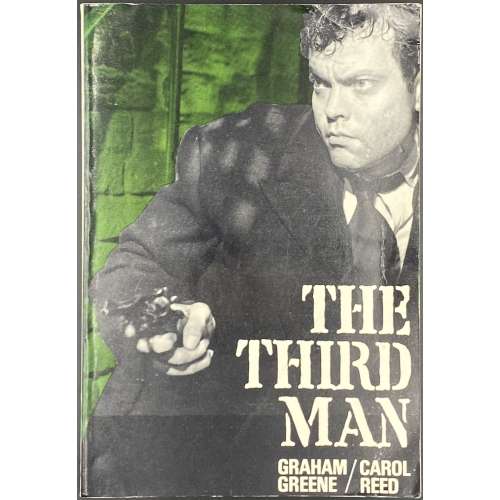 Title page: Title page: MODERN | FILM | SCRIPTS | THE THIRD MAN | a film by | Graham Greene | and Carol Reed | Lorrimer, London. Pagination: [1-4] 5-134 [2] blank; pasted into the last page: The film The Third Man is owned and distributed by British | Lion Films Ltd. Binding: publisher’s pictorial wrappers with the film still and lettering in white to front, and in black to back, and spine. Size: 20.2 x 14 cm. The Third Man is a 1949 British film directed by Carol Reed, written by Graham Greene and starring Joseph Cotten, Alida Valli, Orson Welles, and Trevor Howard. Contributors: Graham Greene (British, 1904 – 1991) – author. Carol Reed (British, 1906 – 1976) – film director. Lorrimer Publishing Limited (London) – publisher. Villiers Publications, Ltd. (London) – printer.
Title page: Title page: MODERN | FILM | SCRIPTS | THE THIRD MAN | a film by | Graham Greene | and Carol Reed | Lorrimer, London. Pagination: [1-4] 5-134 [2] blank; pasted into the last page: The film The Third Man is owned and distributed by British | Lion Films Ltd. Binding: publisher’s pictorial wrappers with the film still and lettering in white to front, and in black to back, and spine. Size: 20.2 x 14 cm. The Third Man is a 1949 British film directed by Carol Reed, written by Graham Greene and starring Joseph Cotten, Alida Valli, Orson Welles, and Trevor Howard. Contributors: Graham Greene (British, 1904 – 1991) – author. Carol Reed (British, 1906 – 1976) – film director. Lorrimer Publishing Limited (London) – publisher. Villiers Publications, Ltd. (London) – printer. -
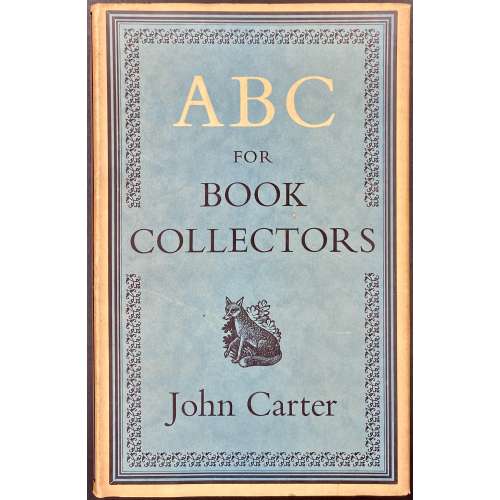 Title: ABC | FOR | BOOK-COLLECTORS | BY | JOHN CARTER | {publisher’s device} | RUPERT HART-DAVIS | SOHO SQUARE LONDON | 1952 | [TITLE-PAGE] || Pagination: [1-6] 7-191 [192 advert.], total number of pages 192. Collation: 8vo; [A]8 B-M8, total number of leaves 96. Binding: 21 x 13.5 cm, aubergine cloth, gilt lettering to spine, pictorial endpapers; cream unclipped (15s. net) dust-jacket with the sea-green panel in a border, with a fleuron frame, black and cream lettering, and publisher’s device to front; lettering to spine and back; folded prospectus insert loose. Edition: 1st. Contributors: Carter, John Waynflete (British, 1905 – 1975) – author Hart-Davis, Sir Rupert Charles (British, 1907 – 1999); Rupert Hart-Davis Ltd. (London) – publisher. Hazell, Watson and Viney, Ltd. – printer.
Title: ABC | FOR | BOOK-COLLECTORS | BY | JOHN CARTER | {publisher’s device} | RUPERT HART-DAVIS | SOHO SQUARE LONDON | 1952 | [TITLE-PAGE] || Pagination: [1-6] 7-191 [192 advert.], total number of pages 192. Collation: 8vo; [A]8 B-M8, total number of leaves 96. Binding: 21 x 13.5 cm, aubergine cloth, gilt lettering to spine, pictorial endpapers; cream unclipped (15s. net) dust-jacket with the sea-green panel in a border, with a fleuron frame, black and cream lettering, and publisher’s device to front; lettering to spine and back; folded prospectus insert loose. Edition: 1st. Contributors: Carter, John Waynflete (British, 1905 – 1975) – author Hart-Davis, Sir Rupert Charles (British, 1907 – 1999); Rupert Hart-Davis Ltd. (London) – publisher. Hazell, Watson and Viney, Ltd. – printer. -
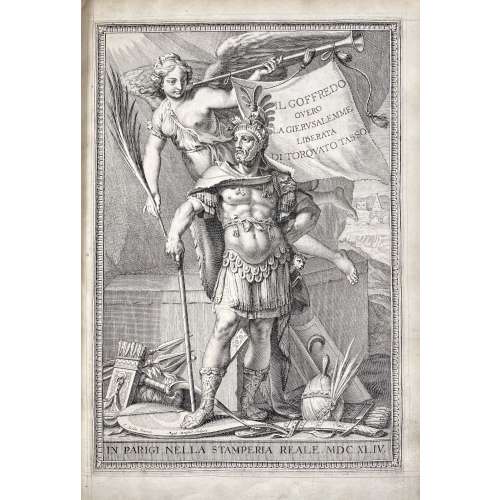 Title page: IL | GOFFREDO | OVERO | LA | GIERUSALEMME | LIBERATA | DI TORQUATO TASSO. || Engraved title: On the banner: IL GOFFREDO | OVERO | LA GIERUSALEMME | LIBERATA | DI TORQUATO TASSO ||; under the image, within frame: IN PARIGI NELLA STAMPERIA REALE MDC XLIV. Signed: J. Stella Invenit — Ægid Rousselet Sculpsit (with tall “s”) || Collation: 2 blank leaves with donation ink inscription to recto of the 1st: “Ex Dono Patruelis Do Roberto Willughby” [i.e. Robert Willoughby]; t.p. / blank, engraved t.p. by Gilles Rousselet after Jacques Stella / blank, “Allegoria dell poema” 4 leaves, 1st two leaves signed iij and iiij, respectively; π6 A-Z4 Aa-Zz4 Aaa-Rrr4, 2 blank leaves at the end; text paginated from 1 to 502 [2] (p. 503 tailpiece, p. 504 blank); a printable area marked with vertical and horizontal double lines; total: 252 leaves of text (504 pages), 6 prelims and 4 blanks. Illustrated throughout with head- and tailpieces, and historiated initials. Binding: 18th-century red crushed morocco, triple-fillet gilt border, triple-fillet gilt frame, panel with gilt lozenge centrepiece, lozenges at corners, marbled endpapers, AEG, crudely rebacked retaining original spine with raised bands, gilt in compartments, crimson label with gilt lettering; The Robin Collection bookplate to front pastedown. Provenance: The Robin Collection; Robert Willoughby family. Contributors: Torquato Tasso (Italian, 1544 –1595) – author. Jacques Stella (French, 1596 – 1657) – artist. Gilles [Aegidius] Rousselet (French, 1610 – 1686) – engraver.
Title page: IL | GOFFREDO | OVERO | LA | GIERUSALEMME | LIBERATA | DI TORQUATO TASSO. || Engraved title: On the banner: IL GOFFREDO | OVERO | LA GIERUSALEMME | LIBERATA | DI TORQUATO TASSO ||; under the image, within frame: IN PARIGI NELLA STAMPERIA REALE MDC XLIV. Signed: J. Stella Invenit — Ægid Rousselet Sculpsit (with tall “s”) || Collation: 2 blank leaves with donation ink inscription to recto of the 1st: “Ex Dono Patruelis Do Roberto Willughby” [i.e. Robert Willoughby]; t.p. / blank, engraved t.p. by Gilles Rousselet after Jacques Stella / blank, “Allegoria dell poema” 4 leaves, 1st two leaves signed iij and iiij, respectively; π6 A-Z4 Aa-Zz4 Aaa-Rrr4, 2 blank leaves at the end; text paginated from 1 to 502 [2] (p. 503 tailpiece, p. 504 blank); a printable area marked with vertical and horizontal double lines; total: 252 leaves of text (504 pages), 6 prelims and 4 blanks. Illustrated throughout with head- and tailpieces, and historiated initials. Binding: 18th-century red crushed morocco, triple-fillet gilt border, triple-fillet gilt frame, panel with gilt lozenge centrepiece, lozenges at corners, marbled endpapers, AEG, crudely rebacked retaining original spine with raised bands, gilt in compartments, crimson label with gilt lettering; The Robin Collection bookplate to front pastedown. Provenance: The Robin Collection; Robert Willoughby family. Contributors: Torquato Tasso (Italian, 1544 –1595) – author. Jacques Stella (French, 1596 – 1657) – artist. Gilles [Aegidius] Rousselet (French, 1610 – 1686) – engraver. -
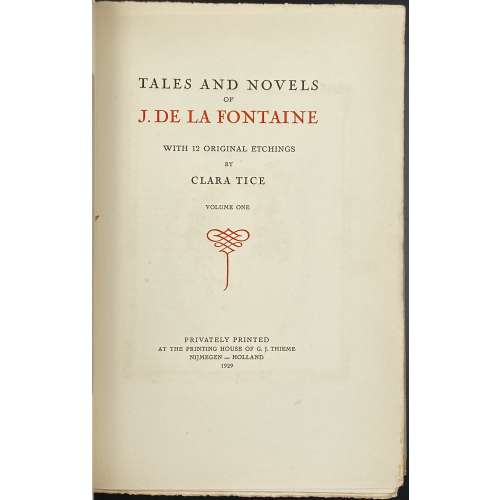 Title-page (in red and black): TALES AND NOVELS | OF | J. DE LA FONTAINE | WITH 12 ORIGINAL ETCHINGS | BY | CLARA TICE | VOLUME ONE (TWO) | {arabesque} | PRIVATELY PRINTED | AT THE PRINTING HOUSE OF G. J. THIEME | NIJMEGEN ~ HOLLAND | 1929 || Collation: 8vo. Vol. 1: π8 (2 blanks, h.t. / limitation №103 of 990, frontispiece etched portrait of La Fontaine w/ tissue guard, 4 leaves uncut with table and preface), 1—138, incl. 2 final blanks, paginated: xvi, 204 [4], plus 5 etchings besides frontis., all with tissue guards, by Clara Tice, in sepia. Vol. 2: π8, 1-188, paginated: xvi, 270 [271] epitaph, [272] blank, plus 6 etchings w/ tissue guards, by Clara Tice. Binding: 25.3 x 16.8 cm, quarter faux parchment over light blue publisher's boards, gilt lettering to spine. Ticket to front pastedown in each volume: “FROM THE COLLECTION | OF PRINCETON ANTIQUES BOOKFINDERS”, etc. Etchings printed on wove paper, text – on laid paper; untrimmed, uncut. Edition: limited, privately printed run of 990 copies of which this is №103.
Title-page (in red and black): TALES AND NOVELS | OF | J. DE LA FONTAINE | WITH 12 ORIGINAL ETCHINGS | BY | CLARA TICE | VOLUME ONE (TWO) | {arabesque} | PRIVATELY PRINTED | AT THE PRINTING HOUSE OF G. J. THIEME | NIJMEGEN ~ HOLLAND | 1929 || Collation: 8vo. Vol. 1: π8 (2 blanks, h.t. / limitation №103 of 990, frontispiece etched portrait of La Fontaine w/ tissue guard, 4 leaves uncut with table and preface), 1—138, incl. 2 final blanks, paginated: xvi, 204 [4], plus 5 etchings besides frontis., all with tissue guards, by Clara Tice, in sepia. Vol. 2: π8, 1-188, paginated: xvi, 270 [271] epitaph, [272] blank, plus 6 etchings w/ tissue guards, by Clara Tice. Binding: 25.3 x 16.8 cm, quarter faux parchment over light blue publisher's boards, gilt lettering to spine. Ticket to front pastedown in each volume: “FROM THE COLLECTION | OF PRINCETON ANTIQUES BOOKFINDERS”, etc. Etchings printed on wove paper, text – on laid paper; untrimmed, uncut. Edition: limited, privately printed run of 990 copies of which this is №103. -
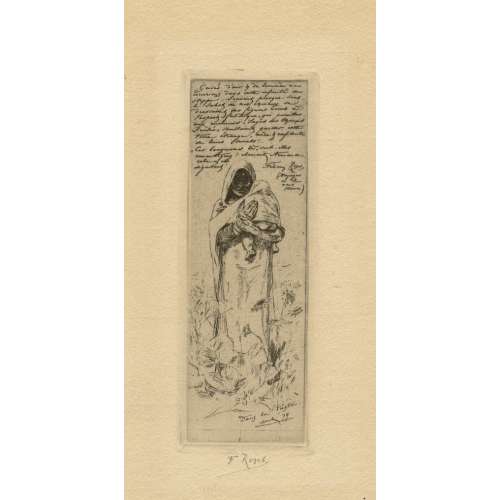
Etching and drypoint, signed in pencil by the artist under the plate; 2nd state. Pasted on a sheet of blue paper. Fragment of "La messe de Gnide". Owner's stamp 'LvM' on verso.
Dimensions: Blue paper: 32 x 27 cm; Laid paper: 30.7 x 22 cm; Image: 12.5 x 4 cm.
Catalogue raisonné: Arthur Hubschmid (1977): 364; Graphics irreverent and erotic (1968): 59; Rouir: 508.
-
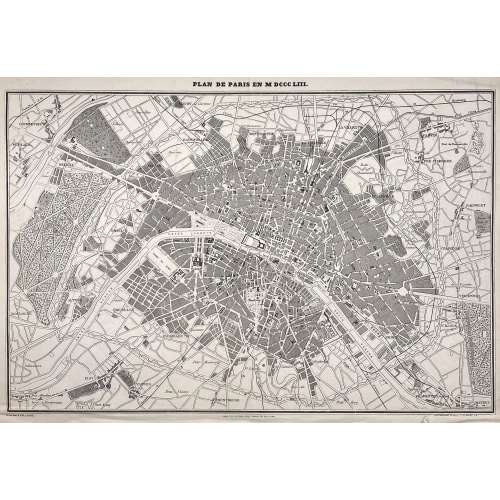 Above the frame: PLAN DE PARIS EN MDCCCLIII. Below the frame: Gravé par F. DELAMARE […] PARIS. TYP. DE FIRMIN DIDOT FRÈRES, 56, RUE JACOB. […] PANICONOGRAPHIE DE GILLOT. Q. ST. MICHEL 23. Dimensions: Sheet: 37 x 52.5 cm: Image: 33 x 50 cm. Technique: Photozincography Contributors: Ferdinand Théodore Delamare (French, fl. 1850 – 1889) – engraver. Firmin Didot Frères ; Firmin Didot (French, 1764 – 1836) – publisher. Firmin Gillot (French, 1819 – 1872) – printer.
Above the frame: PLAN DE PARIS EN MDCCCLIII. Below the frame: Gravé par F. DELAMARE […] PARIS. TYP. DE FIRMIN DIDOT FRÈRES, 56, RUE JACOB. […] PANICONOGRAPHIE DE GILLOT. Q. ST. MICHEL 23. Dimensions: Sheet: 37 x 52.5 cm: Image: 33 x 50 cm. Technique: Photozincography Contributors: Ferdinand Théodore Delamare (French, fl. 1850 – 1889) – engraver. Firmin Didot Frères ; Firmin Didot (French, 1764 – 1836) – publisher. Firmin Gillot (French, 1819 – 1872) – printer. -
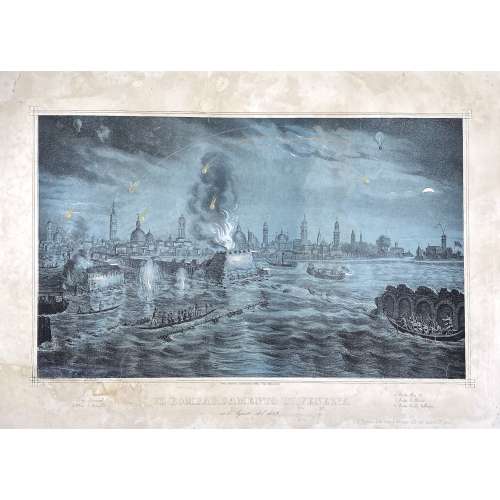 Quaritch's description: Single sheet (435 x 625 mm); coloured lithograph by Kirchmayr after a drawing by M. Fontana; hand-painted details; signed to lower left ‘M. Fon[tana]’ and to lower right ‘M. Fontana Edit. Prop. S. Giacomo dall’Orio in Isola N°.1481’; lower margin with the title ‘Il bombardamento di Venezia nell’Agosto 1849’ and key; restored tears in many places, especially along upper and lower blank margins, some affecting print; losses to lower left corner, affecting a small portion of the print, ruled border, and key, restored and re-drawn where needed; loss to the upper left corner of blank margin; two small areas of restoration to the centre of upper blank margin; the whole sheet backed; nevertheless a remarkable survival. Exceedingly rare and striking lithograph of Venice as seen from Fusina, depicting the first ever aerial bombardment in history. The bombardment took place in 1849, under the orders of Field Marshal Josef Radetzky (1766–1858), to quell the revolts that had started the previous year during the First Italian War of Independence. This curious and little-known action was the brainchild of Colonel Benno Uchatius, a brilliant young officer in the Austro-Hungarian Artillery. After long months of unsuccessful siege, Uchatius decided to deploy an unusual weapon: a hot air balloon able to bomb the city from above. Having calculated the wind speed and direction and evaluated the requisite dimensions of the hot-air balloon, Uchatius set up a workshop near Mestre, where a group of engineers and craftsmen began to manufacture a balloon equipped with a large wicker basket which could transport two crewmen and approximately one hundred kilograms of small long-fuse devices (metal spheres filled with gunpowder, pitch, oil and five hundred rifle buckshot). The initial trials, however, proved to be a disaster, because the balloon would drift off course, making it impossible to accurately deploy the bombs. Uchatius then hit upon the idea of using several smaller unmanned balloons roped together. These were to be launched over the city and, using the position of the first ‘pilot’ balloon, which was unarmed, the Austrians could calculate the correct fuse settings for the bombs. The ‘bomber’ balloons had a cloth envelope of one hundred cubic metres and a reduced load of about twenty kilograms of ordnance. According to Uchatius’ calculations, the line of balloons, launched from Mestre, would reach the lagoon city in thirty-five to forty minutes, carried by the north-west wind. In July 1849, a first launch was attempted, but when a breeze began to blow from the sea some of the balloons broke the connecting ropes and floated away, while others settled in the water in front of the northern part of the city, where a curious crowd of Venetians observed the failure of the enterprise and commented colourfully on the ‘buffoonery of Radetzky’. Uchatius’ second attempt, which is depicted in this lithograph, was also largely unsuccessful: only a few of the unmanned bomber balloons reached their target, and some even drifted back over the Austrian lines. Uchatius, having accomplished the first ever aerial bombardment, and having designed the first ever military ‘drones’, was forced to abandon the project permanently. Another fascinating aspect of this work is the vantage point used to depict the city of Venice, seen here from Fusina, a very rare viewpoint that makes this piece even more remarkable. We were unable to locate any copies in any institution or bibliography. G. Kirchmayr (fl. mid-19th century) is mentioned at British Museum database as "Lithographer active in Venice; related to Venetian painter Cherubino Kirchmayr (b. 1848)?" However, I was not able to find that name on the print. Not much is known of M. Fontana either.
Quaritch's description: Single sheet (435 x 625 mm); coloured lithograph by Kirchmayr after a drawing by M. Fontana; hand-painted details; signed to lower left ‘M. Fon[tana]’ and to lower right ‘M. Fontana Edit. Prop. S. Giacomo dall’Orio in Isola N°.1481’; lower margin with the title ‘Il bombardamento di Venezia nell’Agosto 1849’ and key; restored tears in many places, especially along upper and lower blank margins, some affecting print; losses to lower left corner, affecting a small portion of the print, ruled border, and key, restored and re-drawn where needed; loss to the upper left corner of blank margin; two small areas of restoration to the centre of upper blank margin; the whole sheet backed; nevertheless a remarkable survival. Exceedingly rare and striking lithograph of Venice as seen from Fusina, depicting the first ever aerial bombardment in history. The bombardment took place in 1849, under the orders of Field Marshal Josef Radetzky (1766–1858), to quell the revolts that had started the previous year during the First Italian War of Independence. This curious and little-known action was the brainchild of Colonel Benno Uchatius, a brilliant young officer in the Austro-Hungarian Artillery. After long months of unsuccessful siege, Uchatius decided to deploy an unusual weapon: a hot air balloon able to bomb the city from above. Having calculated the wind speed and direction and evaluated the requisite dimensions of the hot-air balloon, Uchatius set up a workshop near Mestre, where a group of engineers and craftsmen began to manufacture a balloon equipped with a large wicker basket which could transport two crewmen and approximately one hundred kilograms of small long-fuse devices (metal spheres filled with gunpowder, pitch, oil and five hundred rifle buckshot). The initial trials, however, proved to be a disaster, because the balloon would drift off course, making it impossible to accurately deploy the bombs. Uchatius then hit upon the idea of using several smaller unmanned balloons roped together. These were to be launched over the city and, using the position of the first ‘pilot’ balloon, which was unarmed, the Austrians could calculate the correct fuse settings for the bombs. The ‘bomber’ balloons had a cloth envelope of one hundred cubic metres and a reduced load of about twenty kilograms of ordnance. According to Uchatius’ calculations, the line of balloons, launched from Mestre, would reach the lagoon city in thirty-five to forty minutes, carried by the north-west wind. In July 1849, a first launch was attempted, but when a breeze began to blow from the sea some of the balloons broke the connecting ropes and floated away, while others settled in the water in front of the northern part of the city, where a curious crowd of Venetians observed the failure of the enterprise and commented colourfully on the ‘buffoonery of Radetzky’. Uchatius’ second attempt, which is depicted in this lithograph, was also largely unsuccessful: only a few of the unmanned bomber balloons reached their target, and some even drifted back over the Austrian lines. Uchatius, having accomplished the first ever aerial bombardment, and having designed the first ever military ‘drones’, was forced to abandon the project permanently. Another fascinating aspect of this work is the vantage point used to depict the city of Venice, seen here from Fusina, a very rare viewpoint that makes this piece even more remarkable. We were unable to locate any copies in any institution or bibliography. G. Kirchmayr (fl. mid-19th century) is mentioned at British Museum database as "Lithographer active in Venice; related to Venetian painter Cherubino Kirchmayr (b. 1848)?" However, I was not able to find that name on the print. Not much is known of M. Fontana either. -
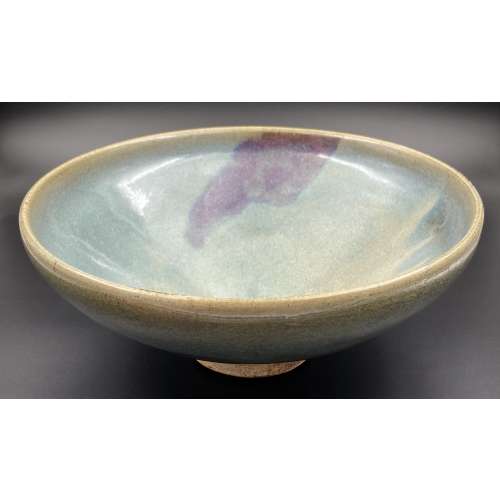 Bowl with tapered sides, lavender-blue glaze and a large purple splash on the interior; yellowish rim; foot unglazed. China, the Yuan Dynasty [大元] (1279 – 1368). Diameter: 21 cm; Height: 9 cm.
Bowl with tapered sides, lavender-blue glaze and a large purple splash on the interior; yellowish rim; foot unglazed. China, the Yuan Dynasty [大元] (1279 – 1368). Diameter: 21 cm; Height: 9 cm. -
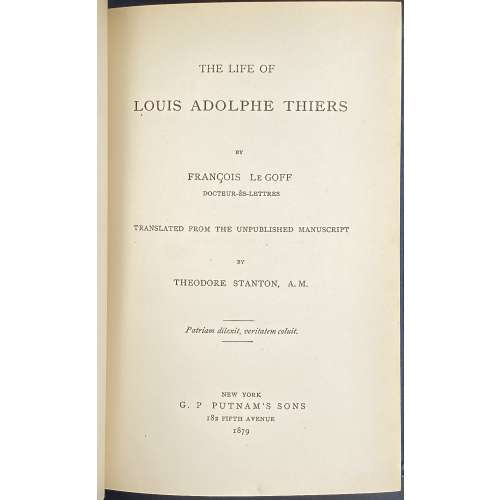 Title: THE LIFE OF LOUIS ADOLPHE THIERS | BY | FRANCOIS Le GOFF | DOCTEUR-ÈS-LETTRES | TRANSLATED FROM THE UNPUBLISHED MANUSCRIPT | BY | THEODORE STANTON, A. M. | {motto: Patriam dilexit, veritatem coluit.} | NEW YORK | G. P Putnam's Sons, 1879 | 182 FIFTH AVENUE | 1879 || Pagination: 2 blank leaves, frontis.: portrait of A. Thiers engraved on wood by J.I. Pease w/ tissue guard, [2] fac-simile of Thiers’s handwriting / blank, [2] - t.p. / copyright, [2] – dedication / blank, [2] – translators note / blank, [2] contents / blank, [vii] viii-xi [xii], [1] 2-353 [354 blank], [4] advert., 2 blank leaves; ill.: frontis., 1 woodcut plate, 1 folding manuscript fac-simile. Binding: dark-green cloth with bevelled margins, a gilt fac-simile of Thiers’s handwriting to front board, gilt lettering to spine. Note: The motto on the title page (Patriam dilexit, veritatem coluit) is taken from A. Thiers tomb on Père-Lachaise cemetery in Paris: "He cherished his homeland and worshipped the truth".
Title: THE LIFE OF LOUIS ADOLPHE THIERS | BY | FRANCOIS Le GOFF | DOCTEUR-ÈS-LETTRES | TRANSLATED FROM THE UNPUBLISHED MANUSCRIPT | BY | THEODORE STANTON, A. M. | {motto: Patriam dilexit, veritatem coluit.} | NEW YORK | G. P Putnam's Sons, 1879 | 182 FIFTH AVENUE | 1879 || Pagination: 2 blank leaves, frontis.: portrait of A. Thiers engraved on wood by J.I. Pease w/ tissue guard, [2] fac-simile of Thiers’s handwriting / blank, [2] - t.p. / copyright, [2] – dedication / blank, [2] – translators note / blank, [2] contents / blank, [vii] viii-xi [xii], [1] 2-353 [354 blank], [4] advert., 2 blank leaves; ill.: frontis., 1 woodcut plate, 1 folding manuscript fac-simile. Binding: dark-green cloth with bevelled margins, a gilt fac-simile of Thiers’s handwriting to front board, gilt lettering to spine. Note: The motto on the title page (Patriam dilexit, veritatem coluit) is taken from A. Thiers tomb on Père-Lachaise cemetery in Paris: "He cherished his homeland and worshipped the truth". -
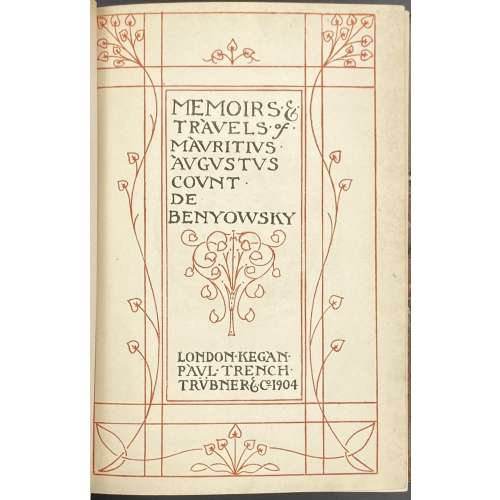 Title: MEMOIRS AND TRAVELS | OF | MAURITIUS AUGUSTUS COUNT DE | BENYOWSKY | MAGNATE OF THE KINGDOMS OF HUNGARY AND POLAND, ONE OF | THE CHIEFS OF THE CONFEDERATION OF POLAND | ETC., ETC. | Consisting of his Military Operations in Poland, his Exile into Kamchatka, | his Escape and Voyage from that Peninsula through the Northern | Pacific Ocean, touching at Japan and Formosa, to Canton | in China, with an Account of the French Settle- | ment he was appointed to form upon the | Island of Madagascar | WITH AN INTRODUCTION, NOTES AND BIBLIOGRAPHY | BY | CAPTAIN S. PASFIELD OLIVER || Half-title (ornamental, in black and red): MEMOIRS & | TRAVELS of | MAURITIUS | AUGUSTUS | COUNT | DE | BENYOWSKY | LONDON•KEGAN• | PAUL•TRENCH• | TRÜBNER•&•Co 1904 || Pagination: [i, ii] – owner pasted wood engraving “A woman of Kamchatka” / Dryden House advert., [iii, iv] – serial title / MAB (years), frontis. Portrait of MAB by Walter L. Colls w/guard, [v, vi] – ornamental h.t / copyright, [vii, viii] – t.p. / list of ill., ix-xxxvi, 1-635 [636]. Collation: 2 blank leaves (binding), [a]-b8 c2 1-398 406, 2 plates, 2 blank leaves (binding). Binding: Modern ¾ morocco over marbled boards, raised bands, gilt fleur-de-lis-cross in compartments, burgundy label with gilt lettering, by Atkinson Book Binders, Salisbury (sticker to back pastedown). Contributors: Printed by Neill and Co., Edinburgh. Published by Kegan Paul, Trench, Trübner & Co.; Kegan Paul, Charles (British, 1828 – 1902). Author: Maurice Auguste comte de Benyowsky [Мориц Август Бенёвский] (Polish-Slovak-Hungarian, 1746 –1786). Editor: Samuel Pasfield Oliver (British, 1838 – 1907). Translator: William Nicholson (British, 1753 – 1815). Originally published in 1790, in London (I have not seen it anywhere) and in Dublin by P. Wogan [etc.], and in 1791 in French, in Paris by Buisson.
Title: MEMOIRS AND TRAVELS | OF | MAURITIUS AUGUSTUS COUNT DE | BENYOWSKY | MAGNATE OF THE KINGDOMS OF HUNGARY AND POLAND, ONE OF | THE CHIEFS OF THE CONFEDERATION OF POLAND | ETC., ETC. | Consisting of his Military Operations in Poland, his Exile into Kamchatka, | his Escape and Voyage from that Peninsula through the Northern | Pacific Ocean, touching at Japan and Formosa, to Canton | in China, with an Account of the French Settle- | ment he was appointed to form upon the | Island of Madagascar | WITH AN INTRODUCTION, NOTES AND BIBLIOGRAPHY | BY | CAPTAIN S. PASFIELD OLIVER || Half-title (ornamental, in black and red): MEMOIRS & | TRAVELS of | MAURITIUS | AUGUSTUS | COUNT | DE | BENYOWSKY | LONDON•KEGAN• | PAUL•TRENCH• | TRÜBNER•&•Co 1904 || Pagination: [i, ii] – owner pasted wood engraving “A woman of Kamchatka” / Dryden House advert., [iii, iv] – serial title / MAB (years), frontis. Portrait of MAB by Walter L. Colls w/guard, [v, vi] – ornamental h.t / copyright, [vii, viii] – t.p. / list of ill., ix-xxxvi, 1-635 [636]. Collation: 2 blank leaves (binding), [a]-b8 c2 1-398 406, 2 plates, 2 blank leaves (binding). Binding: Modern ¾ morocco over marbled boards, raised bands, gilt fleur-de-lis-cross in compartments, burgundy label with gilt lettering, by Atkinson Book Binders, Salisbury (sticker to back pastedown). Contributors: Printed by Neill and Co., Edinburgh. Published by Kegan Paul, Trench, Trübner & Co.; Kegan Paul, Charles (British, 1828 – 1902). Author: Maurice Auguste comte de Benyowsky [Мориц Август Бенёвский] (Polish-Slovak-Hungarian, 1746 –1786). Editor: Samuel Pasfield Oliver (British, 1838 – 1907). Translator: William Nicholson (British, 1753 – 1815). Originally published in 1790, in London (I have not seen it anywhere) and in Dublin by P. Wogan [etc.], and in 1791 in French, in Paris by Buisson. -
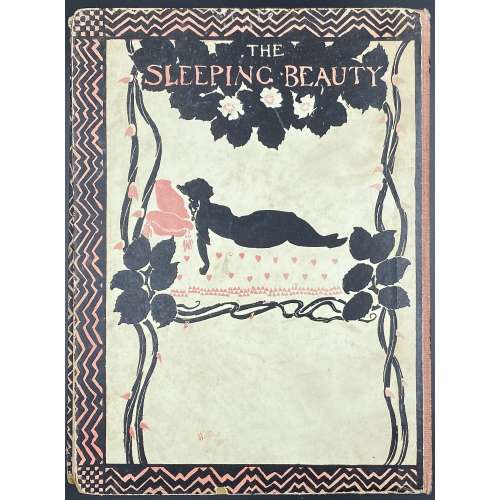 Title: THE SLEEPING | BEAUTY | TOLD BY C S EVANS | AND ILLUSTRATED BY | ARTHUR RACKHAM | LONDON WILLIAM HEINEMANN | PHILADELPHIA J B LIPPINCOTT Co || T.p. verso: LONDON WILLIAM HEINEMANN, 1920. Pagination: [1, 2] – h.t. / advert., [3, 4] – “WH” publisher’s device / frontis., [5, 6] – pictorial t.p. / publisher, year, [7, 8] – silhouette girls / Briar rose w/pasted offset ill., [9] 10-110 [2] – imprint / blank]. Collation: 8vo; B-G8, 3 double-leaf 3-colour woodcut illustrations extraneous to collation, in-text woodcuts. Illustrations: 25 full-page silhouettes, comprising 9 in colour (frontispiece and 4 double plates)--and 16 in black (including 4 double illustrations); one mounted coloured plate; silhouette head- and tailpieces and other silhouettes throughout the text, in black. Binding: Quarter cloth with black lettering, pictorial boards, pictorial endpapers. Size: 26 x 19.5. 1st edition. Inscription to h.t.: "To Dear Julia, Xmas 1947."
Title: THE SLEEPING | BEAUTY | TOLD BY C S EVANS | AND ILLUSTRATED BY | ARTHUR RACKHAM | LONDON WILLIAM HEINEMANN | PHILADELPHIA J B LIPPINCOTT Co || T.p. verso: LONDON WILLIAM HEINEMANN, 1920. Pagination: [1, 2] – h.t. / advert., [3, 4] – “WH” publisher’s device / frontis., [5, 6] – pictorial t.p. / publisher, year, [7, 8] – silhouette girls / Briar rose w/pasted offset ill., [9] 10-110 [2] – imprint / blank]. Collation: 8vo; B-G8, 3 double-leaf 3-colour woodcut illustrations extraneous to collation, in-text woodcuts. Illustrations: 25 full-page silhouettes, comprising 9 in colour (frontispiece and 4 double plates)--and 16 in black (including 4 double illustrations); one mounted coloured plate; silhouette head- and tailpieces and other silhouettes throughout the text, in black. Binding: Quarter cloth with black lettering, pictorial boards, pictorial endpapers. Size: 26 x 19.5. 1st edition. Inscription to h.t.: "To Dear Julia, Xmas 1947." -
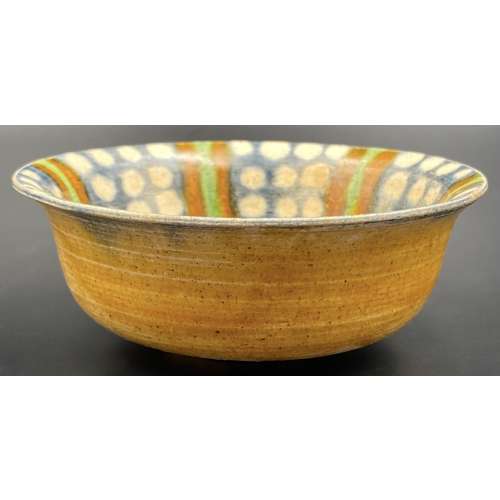 Small stoneware cup with rounded sides raising from a short foot to an inverted rim; glazed inside with a green and brown six-petal design on a blue background with creem dots. Amber glaze outside, blue bottom, foot unglazed. Dia: 10 cm; H: 4 cm.
Small stoneware cup with rounded sides raising from a short foot to an inverted rim; glazed inside with a green and brown six-petal design on a blue background with creem dots. Amber glaze outside, blue bottom, foot unglazed. Dia: 10 cm; H: 4 cm. -
 Iron tsuba of round form, tapering from centre to the rim, decorated with eight roundels – circular emblems of flowers and/or family crests (mon) made of cast brass, pierced and chiselled in kebori, and with flat brass inlay (hira-zōgan) of water plantain (omodaka) and seaweed all over the plate. Hitsu-ana outlined in brass. Four positive silhouette roundels are 3-, 6-, 9-, and 12 – pointing crests/flowers; four negative silhouette roundels – bellflower, cherry and plum blossoms. Yoshirō school (Kaga-Yoshirō). Unsigned. The Momoyama or early Edo period, end of the 16th to the first half of the 17th century (1574-1650). Size: H: 88.3 mm; W: 88.7 mm; Thickness 4.0 mm (Seppa-dai), 3,2 cm (rim). Other Kaga-Yoshiro tsuba in this collection: TSU-0334: 7.7 cm; TSU-0342.2017: 89.6 cm; TSU-0344: 8.1 cm; TSU-0329: 8.0 cm; TSU-0376.2018: 8.1 cm; TSU-0379.2018: 8.2 cm. We see that the usual size is about 8 cm; larger pieces, such as this one and TSU-0342.2017 dedicated to Hachiman, are rare. Article about Yoshiro tsuba.
Iron tsuba of round form, tapering from centre to the rim, decorated with eight roundels – circular emblems of flowers and/or family crests (mon) made of cast brass, pierced and chiselled in kebori, and with flat brass inlay (hira-zōgan) of water plantain (omodaka) and seaweed all over the plate. Hitsu-ana outlined in brass. Four positive silhouette roundels are 3-, 6-, 9-, and 12 – pointing crests/flowers; four negative silhouette roundels – bellflower, cherry and plum blossoms. Yoshirō school (Kaga-Yoshirō). Unsigned. The Momoyama or early Edo period, end of the 16th to the first half of the 17th century (1574-1650). Size: H: 88.3 mm; W: 88.7 mm; Thickness 4.0 mm (Seppa-dai), 3,2 cm (rim). Other Kaga-Yoshiro tsuba in this collection: TSU-0334: 7.7 cm; TSU-0342.2017: 89.6 cm; TSU-0344: 8.1 cm; TSU-0329: 8.0 cm; TSU-0376.2018: 8.1 cm; TSU-0379.2018: 8.2 cm. We see that the usual size is about 8 cm; larger pieces, such as this one and TSU-0342.2017 dedicated to Hachiman, are rare. Article about Yoshiro tsuba. -
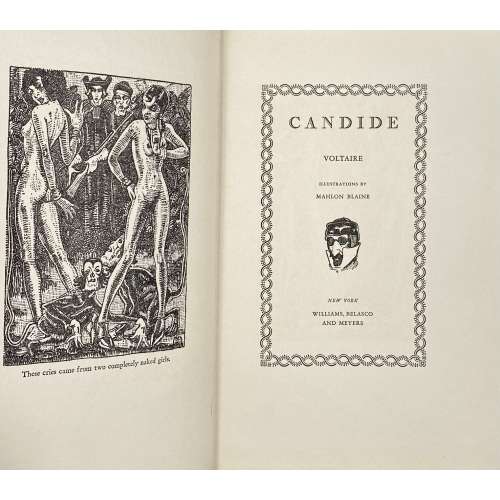 Title (chain border): CANDIDE | VOLTAIRE | ILLUSTRATIONS BY | MAHLON BLAINE | {vignette} | NEW YORK | WILLIAMS, BELASCO | AND MEYERS || Title verso: (top) COPYRIGHT, 1930, BY WILLIAMS, BELASCO & MEYERS || (bottom) PRINTED IN THE UNITED STATES OF AMERICA | BY J. J. LITTLE & IVES COMPANY, NEW YORK || Pagination:[1-6] 7-144, headpiece, frontispiece and 5 plates after Blaine’s pen drawings, within the pagination. Binding: 25 x 16.5 cm; blue cloth, blind-stamped frame, stamped-gilt lettering to front board and spine, thick wove paper, upper edge blue, fore-edge untrimmed, yellow vergé endpapers. Arouet, François-Marie [Voltaire] (French, 1694 – 1778)– author. Woolf, Herman Irwell [Chambers, Dorset] (British, 1890 – 1958) – translator. Blaine, Mahlon [Hudson, G. Christopher] (American, 1894 – 1969) – illustrator. Williams, Belasco and Meyers (NY) – publisher. J. J. Little & Ives Company (NY) – printer. See the Cameo Classic reprint [LIB-2777.2021].
Title (chain border): CANDIDE | VOLTAIRE | ILLUSTRATIONS BY | MAHLON BLAINE | {vignette} | NEW YORK | WILLIAMS, BELASCO | AND MEYERS || Title verso: (top) COPYRIGHT, 1930, BY WILLIAMS, BELASCO & MEYERS || (bottom) PRINTED IN THE UNITED STATES OF AMERICA | BY J. J. LITTLE & IVES COMPANY, NEW YORK || Pagination:[1-6] 7-144, headpiece, frontispiece and 5 plates after Blaine’s pen drawings, within the pagination. Binding: 25 x 16.5 cm; blue cloth, blind-stamped frame, stamped-gilt lettering to front board and spine, thick wove paper, upper edge blue, fore-edge untrimmed, yellow vergé endpapers. Arouet, François-Marie [Voltaire] (French, 1694 – 1778)– author. Woolf, Herman Irwell [Chambers, Dorset] (British, 1890 – 1958) – translator. Blaine, Mahlon [Hudson, G. Christopher] (American, 1894 – 1969) – illustrator. Williams, Belasco and Meyers (NY) – publisher. J. J. Little & Ives Company (NY) – printer. See the Cameo Classic reprint [LIB-2777.2021]. -
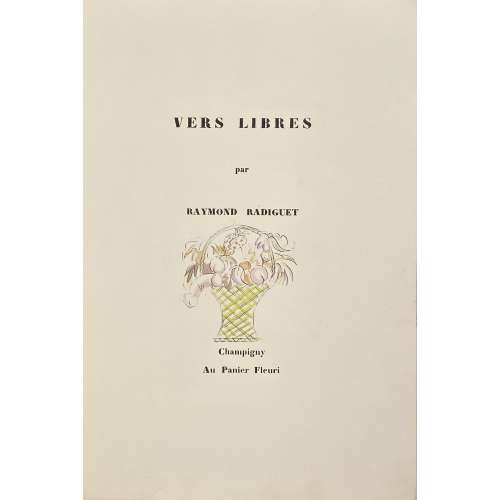 Unbound, unpaginated album (28.5 x 19.5 cm) with 22 leaves (11 folded sheets 28 x 38 cm each), printed on thick wove paper watermarked Arches with text and 27 vignettes, in a 29 x 20 cm slightly beige slipcase. Publisher’s original flapped cream wrappers, lettering to front over the vignette: VERS LIBRES | par | RAYMOND RADIGUET | Champigny | Au Panier Fleuri || Half-title: VERS LIBRES over a ribbon covering a stick, garland, and flute. Title: VERS LIBRES | par | RAYMOND RADIGUET || {vignette} | Champigny | Au Panier Fleuri || Section title: VERS LIBRES over a vignette of a girl in a hat and with an umbrella on a beach. Illustrations: Cover vignette, frontispiece, tail- and a headpiece for the Note, and vignettes (total 27 illustrations) attributed Rojan (Feodor Rojankovsky). Poems: Chat perché; Champigny, Usée, Les fiancés de treize ans, Saison, Le petit journal, Ébauches, II Cinématographe. Edition: 1st; Limitation on the last page: the total print run of 125 copies, this copy is № 18. Illustrations printed in black and stencil-coloured (au pochoir). Catalogue raisonné: Dutel 2592; Nordmann (2): 450. Dutel counts vignettes as 27, Christie's (Nordmann) as 28. Dutel writes it is printed on vergé de Hollande (laid paper), our copy is as per Nordmann, on wove Arches. No one mentions the slipcase. The number of leaves: 20 per Dutel, 22 per Nordmann. Why Cinématographe numbered II is unclear. Contributors: Raymond Radiguet (French, 1903 – 1923) – author. Feodor Rojankovsky [Rojan; Рожанковский, Фёдор Степанович] (Russian-American, 1891 – 1970) – artist. Comparison of 1935 and 1937 editions reveals that, as usual, the earlier the better.
Unbound, unpaginated album (28.5 x 19.5 cm) with 22 leaves (11 folded sheets 28 x 38 cm each), printed on thick wove paper watermarked Arches with text and 27 vignettes, in a 29 x 20 cm slightly beige slipcase. Publisher’s original flapped cream wrappers, lettering to front over the vignette: VERS LIBRES | par | RAYMOND RADIGUET | Champigny | Au Panier Fleuri || Half-title: VERS LIBRES over a ribbon covering a stick, garland, and flute. Title: VERS LIBRES | par | RAYMOND RADIGUET || {vignette} | Champigny | Au Panier Fleuri || Section title: VERS LIBRES over a vignette of a girl in a hat and with an umbrella on a beach. Illustrations: Cover vignette, frontispiece, tail- and a headpiece for the Note, and vignettes (total 27 illustrations) attributed Rojan (Feodor Rojankovsky). Poems: Chat perché; Champigny, Usée, Les fiancés de treize ans, Saison, Le petit journal, Ébauches, II Cinématographe. Edition: 1st; Limitation on the last page: the total print run of 125 copies, this copy is № 18. Illustrations printed in black and stencil-coloured (au pochoir). Catalogue raisonné: Dutel 2592; Nordmann (2): 450. Dutel counts vignettes as 27, Christie's (Nordmann) as 28. Dutel writes it is printed on vergé de Hollande (laid paper), our copy is as per Nordmann, on wove Arches. No one mentions the slipcase. The number of leaves: 20 per Dutel, 22 per Nordmann. Why Cinématographe numbered II is unclear. Contributors: Raymond Radiguet (French, 1903 – 1923) – author. Feodor Rojankovsky [Rojan; Рожанковский, Фёдор Степанович] (Russian-American, 1891 – 1970) – artist. Comparison of 1935 and 1937 editions reveals that, as usual, the earlier the better.1935 1937 